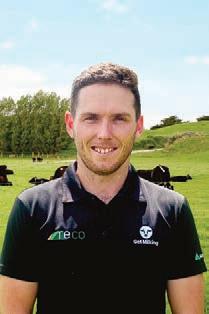Brakenridge leaves industry transformed
$4.95 Incl GST

$4.95 Incl GST
GLOBAL food and fibre sectors are facing significant changes to production systems, and the pace of change will only increase over the next 15 years, says Lain Jager, co-chair of the think tank Te Puna Whakaaronui. Food value chains are decarbonising and becoming more sustainable, which Jager said reflects a focus on country emission obligations, trade agreements and the demands of large food businesses and their customers.
Other factors producers need to consider are the increasing focus of consumers on the sustainability credentials of food and the vast amounts of investment in technology.
Jager acknowledges the sector is in the middle of once-in-ageneration change, which is difficult for all, especially farmers.
We need to work together to find a way forward because change is upon us, and growling at the government will not make it go away.
“The right question for the New Zealand Government and farmers to ask is ‘How can we work together most effectively to negotiate the change ahead of us?’, not ‘How can we go slower?’”
Jager warns pressure will come on food value chains to innovate and evolve to reduce greenhouse gas emissions as energy and transport make progress decarbonising their sectors
“An important idea is that the NZ Government is not the prime driver of change and can’t protect NZ farmers from the change that is coming.”
Te Puna Whakaaronui is funded by the Ministry for Primary Industries and is tasked with providing independent thought leadership on issues facing the primary sector.
Another challenge is that dairy and sheep and beef farmers operate very different farming systems and economic models.
“He Waka Eke Noa and the pathways to decarbonisation look very different to dairy farmers and sheep and beef farmers,” Jager said.

The consequences of that are playing out in the current tension in the livestock industry, but Jager said the government can rightly claim it has worked to partner with the sector to confront agricultural greenhouse gas emissions.
That is mixed comfort to many farmers who, he said, can’t see a financially viable and practical

Continued page 3
Brooke, Aimee and Matthew Scarborough with Rosie the Cowbassador at the Owl Farm open day. The farm, created by St Peter’s School and Lincoln University, is run in conjunction with partners DairyNZ, Ballance, Farm Source, PGG Wrightson Seeds and Westpac.


Engaging with farmers will be a ekey priority as Beef + Lamb New Zealand considers its response to the industry organisation’s annual meeting remits, new board chair Kate Acland says.

NEWS 4
Meat exporters wearily return to the ever-changing Indonesian market after a virtual trade standstill.
MARKETS 13
Scientists urged to meaningfully engage with Māori values and knowledge in resource management work.
OPINION 27
The Gibbs family in Te Horo manage to mix horticulture, livestock and agritourism on their 48ha block.
PEOPLE 30
EDITORIAL
Bryan Gibson | 06 323 1519
Managing Editor bryan.gibson@agrihq.co.nz
Craig Page | 03 470 2469
Deputy Editor craig.page@agrihq.co.nz
Claire Robertson
Sub-Editor claire.robertson@agrihq.co.nz
Neal Wallace | 03 474 9240



Journalist neal.wallace@agrihq.co.nz
Gerald Piddock | 027 486 8346
Journalist gerald.piddock@agrihq.co.nz
Annette Scott | 021 908 400


Journalist annette.scott@agrihq.co.nz
Hugh Stringleman | 09 432 8594

Journalist hugh.stringleman@agrihq.co.nz
Richard Rennie | 027 475 4256
Journalist richard.rennie@agrihq.co.nz
Nigel Stirling | 021 136 5570
Journalist nigel.g.stirling@gmail.com
PRODUCTION
Lana Kieselbach | 027 739 4295 production@agrihq.co.nz
ADVERTISING MATERIAL
Supply to: adcopy@agrihq.co.nz
SUBSCRIPTIONS
0800 85 25 80 subs@agrihq.co.nz
PRINTER
Printed by Stuff Ltd
Delivered by Reach Media Ltd
our
Andy Whitson | 027 626 2269 Sales & Marketing Manager andy.whitson@agrihq.co.nz
Steve McLaren | 027 205 1456 Auckland/Northland Partnership Manager steve.mclaren@agrihq.co.nz

Jody Anderson | 027 474 6094 Waikato/Bay of Plenty Partnership Manager jody.anderson@agrihq.co.nz
Andy Whitson | 027 626 2269
Lower North Island Partnership Manager andy.whitson@agrihq.co.nz
Omid Rafyee | 027 474 6091 South Island Partnership Manager omid.rafyee@agrihq.co.nz
Debbie Brown | 06 323 0765 Marketplace Partnership Manager classifieds@agrihq.co.nz
Grant Marshall | 027 887 5568 Real Estate Partnership Manager realestate@agrihq.co.nz
Andrea Mansfield | 027 602 4925 National Livestock Manager livestock@agrihq.co.nz
Dean and Cushla Williamson
Phone: 027 323 9407 dean.williamson@agrihq.co.nz cushla.williamson@agrihq.co.nz
Farmers Weekly is Published by AgriHQ PO Box 529, Feilding 4740, New Zealand Phone: 0800 85 25 80 Website: www.farmersweekly.co.nz
ISSN 2463-6002 (Print) ISSN 2463-6010 (Online)
Happy Valley Nutrition has announced it has raised A$637,000 ($685,000) for working capital as it works towards constructing its factory in Ōtorohanga.
HVM made the announcement on the Australian Stock Exchange on April 3; trading on its stock was suspended in late March pending the announcement of the capital raise. HVM’s processing factory will supply infant formula and other dairy products.
Ballance Agri-Nutrients chief executive Mark Wynne has resigned after nine years in the role.

His last day will be in late September. Company chair Duncan Coull said it had been an “absolute pleasure” working with Wynne, who has been an “incredibly effective” leader.
Agribusiness leader Mike Petersen will become a director and chair of Scales Corporation, replacing Tim Goodacre.
Petersen has over 30 years of management and governance experience in the primary sector and is a director of ANZCO Foods, Kelso Genetics and digital marketplace developer Nui Markets. He is a former Special Agricultural Trade Envoy and chair of Beef + Lamb New Zealand.
CAVEATS: Joel Murphy says farmers thinking about solar developments should carefully consider where they may want their land to be in 30-plus years’ time, once the lease is up.
Early estimates are that Cyclone Gabrielle wiped out up to $1 billion in farm revenue and caused a further $1bn in damage. An initial report by the Ministry of Foreign Affairs and Trade says the economic impact is likely to exceed the $2bn-$4bn of the 2016 Kaikōura earthquake, making the cyclone New Zealand’s costliest nonearthquake natural disaster.
Back in 1860, exporting meat to the other side of the world seemed about as easy as nailing gravy to the ceiling. But a few determined kiwis took the bull by the horns and now our grass-fed beef and lamb is sought-after all around the globe.
At AFFCO, we see the same pioneering spirit alive and well in farmers today. We’re playing our part too – exploring every opportunity to take New Zealand’s finest farm-raised products to the world.
pioneering spirit tells us nothing’s out of reach
Continued from p1
pathway forward and consequently feel disenfranchised.
“Understandably their reaction is to question whether change is really required, the pace of change and whether changes can be implemented in practical way.”
He said anger and denial will not take the sector forward.
“We need to work together to find a way forward because change is upon us, and growling at the government will not make it go away.”
Jager said farmers and governments must partner with leading exporters because they are close to global customers and consumers, and can calibrate the pace of change.
He said there has been some “outstanding leadership from our industry good organisations” during a decade of trying times, and it is vital to ensure they are well resourced and supported to do the job needed of them in the next 15 years.
“Technology is a critical component in evolving our farming systems.

“Twenty years from now we’ll look back at today’s carbon footprint and be proud of what we’ve achieved.”
MORE: SEE P23-25
farmers flicking lambs off more regularly.”
UPWARD pressure on schedules and movement in overseas trading is boosting confidence in winter lamb markets.
AgriHQ analyst Reece Brick said the lamb price is showing growing upward potential as sentiment among lamb exporters continues to improve week by week.
A lift in procurement pressure has processors boosting their schedules, this week rising an average 10c a kilogram.
“Supply is a little tight and this should give farmers some confidence that procurement pressure will boost farmgate prices a bit further,” Brick said.
There are early glimpses of autumn and winter lamb contracts with at least one processor at $7.60/kg rising to $8.00/kg for the second half of June.
The South Island lamb kill is tracking well ahead of the North Island.
Normally at this time of the season the southern kill is about 465,000 ahead of the north. This season it is tracking almost 900,000 ahead.
Overseas markets are starting to move in the right direction, prompting confidence among exporters.
“One surprisingly strong market has been the European Union, where it appears the mild winter and population becoming less spooked by the Ukraine war has aided consumption over recent months.
“The movement into warmer months has led to a seasonal lift in demand too.”


In contrast the United Kingdom remains slow going with unreliable shipping schedules also affecting arrival times for Easter and Ramadan sales worldwide.
China is tracking upwards with spot market sales easily up versus a month ago, though a lot of lamb remains tied to deals signed a while ago, so there is a wide spread in prices quoted on some items.
There is a definite strength in the store lamb market “but it isn’t out of control”, Brick said.
“Talk of strong winter lamb contracts have boosted trader confidence and taking into account the positive market signals there has been no shortage of demand and a number of solid buyers have swallowed tallies up.”
lambs, and from what we are seeing overall there will be good numbers of lambs going into the winter,” Higgins said.
Meanwhile the store lamb market continues to strengthen in the south as demand outweighs supply in Canterbury with the 7500 lambs offered for sale not enough to fulfill demand at Temuka on Monday.
IMPORTANT: Lain Jager, co-chair of Te Puna Whakaaronui, says an ‘important idea is that the NZ Government is not the prime driver of change and can’t protect NZ farmers from the change that is coming’.

“Processing companies are not too concerned on pricing at the moment with late autumn and early winter supply expected to stay strong in the North Island given the store market was so strong in summer,” Brick said.
“It’s harder to call in the South Island, it’s not so backed up, in fact up to date, given the summer dry in many parts that saw

PGG Wrightson South Canterbury livestock manager Joe Higgins said there’s been a definite bounce in store lambs, and the pricing is spiralling with saleyards a hive of activity over the past two to three weeks.
“Because of the pricing a lot of lambs are coming into the saleyards now in preference to paddock sales,” Higgins said.
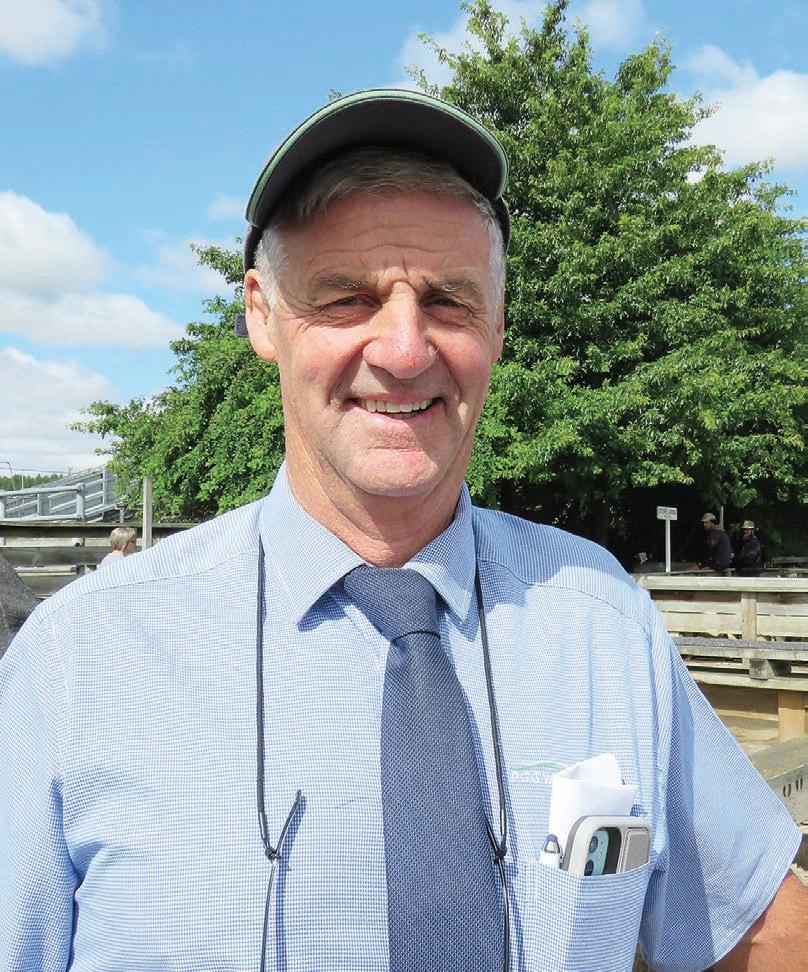

“Store lambs will follow the schedule and pricing is encouraging at the moment.
“Every week we are getting more lambs coming to the [Temuka] saleyards from all over Canterbury as well as a lot coming up from Central Otago.
“The vibes we are getting are positive and buyers are acting accordingly.
“Of specific note is the clear $5 premium being paid for shorn
The small but hungry gallery of buyers bid strong in a whole new and fresh outlook on the lamb market as grass keeps growing and buyers hunted down lambs as winter approaches. Increased demand and less lambs saw average values spiral 18c/kg with the hammer falling regularly over $4/kg.
The prime market held firm on the previous week with heavy types selling from $150-$170 and medium $130-$150.
This should give farmers some confidence that procurement pressure will boost farmgate prices a bit further.
Reece Brick AgriHQ
ENGAGING with farmers will be key priority as Beef + Lamb New Zealand considers its response plan to the industry organisation’s annual meeting remits, new board chair Kate Acland says.
“As the board considers what changes will be made, it wants to engage with farmers around the country to ensure it reflects the views of farmers and gets any resets right,” she said.
BLNZ has released the results of voting on the nine remits undertaken by levy payers as part of the annual meeting process.
A 10th remit of no confidence
in the board was lost.
Acland said while the results are non-binding, they are an indication of farmer sentiment and the board must consider the results and show how it will respond.
“The remits received and the mood at last week’s annual meeting show there are some farmers who are unhappy out there and we need to listen to their concerns and respond appropriately.
“There is concern among farmers about the cumulative impact of layers of legislation and the relentless scale and pace of proposed regulatory change.”

The board is already doing work towards what has been proposed but Acland acknowledged there are areas where more work is needed.
“Farmers have raised some legitimate concerns; we are listening and acknowledge there’s always more BLNZ could do to improve.”
The remits show two clear themes.
advocating on and why BLNZ has taken the positions it has, making sure we have good processes in place to ensure our positions reflect our farmers’ views and that farmers are involved in the process.
“We need to spend time face to face with farmers, listening to concerns and we need to ask how they want to have these conversations in the future.”
Two of the nine remits were specifically about He Waka Eke Noa (HWEN), and a further two covered related areas of best-practice consultation and advocacy.
Sentiment was fairly obvious on some of the remits, but there was no clear consensus on the issue of remaining within HWEN.
“That’s understandable, as this issue is hugely complex and has significant ramifications for farmers.
Kate Acland BLNZ“The board has recognised that we need to have deeper conversations with our farmers about some of the key issues we’re
Farmer’s proposal 1: (all proposals weighted farmer vote)
New Beef and Lamb NZ chair Kate Acland says farmers have raised some legitimate concerns and the board is listening.
That BLNZ reports back on the impact of the “weighted” vote on its decisions and outcomes.
– for 35,122 (66.31%); against 14,659 (27.68%); abstain 3184 (6.01%)
Farmer’s proposal 2:
That BLNZ & NZMB board members and their contact details be displayed on the BLNZ website.



“I think it also reflects the fact that we still don’t have all the information in terms of what the government is proposing. But it’s something we will be talking to farmers about.”
The board expects to provide an update on its next steps in the next couple of weeks.
 Staff reporter NEWS
Staff reporter NEWS
Leadership
NORTHERN South Island farmer director Kate Acland says she is humbled to have been elected chair of the Beef + Lamb New Zealand board.
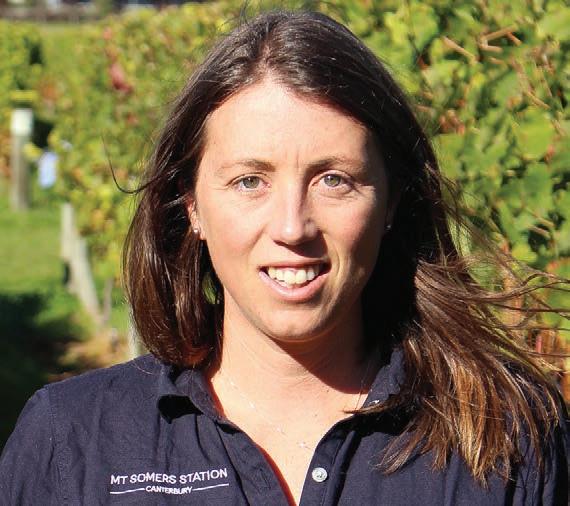
Acland, who is BLNZ’s first female chair, was elected by the board at the conclusion of BLNZ’s annual meeting in New Plymouth.
Previous chair Andrew Morrison’s term as a BLNZ director concluded at the end of the meeting, following the election of Geoffrey Young as the new Southern South Island farmer director.
“This is an exciting opportunity to represent farmers and the

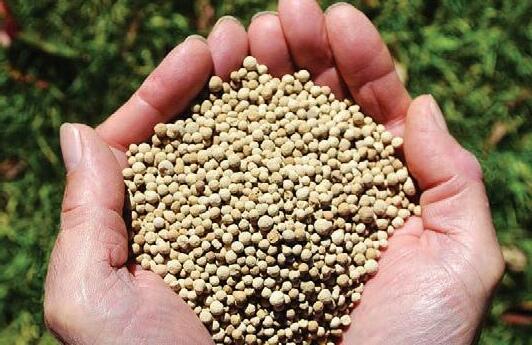
sector I’m enormously passionate about,” Acland said.
“I’m personally optimistic about the future. New Zealand has a great history of innovating and adaptation, but right now farming is tough, and farmers are facing unprecedented challenges and change. I look forward to leading the organisation that helps farmers through that change.
Morrison was thanked for his contribution at the annual meeting, with Acland noting his mana and leadership, and his significant service to the industry over the past nine years. There was a standing ovation at the end of his farewell speech.
Acland holds a bachelor’s degree in viticulture and oenology and a master’s degree
in applied science, having majored in farm management consultancy at Lincoln University.

Before moving to her husband David’s family farm, she developed her own vineyard and winery, Sugar Loaf Wines, and a processing and export business in Marlborough.
The couple have three children and employ 30 staff over a diverse group of businesses, including Mt Somers Station. They run 30,000 stock units in a mixture of sheep, beef and deer, as well as an 850-cow dairy unit.
Mt Somers Station also includes a standalone honey operation with 500ha of native vegetation and beech forest supporting 400 hives that produce mānuka, honeydew and clover honeys.
– for 44,083 (83.10%); against 5957 (11.23%); abstain 3008 (5.67%)
Farmer’s proposal 3:
That BLNZ clearly de nes and communicates the role of the farmer council and local farmer councillors and displays their contact details on the website.
– for 38,719 (72.94%); against 10,952 (20.63%); abstain 3,411 (6.43%)
Farmer’s proposal 4:
That the BLNZ farmer council and other farmer reference group members are used by the organisation as the “voice” for grassroots farmer feedback, they are not restrained in any way by BLNZ.
– for 33,045 (62.21%); against 16,324 (30.73%); abstain 3747 (7.05%)
Farmer’s proposal 5:
That BLNZ does not at any time commit to a policy that may have signi cant rami cations for levy payers without prior best-practice consultation with levy payers that would solicit and seek their agreement to proceed. – for 40,596 (76.23%); against 10,323 (19.38%); abstain 2338 (4.39%)
Farmer’s proposal 6:
That BLNZ immediately engage an independent review analysing the process of how BLNZ currently assembles a mandate that re ects the wishes of its levy payers and the e ectiveness and transparency of all advocacy. – for 31,207 (58.75%), against 19,419 (36.56%); abstain 2490 (4.69%)
Farmer’s proposal 7:
That BLNZ exits the HWEN partnership immediately in order to advocate for sheep and beef farmers to achieve a more sustainable and equitable emissions reduction proposal in an unbiased and unconstrained manner. – for 25,988 (48.85%); against 23,566 (44.29%); abstain 3650 (6.86%)

Farmer’s proposal 8:
That BLNZ commits to ongoing, unrelenting advocacy for a di erent pricing mechanism to what was recommended in the HWEN proposal (and the subsequent response for the government).
– for 35,188 (66.02%); against 10,488 (19.68%); abstain 7621 (14.30%)
Farmer’s proposal 9:
That during any advocacy negotiations where there is perceived or actual con ict between advocating for the sheep and beef sector versus the dairy industry, this con ict must be declared by BLNZ and the advocacy position taken will be from a sheep and beef sector standpoint.

– for 20,554 (62.01%); against 11,551 (34.85%); abstain 1042 (3.14%)
The nal return percentage is 22.44%, being 3366 votes received from 14,999 farmers, of which 57.66% voted online and 42.34% voted by post or at the annual meeting
We need to spend time face to face with farmers and we need to ask how they want to have these conversations in the future.
 Craig Page PEOPLE Weather
Craig Page PEOPLE Weather
SOME farmers and growers could take a decade to fully recover from the impact of Cyclone Gabrielle, says the Rural Support Trust.

“The rest of the country thinks everything is fine,” said RST Hawke’s Bay co-ordinator Jonathan Bell.


“It’s out of the news now, and now we’re worried about a whole lot of other things. But the clean-up in Hawke’s Bay will take years and some farms will take almost a decade to recover.”
Bell said rural support has had teams in the area since February, offering any support it can to affected farmers. The trust has the option of using more people from outside the region if required and is also working closely with local health providers to ensure everyone’s needs are met, particularly mental wellness support.


“We are dealing with some people now. It’s a reasonable number of people but we believe more will come in time.
“Someone made the comment to me the other day that covid-19 spread everyone apart, but tropical Cyclone Gabrielle is bringing everyone together.
“That’s communities and also service providers, which is pretty good.”
Bell said the trust offers an 0800 number for people wanting help, 0800 787 254. Calls are “triaged” and a decision made about which facilitator is best placed to deal with that person.
“It’s a one-on-one conversation to ascertain where they are at, what are the issues they’re having and what sort of support do they need.
“Then we go and find the people. It may be counselling, a consultant to discuss the viability of their business, or an independent financial person to discuss loan structures.





“Anything that they need at all and we will try and find the right people to put in front of them.”
Bell said the worst-hit growers are in limbo, waiting to see if their businesses remain viable and what the future holds for them.
For some the decision has been made for them, because there is no orchard left.
“Then there are the ones who have had some damage. They could be looking at $300,000 to $380,000 a hectare to replace trees.
“You won’t get a decent income for five years and may not be able to replant this winter depending on the depth of the silt.”

Bell said the region is still
waiting on a structure and recovery plan, which needs to be led by the local council, central government and other agencies.
There has already been some financial support from the government but “we’d like to think there is more” .
Volunteers are still helping out on some farms and orchards but other property owners have opted to bring in contractors to clear tracks, culverts and fences.
Bell knows of farms that have lost 2-7km of fencing.
If you multiply that by the 1000 large beef and lamb farms in the region, he said, it shows what a mammoth task repairs are.
“The impact to Hawke’s Bay from a farming financial point of view is huge. But it’s also from an infrastructure point of view, with roads and bridges still out.
“This is a marathon. We’ve got a long way to go.
“The adrenaline has worn off and people are realising the enormity of what is in front of them.”


WOOLWORKS’ flood-damaged Awatoto wool scour plant is being rebuilt and expects to be operating again from November.
In the interim New Zealand’s largest wool scour is ramping up capacity at its two other sites at Clive in Hawke’s Bay and Washdyke, Timaru, adding double shifts to help bridge the shortfall in capacity.
Co-owner David Ferrier said flooding and silt has damaged buildings, electrical systems, high density wool presses, drainage and water infrastructure, and contaminated five to six million kilograms of wool, which have been, or are being, assessed by insurance companies.

A new sorting floor is already under construction and new wool grease recovery and effluent systems have been ordered.
Ferrier said staff have been working in horrid conditions, removing silt and cleaning buildings.
In a note to customers, WoolWorks quotes expert advice that the natural absorbency of wool means there is a high likelihood bales that were under flood water would have

absorbed toxic odours from decomposing materials and sewage. Those odours are likely to remain present in the end product despite further treatment.
Ferrier said it is important for pipeline integrity and Brand NZ that contaminated wool is appropriately disposed of.
Awatoto handles 1100tonnes/week of greasy wool. Clive handles 550t/ week and Washdyke 1200t/week. Both were untouched by the weather and will take up the overload. Wool is being transported south to Timaru, where there is plenty of storage.
Ferrier said the late shearing season has slowed the season anyway, and while February’s flooding caused further problems, he is confident the changes will temper any significant delays.
WoolWorks chair Rob Hewett said the message for farmers, brokers and merchants is that Awatoto will reopen later in the year, but in the meantime WoolWorks has a solution to ensure the continued scouring of wool.
Last year WoolWorks processed more than 100m/kg of wool and is budgeting for a similar amount this year, which Ferrier said he is confident will be achieved.









MORE than 1000 attendees from 32 countries where avocados are grown visited the large Harbour Edge orchard development at Tapora, North Auckland, over two days before the 10th World Avocado Congress began.

Some 30 minutes west of Wellsford on the shore of Kaipara Harbour, the 400ha former dairy farm on sandy soils is being converted into one of the largest avocado businesses in New Zealand.
Over 150ha have been planted in 40,000 trees, now ranging in age up to seven years, after extensive recontouring, drainage, drilling, and irrigation, and with artificial and natural shelter in 1ha cells.
A further 150ha are suitable for avocados and the rest for citrus planting, after a pause of a year or two to assess the productivity and success of development to date, said part-owner Glen Inger.

The Harbour Edge principals are Glen and Joanne Inger and Hamish and Robyn Alexander, along with Glenn Ashwell as a new part-owner.
Glen Inger is the former chief executive of the Warehouse retail group; he has big farming and forestry interests in his home region and is also involved in the expansion of Mercer Mushrooms in North Waikato.

“The synergies between glasshouse growing and fruit orchards are creating a circular system which starts with the right land use and delivers productivity and sustainability,” he said.
Harbour Edge manager Nick Common said current plantings are on three spacings – 7m between rows and 3.5m between trees, 7m by 5m, and 6m by 4m.
Inger said afterwards that 6m by 4m is now the preferred spacing, with tree height kept at 4m for predominantly ground picking and machinery access, along with maximum light penetration.
Cyclone Gabrielle dropped about 20% of the current crop on the ground and caused a lot of leaf damage and wind rub on fruit, Inger said.
Common said the annual costs of the orchard were $10,000 to $15,000/ha for the trees up to four years old and $20,000/ha thereafter.

Until now productivity has been
around 10t/ha but he is expecting to double that yield this year, when the development will begin to be profitable.
Sprinkler irrigation at 50litres/ hour puts on 1.5mm/hr for fourhour periods each day, enabling fertigation without nutrient leaching, he said.
Latin American congress goers were particularly interested in the moderate climate at sea level less than a kilometre from the harbour, which doesn’t have the extremes of temperatures and droughts they are managing.
For Harbour Edge, all domestic and export marketing is done by NZ Avocado Collective, the grower-owned entity selling fruit from the three largest avocado businesses in Northland and New Zealand.
The chief executive of the collective, Jarrod Redwood of Whangārei, told the World Congress that currently half of all fruit goes on the domestic market. From the export half some 30% goes to Australia and 70% to southeast Asia, north Asia and the United Arab Emirates.
Picking begins in June, exporting in July and most fruit has been harvested by the end of September, leaving only a remnant for customer requirements over summer months.
Growth in demand in the domestic market is good and their export development targets are Asian countries like Vietnam and Thailand, Redwood said.
NZ as a whole produces 7-8
million trays and the collective is presently marketing 500,000 trays.
It was formed by Harbour Edge (40,000 trees growing to 80,000), foreign-owned King Avocado in the Far North (200,000) and another Far North group of Largus, Mapua and Tiri (300,000) under the management of Ian Broadhurst.
In the future Harbour Edge itself is projected to harvest 500,000 trays annually.
Part-owners of Harbour Edge, the Alexanders, have just sold their other big horticultural enterprise, Southern Paprika Ltd (SPL) at Warkworth.
SPL, which was a 25-year joint venture between the Alexanders and the Levarht Produce Company of the Netherlands, was sold in March for an undisclosed amount to Market Gardeners (MG), the Christchurch-based co-operative produce wholesaler.
Featuring 27ha of modern glasshouses across five developments, housing up to 1 million capsicum plants and producing 7 million kilograms a year, SPL is one of the largest hothouse operations in NZ.
It has 160 full-time equivalent staff members, many of whom are Pacific Islanders with residency or in NZ under the Recognised Seasonal Employment scheme.

The co-operation between Harbour Edge and SPL will continue, which includes sharing RSE workers, post-harvest avocado handling in Warkworth and having spent compost medium from the SPL glasshouses trucked to Harbour Edge for mulching around trees.
SPL also has very good relationships with supermarket chains and produce wholesalers, Inger said.
The synergies between glasshouse growing and fruit orchards are creating a circular system which starts with the right land use and delivers productivity and sustainability
THE biggest fall in the Global Dairy Trade price index in a year has vindicated
Fonterra’s caution in trimming the farmgate milk price range by 20c a couple of days earlier.

The range is now $8 to $8.60/kg milksolids and the GDT index has fallen in the first April auction by 4.7%, including anhydrous milk fat down 7.2% and whole milk powder down 5.2%.


The latest weakness raised fears of a market collapse similar to the 8% drop in the first May auction last year, which at the time was the largest fall in seven years.

But analysts think the weakness is only temporary and that dairy prices will bounce back later this year.
NZX dairy analysts Amy Castleton and Alex Winning said the magnitude of the fall in the latest GDT auction was a little greater than expected.
The futures market had signalled a fall in milk powder prices of about 3%.
“Fonterra now has the best information on the sales and costs for the season to date.

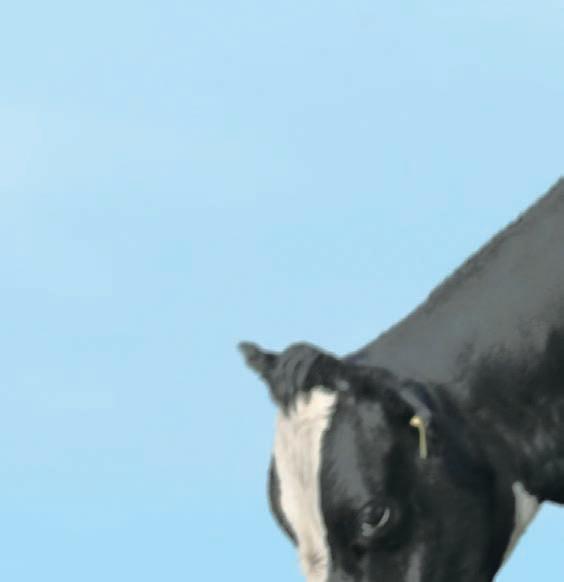
“In other words, there’s not much to be gained from secondguessing Fonterra’s forecast.”



Fonterra chief executive Miles Hurrell said GDT prices have either declined or remained flat since the previous milk price forecast in February.
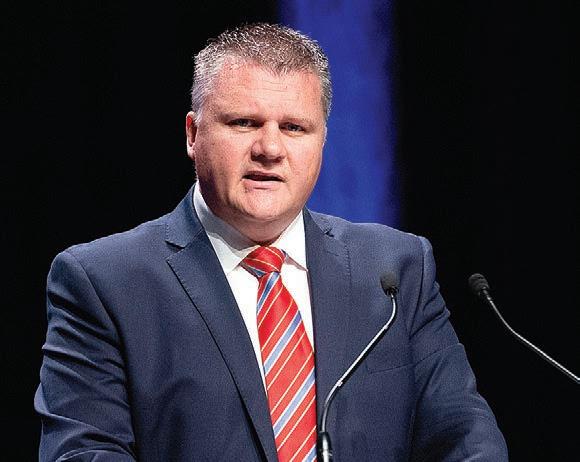
“Skim milk powder prices have fallen 7% since February, and whole milk powder prices have not lifted to the levels assumed in the previous forecast.
“There are two main drivers behind this.
“The first is that demand from China for whole milk powder has not yet returned to expected levels.

“The second is that northern hemisphere milk production, and therefore skim milk powder stocks, are increasing as they head into their spring flush.
MAGNITUDE: NZX dairy analyst Amy Castleton says the magnitude of the fall in the latest GDT auction was a little greater than expected.
Westpac senior agri economist Nathan Penny took a further 10c off his milk price prediction, now $8.30.
He has trimmed 45c in the past two weeks.
“With these factors weighing on demand, prices have not increased to the levels required to sustain a higher forecast farmgate milk price for this season.”
ON TRACK: Fonterra chief executive Miles Hurrell said the divestment allows the co-op to reduce debt and return around 50 cents per share and unit, which is $800 million, to farmer owners and unit holders.

FONTERRA has completed the sale of its Chilean Soprole business to Gloria Foods.
Fonterra chief executive Miles

Hurrell said the divestment is a significant milestone in the implementation of Fonterra’s strategy and allows the co-op to reduce debt and return around 50 cents per share and unit, which is $800 million, to farmer owners and unit holders as previously announced.
“We remain on track for a record date for the proposed capital return in late September 2023,
with cash to be received by our farmer owners and unit holders the following month,” Hurrell said.


The divestment of Soprole comprises the sale of shares in a Fonterra-owned holding company.
When announced in November 2022, the sale was subject to a number of conditions, including receipt of regulatory approvals and commencement of an irrevocable public tender offer process in Chile for the outstanding shares in Soprole not already owned by Fonterra.
Those conditions have now been satisfied and final transaction proceeds remain subject to customary post-completion adjustments.

ARECORD financial result last year is enabling Silver Fern Farms to make the largest capital investment in its 75-year history.


Every element of its business will receive attention in the coming few years, from technology and capital at its 14 sites through to information and data collection systems and in-market investment.
Chief executive Simon Limmer said the $189.3 million aftertax profit for the year to December 31, 2022, up from $103.8m a year earlier, is an endorsement of its plate-topasture strategy.
SFF has now had several consecutive years of financial stability despite multiple challenges, and Limmer credits its strategy, the support of farmers and staff, and business agility to find solutions to a variety of challenges.
“Ultimately what we are producing is resonating with consumers,” Limmer said.


“By telling our story well and connecting with consumers, we
will continue to extract more value.”
Investment would be made into plants, given that several are over 100 years old; information systems to integrate the supply chain and accelerate its strategy; and in further understanding markets and consumers by gathering data and analysis.
Limmer said much of the technology will have to be developed to suit the business as it is not available off the shelf, such as extending the traceability of meat
back to farms. In the year under review, SFF had a $500m increase in revenue to $3.273bn for the year ($2.749bn).
Earnings before interest, tax, depreciation and amortisation (Ebitda), including a share of associate earnings, were $301.3m ($179.7m).
It will pay a fully imputed dividend for the year of $76.9m ($46.7m), which includes an interim dividend already paid of $31.9m.
Shareholders in SFF Ltd, the
operating arm of the business, are SFF Co-operative and China-based Shanghai Maling.
Total livestock premiums paid for the year were $10.3m, up from $6.9m.
SFF Co-operative reported a net profit of $94.1m ($51.5m).
It will receive a dividend of $38.45m ($23.4m) of which it will pay shareholders $33.5m ($18.4m).
This will be distributed through a fully imputed dividend of 23.2c/ share payable to all ordinary and rebate shareholders.
It includes a 10.1c/share interim dividend which has already been paid.
It will also pay a fully imputed patronage reward of 21.6c/share payable on qualifying shares to supplying shareholders based on supply during 2022.
The co-op will retain $5m in reserve.
Limmer said in an interview that New Zealand food production systems meet consumer demands but need to continuously evolve.
“Markets are demanding that and we have to maintain our social licence to operate in NZ. Our response to climate change will move us in that direction.”
Farmer suppliers will be rewarded for meeting these standards through programmes
such as zero carbon beef, which is being expanded.
SFF is continuing to reduce its carbon emissions and is also part of a joint venture with the government to increase research, on a dollar-for-dollar bases, to reduce greenhouse gases from livestock.
SFF has invest $4m in the project, which will boost work underway at the Pastoral Greenhouse Gas Research Consortium.
Looking ahead, Limmer said after some upheaval in the last quarter of last year when prices fell sharply, there are signs markets are recovering and he is optimistic it will not be short lived.
“The underlying demand is strong and leads me to be optimistic for the medium term.”
THE government is backing a startup that has developed software to monitor and control water infrastructure, by coinvesting almost $1 million to enable on-farm trials around New Zealand.
Dairy Farm Water Management is commencing a trial of its newly developed water management software, Water to Milk, on 15 farms across Taranaki, Canterbury and Otago, with assistance from the Ministry for Primary Industries’ Sustainable Food and Fibre Futures (SFF Futures) fund.
Agriculture Minister Damien O’Connor said the government is continuing its work with farmers to lift sustainability through this potential one-stop shop, hi-tech solution to support sustainable water management on dairy farms.
“The project’s technology partner, IoT Ventures, has developed the prototype technology – now we need to demonstrate how it works in real farmers’ hands.
“Improving water use efficiency, helping farmers save time, and reducing the impacts of land use can only be good for our environment, while leading to improved productivity on farms.
Water to Milk uses the LoRaWAN communication protocol, and delivers a fully integrated system of sensor hardware, software and analytics.
LoRaWAN is a Low Power Wide Area networking protocol designed to wirelessly connect battery operated “things” to the internet
in regional, national or global networks.
“LoRaWAN provides long range access and lower power use, so farmers working in more remote areas with no cellphone coverage or patchy internet are able to use it,” O’Connor said.
He said the solution Dairy Farm Water Management has developed with IoT Ventures can monitor and control different parts of water infrastructure.
“This can include control of sprinkler irrigators and pumps, and monitoring of dams, tanks, soil moisture, and water flow.
“The ‘Run Off’ module being delivered this year as part of the project will help with the storage,
management, and impact of effluent.
“This technology can help identify and locate leaks to save water on farm and reduce the time it takes to identify and resolve an issue.
“We’re also looking to help automate external reporting of the measurements it’s taking, and submit real-time reports to a farmer’s local regional council and other stakeholders.
“Farmers see themselves as stewards of the land and are keen for technology that helps them demonstrate this. This is a goal of our Sustainable Food and Fibre Futures programme,” O’Connor said.
Providing four successive generations of investors with cashflow through regular returns, and a pathway to nancial freedom through long-term capital growth.
Better still, we’ve done this by providing New Zealand businesses and their sta with quality, sustainable premises from which to make their mark on the world.
We’ve been using our property and investment nous to help Kiwis get ahead for over 30 years.
Farmers see themselves as stewards of the land and are keen for technology that helps them demonstrate this.Damien O’Connor Agriculture minister Gerald Piddock TECHNOLOGY Water LOOKING UP: Silver Fern Farms Chief executive Simon Limmer says underlying demand is strong and that ‘leads me to be optimistic for the medium term’.
We have to maintain our social licence to operate in NZ. Our response to climate change will move us in that direction.
Simon LimmerSilver Fern Farms

THE man who has been the driving force behind transforming the New Zealand fine wool industry says his passion is such that while he is stepping down, he is not stepping out.

After 27 years as chief executive with the New Zealand Merino Company (NZM), John Brakenridge is calling it a day.
He said his time in the industry has felt like a 27-year sprint, but he has no regrets and is confident the time is right to take a step back.
In his last few weeks transitioning out and preparing to hand over the reins he has a lot to reflect on, but as much, he said, also to look ahead to for the NZ wool industry in general.
“It’s been a career of passion for me,” Brakenridge said.
The fine wool industry has completely transformed over the past three decades.
The story, he said, is how can that be relevant to others leading the industry over the next five years.
“Go back to the beginning of NZM and applaud the growers,” he said.
“It takes a phoenix approach; a coat of paint would have been failure.”
The biggest change has been the move to contracts versus auction.
“How we shifted from commodity into longer-term transactions that, for the likes of Icebreaker, go out for 10 years.
“It’s been a game-changer for growers who had the confidence in the model to take it on.”

Contracts helped lift prices and keep them stable so farmers had certainty around the returns they were going to get.
For growers, NZM put solid ground over the rising and falling
tide of commodity prices, creating a sexy sales story around Kiwi Merino wool as forward contracts replaced auctions with clothing brands like Icebreaker and designer textiles Smartwool in the United Sates and John Smedley in Europe.
As he reflects on what has been achieved, Brakenridge said it’s been nothing short of “fantastic”.
Moving into active and outdoor wear helped.
When the farmer-established organisation Merino NZ was set up there was no market for merino active and outdoor wear.
“Look at it now, it’s worth millions. Not only that, but it’s also still growing.”
NZM brought about transformation by blowing open the merino industry’s secretive supply chain from farmers and wool buyers to processors, manufacturers and retailers.
It takes vision, energy and determination to lead transformation, but most importantly it’s about people, he said.
“Success and sustainability are about the people. The lessons we have learnt could be very relevant for different pockets of growers not only for strong wool but also wider industry in NZ very much in need of transformational change.”
Having been involved with the establishment of Te Hono – a partnership between the leaders of NZ’s food and fibre sector companies, iwi and government agencies – Brakenridge said this was the melting pot of discussion that brought strategic leadership from outside New Zealand.
“It is the intersection of natural capital, the ability to grow wool, grow animals, and grow horticulture.
“We have set ourselves a mission to capture more value for NZ from our primary sector products, leading the charge to transform
Our primary sector missed the understanding of the importance of people.
John Brakenridge NZ Merino
the way the sector operates from being predominantly focused on export volume under a commodity-based trading model, to a value-based model producing and exporting products of higher consumer value.
“Looking to the future
technology, and the investment around that, is going to be the driver.”
Key to that, Brakenridge said, is the importance of people.
“Often missed in this country is the behavioural science.
“Our primary sector missed the understanding of the importance of people, the important third leg of the stool. Where NZM has stood out is on the human side, one that I see as very important in the future.
“The gap will be about human connection and the story we wrap around that.”
Wool has an incredible origin story but there is a need to
recognise the value of connecting consumers, he said.
“The more we can build an understanding on how to connect with people, whether fine wool or strong wool, it needs a sophisticated approach to connect with the right global consumers, marketers and the right brands.
“And we must champion our growers; there are incredible men and often unsung women producing these incredible fibres.”
There needs to be empathy coming right through the value chain from growers to consumers.
“At NZM we have always had a constant sense of urgency to be at the front of the curve to be the best, protecting growers and capturing opportunity.”
As he hands over the business, Brakenridge acknowledged a significant change in more recent years in the quality of talent in the industry.
“We’ve had three record years, we’ve got an incredible platform and an amazing team, so from my perspective it’s time to step aside and allow new talent to come in and take the industry forward.
“There is a bright future.”
Where does he go from here?
“I have been given the advice, like you see on the train platforms: mind the gap.
“My passion is such I will continue to sit in the intersection of natural capital and technology.
“I am not chasing anything down, there’s phenomenal opportunity and capacity to do better, to wrap around stories of branding and people connection because that’s what proves to be the multiplier for what we can achieve for our product.
“We can produce the wool but it’s what you wrap around the wool that brings returns to growers.
“It’s all about people and we are losing sight of that. If we can turn that around and embrace and understand that we can really stand out.”

















Halter has increased its capital by more than 200% to accelerate further development and concentrate on the local market of dairy farmers, company founder Craig Piggott says.
“Our No 1 priority is investing in our farmers. This money will go directly towards delivering a system that helps farmers run more productive and sustainable operations.”
The Series C fund raising of $85 million was led by United States venture capital firm Bessemer Venture Partners and included existing investors DCVC, Blackbird, Prometheus Ventures, Rocket Lab’s Peter Beck and Icehouse Ventures.
Two former rounds raised $7m and $32m in 2018 and 2021 respectively.
Beck was Piggott’s former employer in electronics engineering before Halter was launched seven years ago.
More than 100,000 cow collars were deployed in 2022, Piggott said, but he cited commercial sensitivity on further uptake numbers.
Halter leases collars to dairy farmers and makes variable monthly subscription charges according to location, herd size and the features farmers require. According to farmers who are using them or have obtained quotations, the rentals are something over $100 a collar each year.

Piggott said Bessemer is one of the largest ethical venture capitalists in the US and was attracted to Halter by the sustainability aspects, which are transforming farming.
Now with 180 employees, Halter will continue to develop and incorporate new features into its product that assist farm management, recording, reporting and planning.
It helps farmers to be more precise with pasture management, thereby lessening the need for imported feed, and assists them in targeting nitrogen applications. All data generated and transmitted by the cow collars to the smart phones and digital devices of farmers goes also to the company for recording and
analysis, he said. More data improves detection of heat and illness, for example.
Halter monitors data 24/7, ensuring that its collars are working properly and contributing to the great body of knowledge.
Halter employees, along with farm consultants, veterinarians and agricultural researchers, are analysing all information generated by the collars to add to the product functions and verify the livestock management improvements.
Leading farmers who are users are also feeding back their experiences, including the savings made.
“We are the technological platform for dairy farmers, saving them labour, time and money while improving pasture utilisation, reducing the carbon footprint, and improving animal health and reproductive performance,” Piggott said.
Virtual fencing replaces conventional fencing as cows learn to respond to sound and vibration signals and shift themselves around the farm.
In response to an online petition calling for a ban on “shock control” collars, Piggott said every farmer knows a happy cow is more productive and that new technologies and products need
We are the technological platform for dairy farmers, saving them labour, time and money while improving pasture utilisation, reducing the carbon footprint, and improving animal health and reproductive performance.
Craig Piggott Halterhigh animal welfare standards. Halter has been reviewed and approved by AgResearch’s animal ethics committee and no third party or farmer user can control the frequency or strength of collar guidance signals.
Piggott said some elements of the Halter package have been seen in other countries and other products but not the whole platform, born out of his dairy farm upbringing and technical training.
“We are world leaders in dairy farming and there is no better place for Halter to be.
“Halter will concentrate on the domestic market first, then look to overseas and other livestock applications.”
If your property was impacted during this severe weather event and you need support finding temporary accommodation, we can help.
If your property was impacted during this severe weather event and you need support finding temporary accommodation, we can help.
The Temporary Accommodation Service is assisting displaced people to find suitable temporary accommodation.
The Temporary Accommodation Service is assisting displaced people to find suitable temporary accommodation.
Register your details with us and a staff member will call you in a few days to help you find suitable temporary housing. Our staff can also provide guidance on how to access support services such as insurance advice and financial assistance.
Register your details with us and a staff member will call you in a few days to help you find suitable temporary housing. Our staff can also provide guidance on how to access support services such as insurance advice and financial assistance.
There will be a cost for temporary accommodation, but you can contact the Ministry of Social Development to see if assistance is available to meet this cost.
There will be a cost for temporary accommodation, but you can contact the Ministry of Social Development to see if assistance is available to meet this cost.
If you are the tenant or landlord of a rental property, www.tenancy.govt.nz has information on your rights and obligations after a natural disaster.
If you are the tenant or landlord of a rental property, www.tenancy.govt.nz has information on your rights and obligations after a natural disaster.
For more information and to register your details, please go to: www.tas.mbie.govt.nz
For more information and to register your details, please go to: www.tas.mbie.govt.nz
If you are not able to complete the form online, or wish to discuss your requirements, please call 0508 754 163 Our Service Centre operates:
If you are not able to complete the form online, or wish to discuss your requirements, please call 0508 754 163 Our Service Centre operates:
Monday–Friday, 8:30am–5:00pm Saturday–Sunday, 9:00am–5:00pm
Monday–Friday, 8:30am–5:00pm Saturday–Sunday, 9:00am–5:00pm


MEAT exporters are wearily returning to the Indonesian market after trade came to a virtual standstill at the beginning of the year.
In February New Zealand’s Ministry of Foreign Affairs and Trade (MFAT) warned food exporters of new paperwork and technical requirements for the Indonesian market.
It also reported disruption to exports due to the redistribution of responsibilities for issuing import permits among Indonesian government ministries.
“Some New Zealand importers have reported that they are still awaiting a response two months after applying for registration,” MFAT said.

Trade statistics show meat exports to Indonesia crashed in December to $109,000, from $4.2 million the same month the year before, and were even lower in January at just $69,000, compared to $3m in January 2022.
The situation improved somewhat in February, with exports of $1.8m, but that was still well short of February 2022’s $9.8m.
Indonesia has a long history of throwing bureaucratic obstacles in front of food importers to protect its own farmers from competition.
Meat Industry Association chief executive Sirma Karapeeva said she could not yet say whether the latest disruptions were a resumption of that trend.

window then that is a good thing because it makes everything a lot more streamlined and sensible,” she said.
Meat exporter ANZCO’s general manager of sales and marketing, Rick Walker, said import permits had begun to flow again recently and he expects to see a further pick-up in trade as official statistics for March are reported.


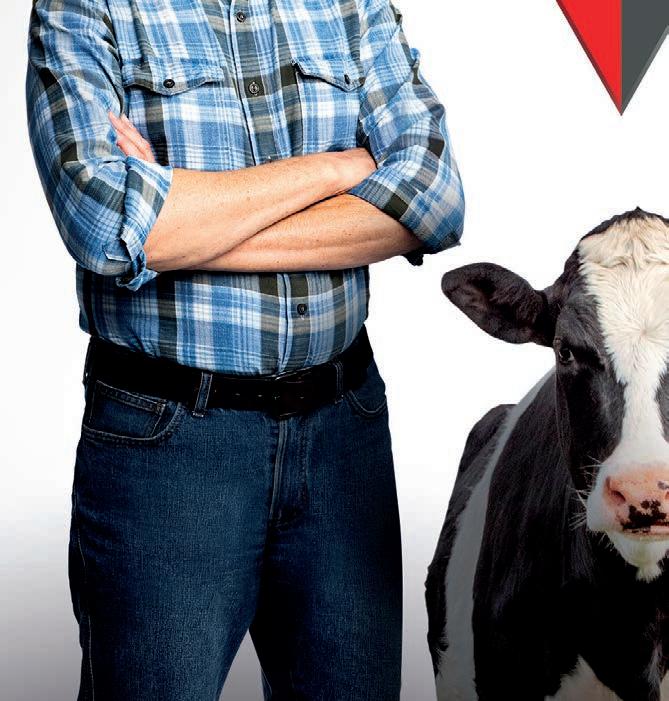

“Our customers were stuck and they could not order product and we could not ship it.

“Those permits have started to come back into circulation over the past month or so and our customers are back in the market and it is business as usual.

“It is just one of the joys of dealing with Indonesia, unfortunately.”
IMPLICATIONS: Meat Industry Association CEO Sirma Karapeeva says the MIA ‘needs to get its head around’ the latest changes to import regulations from Indonesia.
need to get our head around exactly what it means and what the impact for us would be.”
Shifting responsibility for import permits from the ministries of trade and agriculture to a new economic agency could be positive for exporters in the longer term.
“If it is a transition to a single
NZ and the United States successfully challenged Indonesia over rules blocking the import of beef and horticultural products at the World Trade Organisation in 2016.
NZ had challenged Indonesia’s ban on the importation of secondary cuts, accounting for 80% of its beef trade with the country, as well as rules requiring
importers to apply for permits every three months and source designated amounts of locally produced beef before import permits could be granted.
In 2011 the Indonesian market was NZ’s second largest for beef.
Last year it slipped back to seventh, between Canada and Australia.
Walker said Indonesia is still a market worth persevering with, however.
“Some of the products we send to Indonesia are very specific and


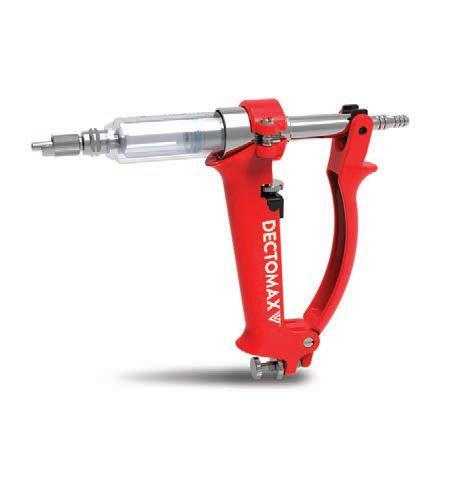
we don’t have homes for them even in the likes of China.
“Quite often we get into the position of where we have to decide are we going to keep on making that specific product and put it in the freezer and sit on it for however long we don’t know often.
“But the alternative is throwing it down the hole and it goes into rendering and it is a loss of value.
“So it is frustrating but when the market is there it is a market worth having.”

“Welamb
It is frustrating but when the market is there it is a market worth having.
Rick Walker ANZCO
water into Lake Opuha and then down the Opuha and Opihi rivers to the sea.”
ASOUTH Canterbury irrigation company has committed to an environmental strategy to fund plans for its shareholders to create a biodiverse corridor stretching from the mountains to the sea.

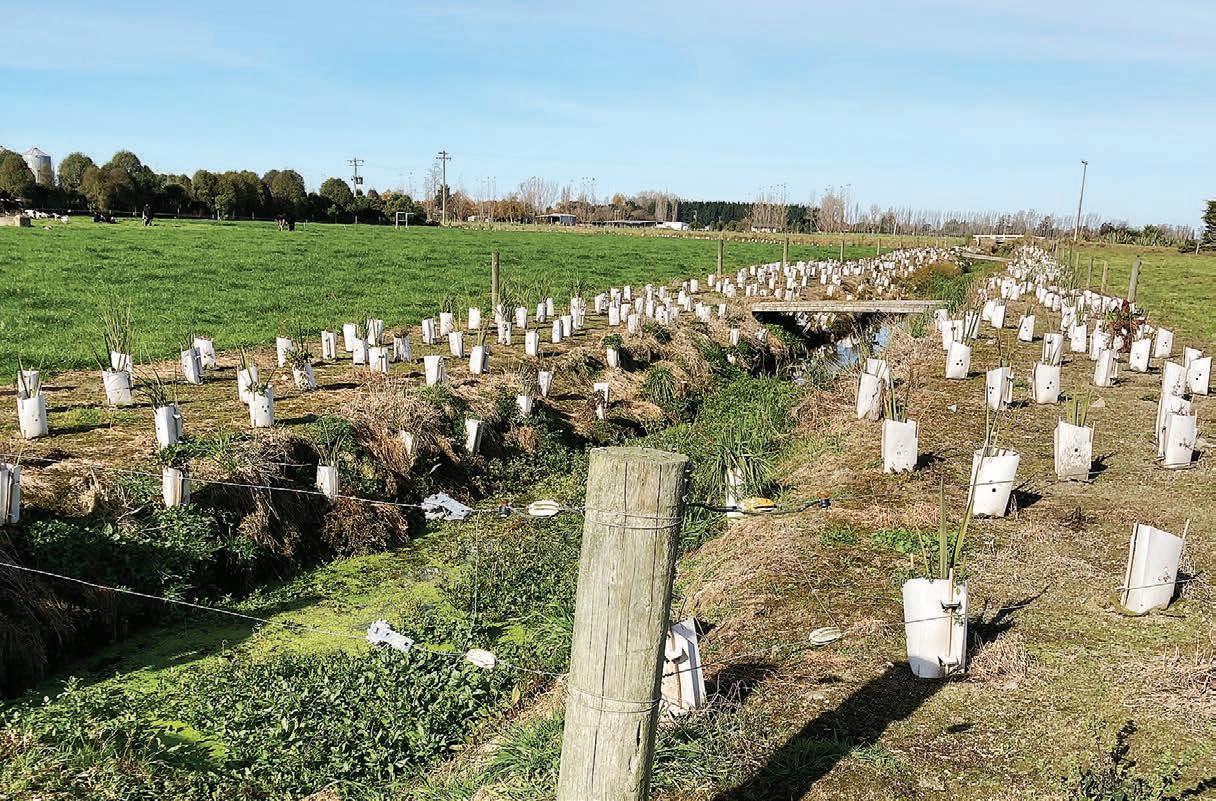
Opuha Water Ltd (OWL) will support local environmental initiatives, working with shareholders to identify biodiversity opportunities on its properties, with the long-term goal of creating the biodiverse corridor centred on local waterways.
The OWL board has approved a biodiversity budget of $128,000 to fund the first year’s work as part of its long-term 20- to 30-year strategy.
In what is believed to be a first in New Zealand, the irrigation company is paying for the writing of biodiversity plans for its shareholders’ properties, with more than 95 plans encompassing 35,000ha of land completed to date.
“The fact that our shareholders have access to water for their business is a privilege we, and they, don’t take for granted,” OWL chair Ryan O’Sullivan said.
“Our biodiversity strategy will ensure there is commensurate give and take between us and the environment.”
The scheme focuses on protection, restoration, enhancement, and creation of biodiversity on shareholders’ properties; commitment to biodiversity on land owned by OWL; and stakeholder partnerships in biodiversity projects.
“Opuha’s catchment runs from the hills and mountains feeding
“This is already a continuous corridor of mixed biodiversity from in-river eco-systems to the surrounding land owned by shareholders.
“The rivers have biodiversity values which we can help protect and improve, and many of our farmers’ properties have existing natural elements that can be enhanced to strengthen the biodiversity values of the whole corridor.”
There are also opportunities to create new environmental features within the corridor as well.
Each year, OWL plans to budget for assisting shareholders to undertake documented actions in their biodiversity plans.
“In future, biodiversity plans will be become a module of an integrated farm plan covering all aspects of farming including employment, health and safety, animal welfare and environmental considerations.”
O’Sullivan said OWL owns land around Lake Opuha and its scheme infrastructure that provides a fantastic opportunity for biodiversity enhancement.
“Native planting of Lake Opuha Island is the priority, followed by strategic areas around Lake Opuha and the downstream weir creating a biodiverse environment in a popular recreational area that everyone can access and enjoy.
“This is a long-term commitment by OWL and its shareholders.”

“We are looking at a 20- to 30-year plan and for some projects it will take that long before environmental benefits are fully realised.
“It will also come at a cost, which is why we are paying for biodiversity farm plans and contributing toward ongoing implementation projects,” O’Sullivan said.

The Opuha Dam, which is situated at the confluence of the North and South Opuha rivers 17km northeast of Fairlie, is an infrastructure project undertaken by the community of South Canterbury.
The overall project consists of a 50m-high earth dam with a single hydro turbine and a lake covering up to 710ha and storing more than 74 million cubic metres of water.
The lake provides water to maintain environmental flows in the downstream catchment and for irrigation as well as urban and industrial supplies.
Renewable hydro-electricity is generated with the water released from the dam.

The Opuha water scheme operates by releasing water into the Opuha River, which flows into
the Opihi River with irrigation takes from both the Opuha and Opihi rivers.
Although water is released from the dam to ensure the health of the river, irrigation water is also supplied to a number of subschemes of these rivers: Levels Plain, Kākahu, Tōtara Valley and Sutherlands, distributing the water through races and channels.
The water is pumped from these races and channels by the landowners, while other irrigators pump from the river either through galleries or adjacent bores.
Water is also supplied to the Timaru District Council for commercial and domestic purposes.







Following its first 10 years of operation, the scheme was purchased outright in 2008 by the farmer irrigators who are now 100% shareholders of the ownership company OWL.
The project has been immensely successful for the economic prosperity of the region, enabling the development of a robust agricultural sector covering a wide range of land use activities including dairying, horticulture and arable cropping, sheep, beef and deer and specialist seed growing.
New Zealand’s farmers and growers have been leading the way in good farming practices including fencing and cleaning up waterways, planting along rivers and protecting and reviving wetlands.
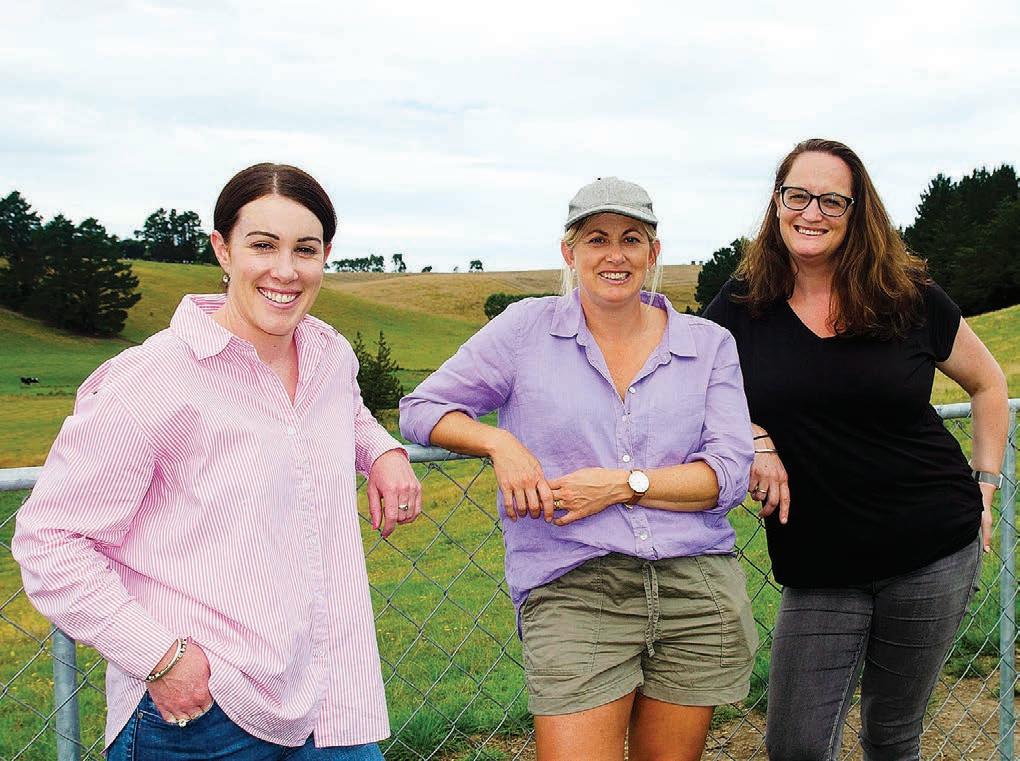
For many in rural Tairāwhiti, Hawke’s Bay, Northland and other areas a ected by the February oods, it will be devastating to see the impact of ooding on their land.
We will continue to provide advice and support for farming communities, iwi, and councils as part of the recovery, and for freshwater farm plans as they are rolled out in other regions.

We are taking the time to listen to locals so that freshwater regulations are easier to put into practice.
From my own regional council experience, I know how hard it can be to make improvements to freshwater.
However, I’ve also seen great results in waterways and wetlands when communities get motivated.
Most of our regulations aimed at improving freshwater quality are already in place. Many farmers and growers will already have some sort of environment management plan through their primary sector group. These are a great start for the freshwater farm plan system when the time comes.
Healthy freshwater supports healthy communities, a healthy environment, and a healthy economy – Te Mana o Te Wai. The Essential Freshwater reforms were introduced in 2020 after several years of engagement and consultation with farmers, industry, iwi and


We recognise that one-size- ts-all often doesn’t work on farm. Freshwater farm plans will provide exibility for farmers to meet freshwater goals.
We’ve taken the time needed to ensure the regulations are practical and that people have what they need once implementation starts.
Bene ts of freshwater farm plans
Freshwater farm plans will encourage mitigations directly related to a farm’s environmental impact – a clear cause and e ect. They will provide farmers the exibility to nd
the right solution for their farm and catchment.
Many farmers and growers have, over the past few years, already put in place a farm environment plan or are part of an industry programme.
Freshwater farm plans will build on that great work – existing plans and/or programmes will continue to be used under the new regulations, and improvements made where necessary. A freshwater farm plan will also bring together many existing requirements and allow for better recognition of on-farm work to improve freshwater.
Most farmers and growers will eventually need a freshwater farm plan. While it could be months, or even years, before they come into e ect in your region, there are plenty of things you can do to get prepared.
If you already have a farm environment plan or are part of an industry assurance programme, keep doing what you are doing –we have been working with industry groups and providers to help them update their programmes.
Make sure you understand your local waterways, not only on your farm but also within your catchment.
• What are the key features?
• What are the pressures on freshwater?
• What e ects or risks do your farming activities have on freshwater?
Taking action now to address e ects/risks will be rewarded when you develop your freshwater farm plan:
• There are plenty of on-farm actions you can do now to address impacts.
• Think about what data and information you have, or can record, on your current actions to protect freshwater.
• Existing information, support and people are available to help you get started on your farm planning journey.
• Utilise your existing industry, catchment group, regional council and advisor networks.
Any farming enterprise with 20ha or more in arable or pastoral use, 5ha or more in horticultural use, or any combination of more than 20ha will require a plan.
Freshwater farm plans will be phased over the coming years, starting in mid-2023, with Waikato and Southland as the rst regions, with full implementation by the end of 2025.
The regional councils in Waikato and Southland have been working with the government to get ready for freshwater farm plan implementation.
hapu, community members, as well as regional councils (which have a key role in implementing the regulations in their areas).
Freshwater farm plans are a key part of the Essential Freshwater reforms and the last part of the package to be implemented from this year.
Key milestones over the next few months
• May – regulations likely to be publicly noti ed
• July/August – regulations apply in parts of Waikato and Southland
• Waikato and Southland regional councils start implementation (may be catchment by catchment)
We’ll provide more information on the timing in other regions in our next update.
Ministry for the Environment sta have been visiting farmers over the past few months to listen to on-the-ground views on freshwater farm plans and other policies. In early March Gin Loughnan, Agriculture, Policy Implementation and Delivery (left) and Sara Clarke, Director of Implementation (right), met with Herbert farmer Jo Hay to hear her views. Planting alongside waterways helps to reduce runo and contamination. Farmers will be able to include relevant riparian planting and fencing in a freshwater farm plan to show how environmental risk is being addressed on their property.ATAURANGA legal expert is reporting strengthening interest among farmers in solar energy developments, with multiple contracts already in play or nearing completion.
Joel Murphy, a partner with Tauranga law firm Holland Beckett Law, said that interest has strengthened on the back of some high-profile projects that have either kicked off or are about to.
They include the Harmony Energy project in north Waikato, the Lodestone project near Edgecumbe, the 105-megawatt Kowhai Park development at the Christchurch Airport, and the massive Todd Generation project on the Napier-Taupō highway. Option agreements have a three- to five-year trigger period for the developer to confirm the development is proceeding and he suspects some of the deals will see the development onsold “shovel ready” for another developer to complete the solar farm development.
“We are also being contacted by overseas entities who are interested in acquiring solar assets instead of developing,” Murphy
said.
“Overseas, countries are generally more mature in their understanding and appreciation of the role solar will play in sustainable generation.”
At present solar energy comprises only about 1% of New Zealand’s total energy supply, but estimates are this could be comfortably ramped up to nearer 10% over the coming decade.
In late March the National
With more larger scale players entering the New Zealand market, it is giving landowners confidence that this is a real investment opportunity, and not a short-lived speculation.
Joel Murphy Holland Beckett LawParty announced its renewable energy policy that included plans to double the amount of electricity produced by solar, wind and geothermal sources through removing red tape delays.
Murphy said interest largely continues to be focused in the North Island, partly due to the average higher electricity prices there, and from Canterbury
northwards in the South Island.
South Island interest has recently been buoyed by the Christchurch Airport Kowhai Park solar project, which will generate energy from a 300ha farm on land just behind the airport runway.
“With more larger scale players entering the New Zealand market, it is giving landowners confidence that this is a real investment opportunity, and not a short-lived speculation.”
Lease terms on the projects are capable of generating revenue ranging between $2500 and $6500 a hectare, often at a marked premium to its next most appealing use option.
Developers are typically seeking land within 10km of a main substation, and Murphy suspects many farmers will have already been door-knocked.
He urges anyone looking at signing documents with a solar developer to think carefully about where they may see their land being used once the 35-plus year period is up. He has recently published an article identifying some key matters that landowners should consider as part of their negotiations.
“You have to consider that if you are taking it out of dairying, it may be quite hard if not impossible to get the land back into dairying in the future, under current legislation and council regulations on nutrient
losses. But if it is marginal grazing land, the next best use may not be dairying, and the move to solar may stack up.”
Other opportunities include energy companies subdividing off the larger portions of a property, leaving a smaller portion for the owner to retain and live upon, possibly grazing livestock on the portion populated by panels.
Murphy is hopeful the government may at some point elect to provide carbon incentives to operators, similar to the “feetin tariffs” introduced in 2010 in the United Kingdom to induce the uptake of renewable low-carbon generation options.

He said the costs of the
technology continue to fall, but more slowly than in the past with projects split relatively equally between fixed raised solar panels and tilting operations that follow the sun.
Some farmers have questioned him on what would happen should the technology fail, or reach the end of its lifespan.
“The solar industry is still relatively new in the scheme of things, so most projects are yet to achieve full term and be decommissioned.
“However, we are seeing developers providing guarantees or bonds to provide comfort to land owners of this exact scenario.”
DATA from the Real Estate Institute of New Zealand shows that the median sale price per hectare for horticulture farms has decreased 30.3% over the past 12 months.
The price fell from $538,575 for the three months ended February 2022 to $375,140 for the three months ended February 2023.
The figures are based on the sales of 33 properties and 13 properties respectively.
The median horticulture farm size for the three months ended February 2023 was 5170ha.
accounted for 24% of all sales, finishing farms accounted for 24% of all sales and dairy support farms accounted for 7% of all sales. Those four property types accounted for 87% of all sales during the three months ended February 2023.
The data shows overall that rural land buyers are taking a cautious approach to land purchases on the back of higher interest rates, government uncertainty and rising farm input costs.
Overall, there were 305 farm sales in the three months ended February 2023, compared to 460 farm sales over the same three months last year.
lower sales volumes are following a lower than usual number of listings of farms for sale during summer and early autumn.
“However, the recorded sales are still at strong levels and comparable to 12 months earlier particularly for well-developed farm properties.”
O’Brian said the recent land grab for forestry seems to have slowed in most areas.
Buyer demand is still being noted in the horticultural and viticultural areas, with recent events in Hawke’s Bay possibly affecting buyer decisions in the short to medium term.

It takes a long time to gain all the expertise required to create the goodness the world needs. Here at Silver Fern Farms, we know our farmers have all that in spades.

The median price per hectare on sales of other farm types over the past 12 months all had increases. Dairy was up 8.9%, finishing farms values jumped 18.8% and grazing farms lifted 6.9%.
Grazing farms accounted for a 32% share of all sales for February. Dairy farms
The median price per hectare for all farms sold in the three months to February 2023 was $31,830 compared to $29,990 recorded for the three months ended February 2022. The median price per hectare decreased 2.9% compared to January 2023.
REINZ rural spokesperson Shane O’Brien said the

“Buyers are very mindful of market conditions as we head into an election year. The gloomy outlook for farm product prices this season and inflation affecting farm operating costs are squeezing profitability margins and debt servicing ability for farmers.
“While buyers are still present in all markets, they are being very considered in their buying decisions.”
HOW safe do you feel in a milking shed?
Golden Bay dairy farmer Deborah Rhodes is keen to find out, as part of her Master of Health Research into safety climate in dairy sheds.

Rhodes says the research, through Victoria University, is the first of its kind in New Zealand and she is urging dairy farm staff to contribute by completing a survey.
“Safety climate is specific to what people think about safety related to their training, the policies and practices, in what they do and where they work.
“It is what they all think as a whole that evolves the safety culture of a workplace, and safety climate can indicate what behaviours could occur.”
She also wants to determine if there is a difference between what employees perceive to be dangerous, compared with managers or employers.
Rhodes said milking sheds
have always had their own culture. It is where people come together throughout the day, cows congregate for milking, and is an area with many different hazards.
“It’s everything from boiling hot water to chemicals, to medications and the risk of stab wounds, contacts with antibiotics and all of the issues of interactions with animals, from crush injuries to kicks and scrapes.
“I was particularly interested in understanding what people perceive to be their risk within the dairy shed.”
Rhodes, who farms with her husband Tim in Collingwood, got into dairying in 2010 when both decided on career changes. After farm stints in Oamaru and North Canterbury, they eventually moved to Golden Bay and bought their own farm about eight years ago.
They now milk 125 cows, converting from twice-a-day milking to once.
“It’s taken a huge load of stress out of being able to owner-operate without any staff and allowed me to go back to academia,” Rhodes said.
With a pharmaceutical and nursing background, Rhodes decided to return Victoria University and study for a postgraduate diploma last year, specialising in workplace health and safety.
“My focus was in the dairy industry and looking at why there is a stable level of harm occurring in the industry. That hasn’t significantly decreased over a period of time.”
“ACC is still getting significant reporting of harm and it’s costing quite a lot of money.”
This year, she was encouraged to pursue her master’s.
As part of the research, Rhodes is sending out a survey, with support from DairyNZ and Federated Farmers, to dairy workers and employers.
“The survey needs to get in front of workers as much as it does managers or employers. It’s anonymous and can be done on your phone.
“Most of the harm happens in the shed. It might not be reported or it’s not bad enough that some might be off on ACC. But nevertheless it is still occurring and from a multitude of different hazards.”
BusinessDesk TECHNOLOGY Communications

STARLINK has launched a hardware discount for the New Zealand rural market, offering its standard hardware kit for $199 to those with eligible addresses.
The move comes following the dramatic loss of connectivity that many in rural areas felt when Cyclone Gabrielle hit the eastern coast of the North Island.
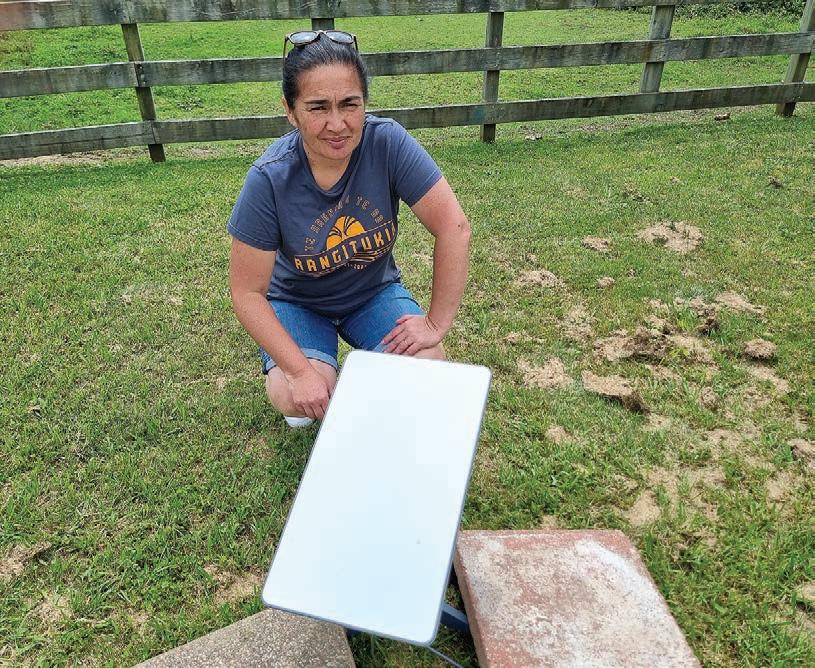
Starlink satellite internet ended up being used for emergency connectivity and
by many personal users who had access to emergency power.
On the Starlink website, the discount is stated as being 80%, down from $1040, although it seems few buyers have paid that full price as discounts are relatively common, if not at the level of the current rural-only special.
Some members of a private Starlink users Facebook group are even considering ordering a second kit to keep as a spare, or to extend their home network.
Retailer Noel Leeming is currently selling the kit at
$729, which is also the price that Starlink has set on its website for those in nonrural areas.

The monthly cost of a Starlink residential plan is currently set at $159 for unlimited data, although this is subject to change at the behest of Starlink’s parent company, SpaceX.
Starlink also offers a business plan but it requires specialist hardware that costs $4200 and comes at a higher-priced monthly plan for priority access to bandwidth that starts at $426 per month for 1 terabyte.
POD: Leeanne Morris, Ruatoria’s emergency response coordinator, with a Starlink pod.
Ruatoria has learnt over the course of many harsh weather events that communications are key.
STUDY:
The data will be used to help understand the full extent of the safety problem in dairying. Results will be categorised into seven different areas, such as management safety priority to ensure that workers trust in the safety systems in place, and safety justice.
“Safety justice is feeling you can report something and you are not going to get blamed for it and told you’re a dumbass.”
MORE:
The survey can be found at https:// vuw.qualtrics.com/jfe/form/ SV_0J6uDuq4ikoCBGS

AGRIBUSINESS in Schools has marked its 10-year anniversary with the aim of getting more students and schools involved in the programme.
The nationwide scheme to encourage students to consider career pathways in the primary sector has grown from a piloted plan at St Paul’s Collegiate in Hamilton to being in more than 100 schools across New Zealand.
It celebrated the anniversary at a function at St Paul’s on March 29.
Agribusiness curriculum director Kerry Allen said looking ahead, there is still plenty of unfinished business to focus on with the biggest task getting more schools and students into agribusiness.
“The New Zealand youth requires an understanding of agribusiness and the agri sector and its importance to New Zealand. They go hand in hand and there’s so many opportunities out there for them.”

Agribusiness in Schools evolved out of a 2013 St Paul’s parents survey that concluded it was not meeting the needs of its students with rural backgrounds in encouraging them to consider pathways into the primary sector.
The event at St Paul’s Collegiate recognised its principal and the 16 business partners that have supported the initiative over the past decade.

Allen said the programme will also look
to provide more support for agribusiness teachers and establishing regional hubs to help reach smaller, more remote areas. They will also work on trying to attract more urban youth to agribusiness and highlight career pathways available in the primary sector.
Improving collaboration between businesses and schools was another aim.
In the long term, Allen said, she wants to see Agribusiness in Schools at the scholarship level, as well as more emphasis on training teachers and sourcing people with background knowledge in the primary sector.
Event emcee and former St Paul’s principal Grant Lander said everybody could feel proud of what they have achieved with Agribusiness in Schools.
It was a public-private educational initiative that came from business rather than the government.
“It’s been a game-changer for our sector, but it hasn’t been an easy path, especially in those first three years.”
Greenlea Meats managing director
Tony Egan said the programme’s creation showed great leadership from St Paul’s, and revolutionised education for the primary industries to meet the challenges of a changing world.
The company has been a supporter of the programme since the beginning.
“Ten years on, these combined efforts are certainly cause for celebration. Thousands of students have benefited from this curriculum.”
It had aligned with university courses on
agribusiness subjects and had resulted in growing diversity and capability in business across the sector as a direct result of this initiative, Egan said.
“We are going to need this talent to confront issues such as climate change and to raise our future potential as a nation.”
Former agriculture minister and Meat Industry Association chair Nathan Guy helped facilitate government backing for Agribusiness in Schools in 2017.
He recalled meeting with Lander and others who pitched the idea to him at the Fieldays. Guy said he realised they were onto something quite big.
While the Ministry for Primary Industries was supportive, the Ministry for Education was not, with many thinking the primary sector was only about shearing sheep and milking cows, he said.
Guy facilitated a meeting with then education minister Hekia Parata.
“At the end of the meeting, she turned to her officials and said, ‘We’re going to do this, we’re going to give it a go’ and their heads dropped to the ground and I sensed then
that they weren’t necessarily supportive, but it was the start.”
Guy said the sector needs to keep rolling up its sleeves to ensure the programme keeps delivering.
“This is not driven out of Wellington, this is driven out of here and because of your contributions and connections it’s vitally important that you have a say in how you want this to run and operate.”

Westpac agribusiness analyst Kate Wilkins was one of the first students to study agribusiness in her final year at St Paul’s, in 2014.
Wilkins grew up on her parents’ kiwifruit orchard and said the programme highlighted the vast array of career options available within the primary sector.

She said the people and collaboration in the industry are what excite her about working in the sector.
“It’s shown in this room now where everyone’s working together towards the same goal. When you’re working in that sort of industry, it is pretty exciting.”
It takes a community to create the kinds of goodness the world needs. All around the country, our farmers create goodness for and with the communities they are part of.
law, shearer and woolhandler Ricci Stevens, are expecting their fourth child in late June – the woolhandler triumphing on Saturday night despite being 27 weeks pregnant.
SOUTHLAND shearer Leon Samuels broke a southern drought earlier this month, becoming the first South Island shearer to win either the New Zealand Shears or Golden Shears Open finals in three decades.
The win by 39-year-old Samuels on the last night of the three-day New Zealand Shears, was the first by a South Islander in the big Te Kuiti event since Edsel Forde, also from Southland, won the event in 1993.
Forde was also the last South Island shearer to win Masterton’s Golden Shears Open, in 1989.
The win was extra special, claiming the second New Zealand team machineshearing berth at the World Shearing and Woolhandling championships in Scotland on June 22-25, when Samuels will join Hawke’s Bay shearer Rowland Smith, who won his place by winning the Golden Shears Open for an eighth time four weeks ago, and who was third in the final, trying to match that tally in the Te Kuiti event.
It was a major championships for female shearers.
Samuels was first in the final, his 15min 6.05sec being one of the fastest times ever in a 20-sheep final in New Zealand, and claimed the title by 1.274 points from Northland speedster Toa Henderson, who finished second off the board in 15min
12.53sec, in his first New Zealand Shears, or Golden Shears, open final.
But it didn’t always go so well for Samuels, who tailed the first of six as Southern Hawke’s Bay farmer, Scotland international and former World and Golden Shears champion Gavin Mutch blasted his first three sheep out in 2min 6sec.
Henderson then took charge, until Samuels reined him in with four to go.
Smith was third to finish, taking 15min
31.53sec, but uncharacteristically incurred the most penalties on the shearing board.
Angela Stevens, of Napier, won the new Zealand Shears Open woolhandling final, in the latest of a series of family triumphs in Te Kuiti for the family of 2017 World Champion and three-times New Zealand Shears Open shearing champion John Kirkpatrick and wife Raylene.
Their 31-year-old daughter, and son-in-
Angela Stevens and Cushla Abraham represented New Zealand in the summer’s home-and-away trans-Tasman series.
She’s no longer woolhandling and is now in early childhood education, at Busy Bees, Havelock North, and studying for a diploma and aiming to qualify late this year.
With regular New Zealand Shears Open winners Joel Henare and Sheeree Alabaster not at the championships this year, it was a chance for a few others to dominate the stage, with Monica Potae of Milton the runner-up, Chelsea Collie of Hamilton came third, Sue Turner of Aria fourth, and fifth was Te Kuiti’s Hanatia Tipene, also now in a teaching career and the only other person apart from Henare and Alabaster, and now Stevens, to have won the title since 2008.
The Kirkpatrick family had yet another success when Bruce Grace, a nephew from Wairoa, won the Intermediate final. Sam Fletcher, from Mount Maunganui, and Kaivah Cooper of Napier finished second and third in the Novice final that was won by Trent Alabaster, of Taihape.
John Kirkpatrick, three-times winner of the Open final, won Saturday night’s Open Plate, and Grace was also acclaimed Shearing Sports New Zealand’s No 1-ranked shearer for the season.
King Country shearer Clay Harris, of Piopio, won the Senior shearing final to become the only shearer or woolhandler to win both a Golden Shears and a New Zealand Shears title this year.

It was a major championships for female shearers, among whom was Emma Martin, of Gore, who won the Junior shearing final on Friday, and on Saturday spearheaded an all-female Canterbury-Marlborough Development Circuit team to a comfortable win over three male counterparts from the King Country.

Martin, Lydia Thomson, of Rangiora, and South Island-based Robin Krause, from Germany, were the three-best performers in the Canterbury-Marlborough circuit, Thomson also becoming the No 1-ranked Junior shearer for the season with nine wins in 19 finals.
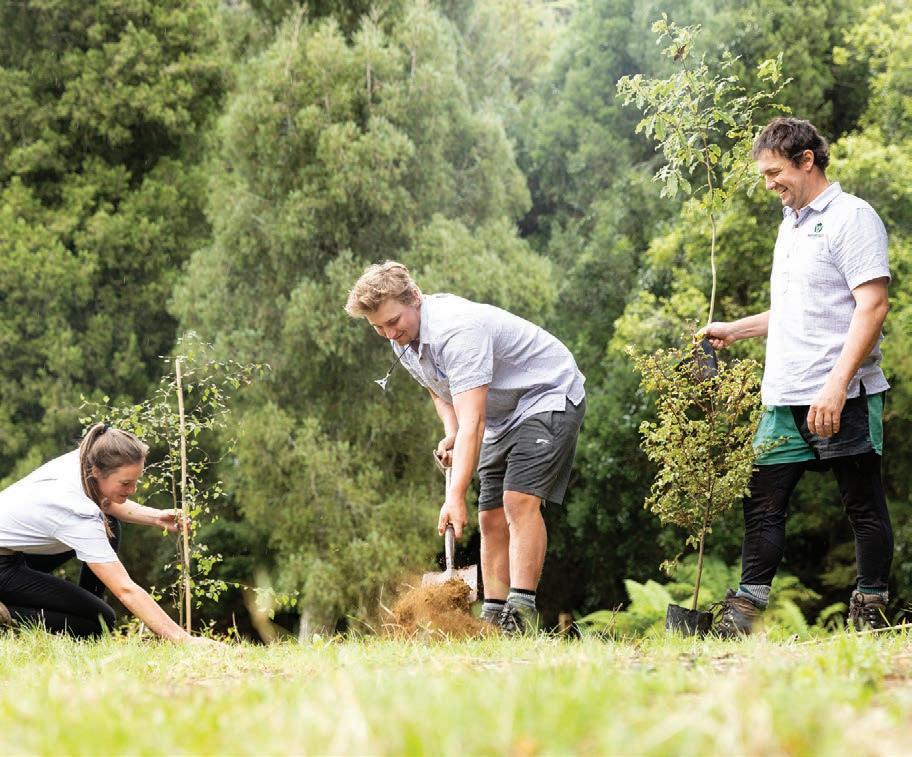
Woodville’s Laura Bradley, 25, a Senior shearer with a history of Junior and Intermediate success, won the Women’s shearing final, by just 0.105 points from Open-class shearer and former Golden Shears lower-grades shearing and woolhandling champion Sarah Hewson, of
Blenheim, who was first to finish and shore the six sheep in 8min 28.61sec.
Meanwhile, another Alabaster from Taihape has found his way onto the New Zealand Shears honours board with victory in the Novice Shearing final.
Trent Alabaster, 17, who left Whanganui Collegiate last September to start a shearing career, is cousin of lambshearing record breaker and 2018 New Zealand Shears Junior champion Reuben Alabaster, nephew of former World woolhandling champion and multiple New Zealand Shears Open woolhandling champion Sheree Alabaster.
They all continue a competition shearing heritage starting with Sheree’s father, the late Ray Alabaster, who shore at the first Golden Shears in 1961 and multiple Golden
Shears Open finals, without winning the big title.
In other features of the Shears, Leon Samuels and Rowland Smith completed a 3-0 Wools of New Zealand Shearing Series win over the Wales Development team of Gethin Lewis and Dylan Jones; and shearing legend Sir David Fagan, president of the New Zealand Shears society and of national body Shearing Sports New Zealand, returned triumphantly to the competition board to win a two-person Whanau relay with son and Open-class shearer Jack Fagan.
Sir David had retired from competition shearing in 2015 with more than 640 Openclass shearing titles to his name – more than three-times that of the next most successful.
goodness is what the world needs right now. So it’s a good thing we’ve got farmers who are committed to leading the world in doing the right thing.SOUTH: Now living in Roxburgh, Central Otago, Southland shearer Leon Samuels won the New Zealand Shears Open final, the first shearer from the South Island to win the title in 30 years. RECORD: Gore shearer and New Zealand Shears Junior shearing champion Emma Martin, the first woman to win a New Zealand Shears shearing title since 2010. Staff reporter PEOPLE Skills
BEEKEEPERS in cycloneravaged areas of the North Island can now access government funding aimed at helping prevent the spread of disease in hives.
Apiculture New Zealand chief executive Karin Kos said at least 5000 hives were destroyed in Hawke’s Bay and Tairāwhiti by Cyclone Gabrielle.
However, up to 8000 more hives are still inaccessible and their future remains unknown. Kos said many hives are in isolated parts of farms, and road or track access has been cut because of flood damage.
“That’s the real issue,” says Kos.“Just being able to get to theses hives.
“It’s the end of the season, treatments need to be put in place and beekeepers need to check the general bee health.”
Late last month the Ministry for Primary Industries confirmed $250,000 in funding to support beekeepers in cyclone-hit areas, specifically aimed at reducing the biosecurity threat to hives.
“I’m thrilled for our beekeepers to get that funding. [The cyclone] has had a huge impact on many beekeepers, their future and their incomes.
“The funding is all around minimising that biosecurity threat for those hives that are still healthy.”
Gisborne beekeeper Barry Foster said the cyclone was a further knockback for the industry following covid. He has heard of cases where beekeepers lost 650 hives to flooding.
“There have been some quite big
losses. But there are a lot out there that we haven’t counted yet that will have been lost to starvation or varroa.
“They’re stranded in the back country somewhere.”
Foster said some beekeepers had used helicopters to remove hives, while others had built temporary roads to gain access.
Ideally hive treatment should be done by late February or early March as varroa mite numbers traditionally build up in autumn. He expects more hives to be lost as varroa damages wintering bees.
Kos said beekeepers can apply for MPI funding by emailing funding@apinz.org.nz and the money can be used for a variety of things, such as fuel, equipment hire and the retrieval of damaged gear and hives.

Hives can be insured, but Kos said most beekeepers do not bother as the premiums are too expensive. The cyclone had a huge impact on beekeepers in the Hawke’s Bay and Tairāwhiti areas and to a lesser extent Northland.
The financial impact on the industry is as yet unknown, but Kos reassured consumers there is unlikely to be any shortage of honey on supermarket shelves in coming months.
“We’ve got a lot of honey stocks around the country. There’s been an oversupply in recent years so there is going to be no issue for consumers.”
Figures released recently from an industry colony loss survey showed varroa continues to be the No 1 destroyer of hives.
The overall colony loss rate during winter 2022 was 13.5%, almost identical to the loss rate in winter 2021. The survey estimates that 6.4% of all living colonies
(nearly half of all colony losses) were lost to suspected varroa and related complications over the 2022 winter.
Kos said the survey shows varroa management among beekeepers has improved, which is a positive.
“People find they need to take a lot more care with varroa. One or two treatments a year doesn’t really cut the mustard anymore. There is an ongoing need to treat for varroa and that adds another expense.”
The funding is all around minimising that biosecurity threat for those hives that are still healthy.
Karin Kos Apiculture New Zealandaccounting for $74 million of the $620m export trade, behind the United States and China.
AFTER almost a decade in the process, the organics community has welcomed the passing of the industry’s Organic Products and Production Act, finally bringing New Zealand into line with major trading partners.
The act promises to ensure more robust, international standards for all organic food and beverage production, and a national certification symbol attached to all products that pass muster.
Organics Aotearoa NZ CEO Tiffany Tompkins said the passing of the bill is timely, as pressure is mounting from the European Union for NZ to deliver on a nationally certified scheme.

“The EU has introduced legislative changes for its own standards and it was re-evaluating its equivalency to trading partners. It is absolutely crucial our legislation got through by the end of 2024, or we would lose that EU market access.”
The EU is NZ’s third largest organic trading partner,
While it has not been as forceful as the EU, the US has also been calling for NZ to develop a national standard.
Tompkins said globally growth in organic food and beverages continues to be strong, running at about 9% a year.
“But in NZ we have only been getting about 6% growth rate. Our hope is the act will ensure that growth can be lifted further.”
At present one of the strongest growth areas globally is for certified organic wine, and Tompkins said the EU and US simply cannot secure enough of the product.
But in NZ we have only been getting about 6% growth rate, our hope is the act will ensure that growth can be lifted further.
The new legislation will provide consumers with the certainty of a certification mark, something that had been ad hoc in the past, dependent upon producers’ claims.
Tompkins said the most damaging thing about the lack of national organic standards is in the minds of NZ consumers who do not have the same understanding of what organics means, compared to many overseas consumers.
“There has been a lack of trust there. When the government gets behind something there is a lot more consumer awareness, and we have missed out on that.”
The NZ domestic organic market is worth about $100m a year.
Chair of the Organic Exporters Association and Fonterra’s organic division Andrew Henderson said the association welcomes the completion of the bill through Parliament.

“This legislation will establish a foundation for greater investment in organic food production in New Zealand, improve market access and promote international trade for NZ organic products,” he said.

The world needs you. That’s right, farmers, we’re talking about you. Now, more than ever, the world needs more natural, nutritious, sustainable goodness. And every day, you farmers work hard to create just that. You’re the farmers the world needs.
That’s why this year’s Silver Fern Farms conference is all about you – our farmers. An opportunity to recognise the good you do, plan to do more good stuff together, and to catch up with your fellow farmers. There’ll be guest speakers and industry leaders. There’ll be the Boning Competition National Finals and of course the Plate to Pasture Supplier Awards. We’ll also be celebrating 75 years of Silver Fern Farms!
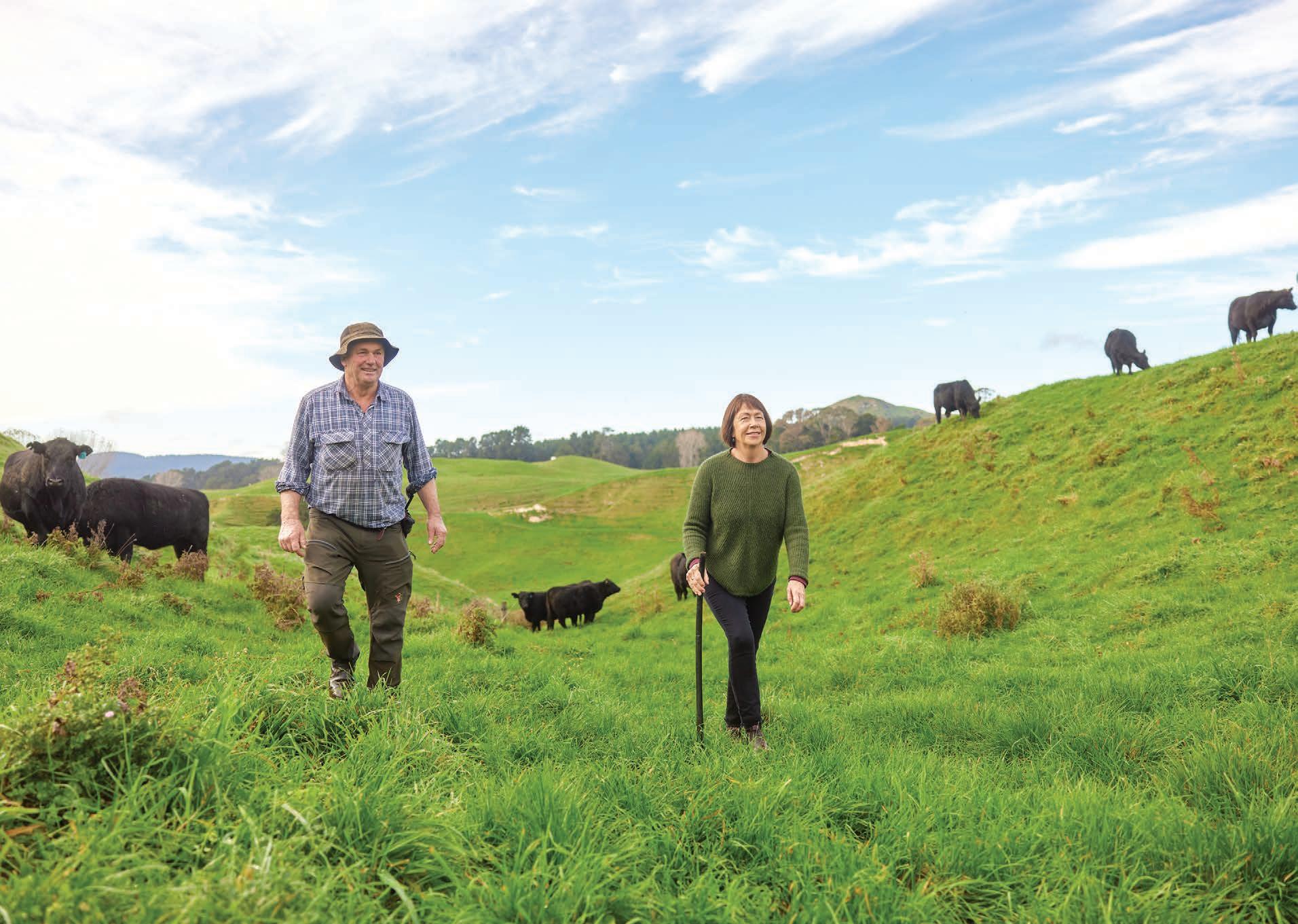
So, whether you’re an owner or a manager, a stock hand or a shepherd, young or old or would rather not say – this one’s for you. Because you’re the farmers the world needs.
Te Pae Convention Centre, Christchurch
18—20 JULY 2023
Sign up at silverfernfarms.com/conference
Animal genetics helps farmers improve milk production, environmental footprint, and health traits through better breeding decisions. The benefits of genetic gain compound so that each generation of animals is better than the last, and this has a significant and positive impact on farm profitability.

Dairy is an international game, and our rate of genetic gain must be internationally competitive.
As a subsidiary of DairyNZ, NZAEL leads the cooperation of farmers, AI companies and bull breeders to optimise the national dairy herd through ongoing improvement in genetic evaluation.

NZAEL’s first role for farmers is to improve genetic gain by setting and continuously improving the National Breeding Objective (NBO) and the Breeding Worth Index (BW). Breeding Worth sets the standard of what a good cow looks like for our farmers. We keep BW relevant and world-leading by bringing in new traits and improving the data quality, and we annually update the economic value of each trait. (E.g. fat, protein and fertility)
Breeding Worth (BW) is the independent, industry good index available to all.



NZAEL’s second role for farmers is to evaluate all animals in the national herd using the BW index. These results are made available to everyone in the sector through AI companies, bull catalogues, herd record providers and the complete and independent comparison of AI bulls published in the Ranking of Active Sires (RAS) list on the DairyNZ website.
This information provides confidence to farmers in the decisions they make to improve their herd through breeding, buying, and culling.


NZAEL is at the forefront of farm systems and genetic science and works with local and international experts to create the most profitable herds possible. We do this by researching on-farm performance related to genetics and identifying how genetics can support improvements in the farm system. We collaborate with the world’s leading scientists to deliver the best BW for farmers and invest in continuous improvement of evaluation methods and traits that matter most.
NZAEL is the independent industry good organisation for genetics and animal evaluation. It has its own Board of Directors with accountability to the DairyNZ Board and follows a rigorous testing process that includes farmers and experts for all improvements or changes to BW. Every improvement is tested with these groups before sign-off from the NZAEL board and we communicate everything we do with farmers and sector.
Find out more about how NZAEL is delivering for dairy farmers at www.dairynz.co.nz/NZAEL



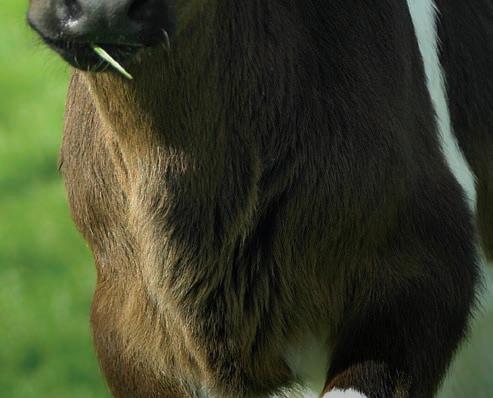




NEW ZEALAND ANIMAL EVALUATION LIMITED (NZAEL) IS YOUR LEVY FUNDED ORGANISATION WORKING TO INCREASE GENETIC GAIN IN THE NATIONAL DAIRY HERD TO HELP KIWI FARMERS BREED BETTER COWS AND MAKE BIGGER PROFITS.
Helping Kiwi dairy farmers breed the worlds best cows, in NZ.
The past six years will be remembered for rapid and far-reaching policy changes affecting agriculture – but farmers and sector leaders question whether they are being heard in the policy development process. Neal Wallace reports.
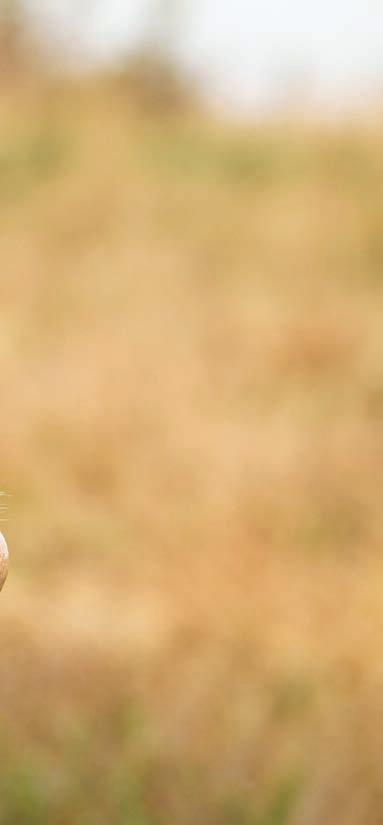
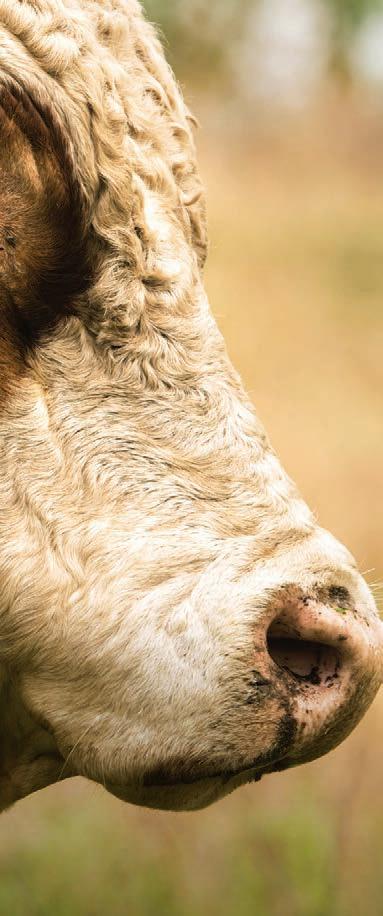
 Neal Wallace POLITICS Policy and regulation
Neal Wallace POLITICS Policy and regulation
IT WAS obvious to farmers from the start that aspects of the government’s freshwater policy reforms couldn’t work. Had government officials, for example, quietly told Southland farmers of plans to include in freshwater regulations limits to the depth of pugging in intensively grazed winter paddocks, they would have been told by those in the know that it was not feasible.
“Unsurprisingly, so much of the policy was unworkable,” Federated Farmers president Andrew Hoggard said.





“Three to four years on they are still tabling amendments to try and fix parts of it up.”
Rather than consulting those with practical knowledge before drafting bills, some Wellington bureaucrats take the view that they know best, Hoggard said.
There are hard-working and well-meaning officials, but increasingly, Hoggard said, he is hearing from those who have
worked in Wellington for many years that there is a growing politicisation of the public service. He concurs.

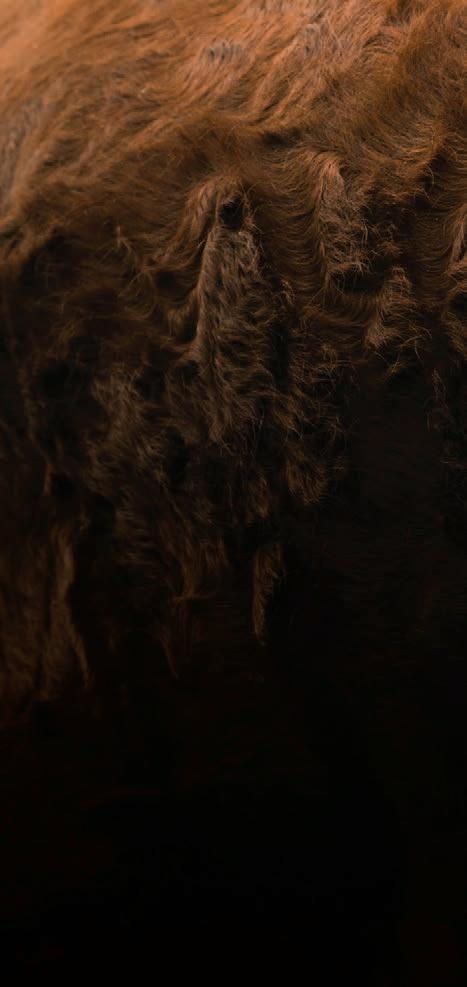
“It’s just sometimes it feels like we have got a public service that has become party-political, that is trying to meet party goals instead of being a public service.”
“Good public policy is about defining a problem, presenting a range of policies that could be put in place then assessing through public consultation the pros and cons to find the best option,” Chapple said.
However, Agriculture Minister Damien O’Connor said the government has a strong track record of engagement and consultation with the industry.
Dr Simon Chapple, a director of Victoria University’s Institute of Governance and Policy Studies, said the current government is using its Parliamentary majority to advance its policy agenda at the expense of the democratic process. He said the governments of Jacinda Ardern and Prime Minister Chris Hipkins have tended to present the public with a policy decision rather than a series of policies on which the government then consults to decide which to pursue.
“There are numerous instances where the government has listened to farmers and adjusted. For instance, the He Waka Eke Noa process has been progressing since 2019 when the government agreed with the request of the industry to allow them to develop a workable way to price agricultural emissions.”
O’Connor said the government worked closely with farmers on intensive winter grazing measures and there was extensive public consultation on freshwater reforms, with a record 17,500 submissions received in 2019.
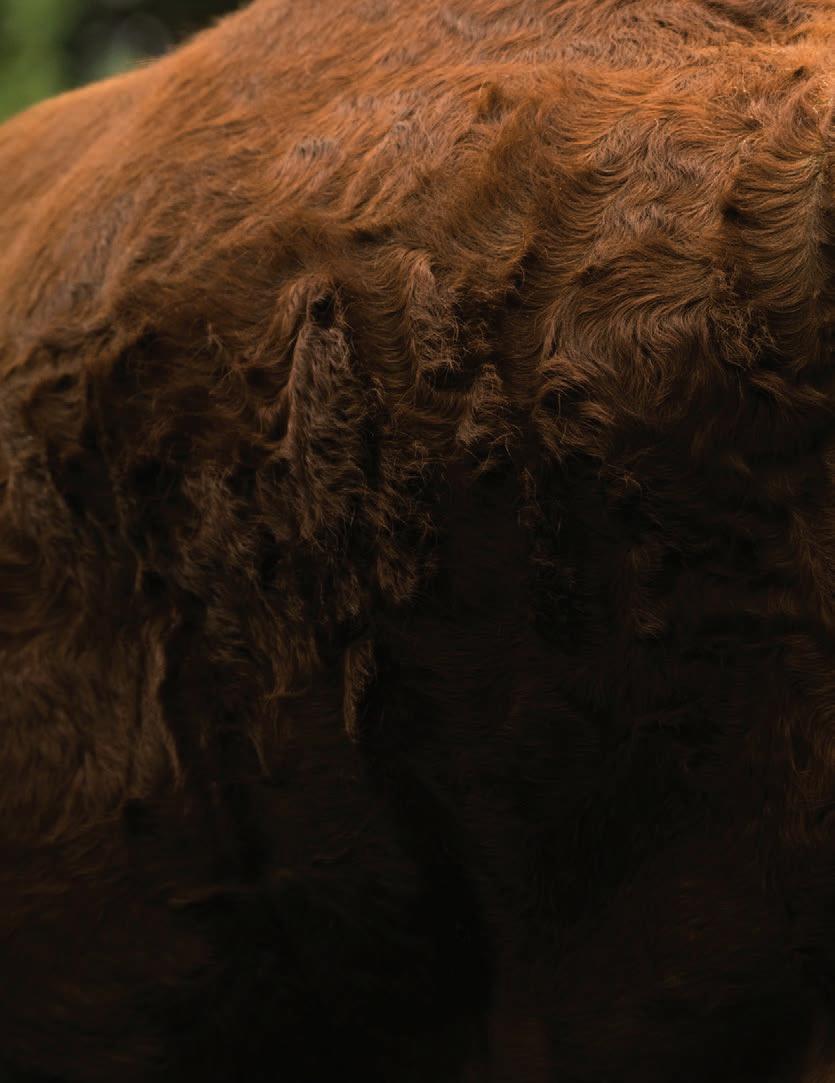
He said the reforms “were adjusted in response to feedback from farmers and others and are now being rolled out in a staged
way through a smaller number of regions to assess their practicality and effectiveness”.
Hoggard said he senses the same mistakes are being made with reforms to the Resource Management Act – no consideration of options prior
to the writing of draft policy, selective input to early policy drafts, and rushed consultation and passing of policy.

He said consultation on draft policy for freshwater reforms was
Continued page 24
Unsurprisingly, so much of the policy was unworkable.
Andrew Hoggard Federated Farmers
THE Labour Government’s political majority has altered the democratic and policy development processes, says an expert in governance and policy studies.
Dr Simon Chapple, a director of Victoria University’s Institute of Governance and Policy Studies, said the current government is using its Parliamentary majority to advance its policy agenda but he fears it is doing so at the expense of the democratic process and people’s trust in future governments.
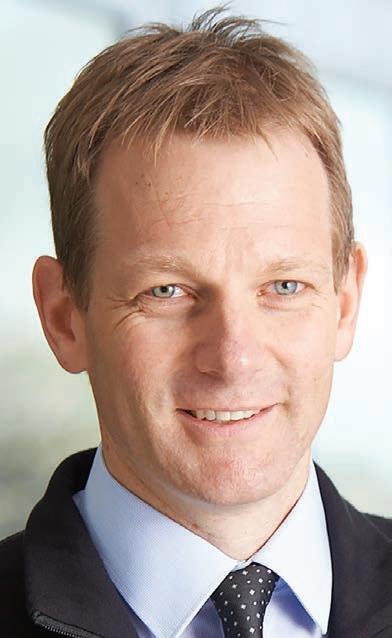

“Without a political handbrake, good consultation processes have been absent,” he summarises.
“You consult with the public for two reasons: to get good facts and to bring people along and to make them feel included.”
While not privy to the processes followed for primary sector policies, Chapple cited other examples where he said the governments of Jacinda Ardern and Prime Minister Chris Hipkins have overridden the democratic
process in pursuit of short-term policy gains.
The legacy will be an erosion of confidence in future governments.
“That is what we’ve been seeing.
“That body of trust is a good which is necessary for all future governments.”
He said the government is increasingly presenting the public with policy decisions rather than a series of options on which it then consults and decides which one to pursue.
This leaves public servants in the invidious position of having to defend and interpret policy that has not been thoroughly canvassed.
“Good public policy is about defining a problem, presenting a range of policies that could be put in place then assessing through public consultation the pros and cons to find the best option.”
The government’s proposed compulsory Income Insurance Scheme Bill is an example.
Over Christmas Chapple was one of 2500 people who made a submission – in his case a 40-page document – on the proposed unemployment insurance scheme.
The Christmas break was not appropriate for consulting on such a complex policy, but there was also the problem that submitters were given just one option to consider.
“It was an ill-defined problem. They had not identified the problem they were trying to solve.”
Chapple said the submissions were subsequently ignored.
Despite the opposition, the government employed a manager to run the still-to-be-approved agency and passed a bill under urgency to release $74 million to fund it.
who made submissions,” Chapple said.
Hipkins subsequently deferred the policy to focus on soaring cost of living costs.
By short-cutting consultation, Chapple said, the government did not expose itself to the full range of information and facts held by those who have intimate knowledge on subjects.
It also risks the public dismissing consultation as little more than a box-ticking exercise.
Chapple said increasingly submissions are being viewed by governments and their officials as a popularity contest rather than a contribution of ideas and arguments to help create policy.
“They often treat summaries as counts, such as 40% against and 60% for.
“My point is that it’s the content that counts and I would argue that counts are not fact.”
Consultation is a central element of democracy and should open the minds of all sides and build trust and respect.
INCLUSIVE: Dr Simon Chapple, a director of Victoria University’s Institute of Governance and Policy Studies says governments ‘consult with the public for two reasons: to get good facts and to bring people along and to make them feel included’.
factors – but it should not be taken for granted.
Dr“From my perspective that was little more than a two-fingered salute to the 2500 New Zealanders
Timing of consultation and the time frame available for making submissions is by its nature short and often influenced by procedural
“It is ordinary people taking time away from their families and their jobs to put pen to paper. We should honour these people.”
THE deluge of new government regulations in the past five years has seen the Environment Policy team at Beef + Lamb New Zealand more than triple in size to 10.
Dave Harrison, the organisation’s policy and advocacy manager, said especially in the past three years, the government has sought to install once-in-ageneration policies on the primary sector, the impact of which have been accentuated by the short consultation periods.
For example, just four weeks over Christmas were allowed for consultation on changes to the Resource Management Act, Harrison said.
“The RMA is not perfect and needs reform,” he said, but “the government needs to be talking to people about making reforms”.
“Wellington and ministries do not have a monopoly of good ideas. They need to take a breath.”
Adding to the pressure is the fact the government does very little consultation as it formulates ideas
Continued from page 23
held during calving season and the RMA over Christmas.
Beef + Lamb NZ chief executive Sam McIvor said the government is trying to do too much, too fast.


“They need to hit pause and take the time to get this right, and work with the people this will affect to ensure we all get the best outcomes.”
A Ministry for the Environ-
and before it prepares bills.
“Instead of working with people to drive change, they dump it on them.”
ment (MFE) review of the implementation of new freshwater regulations found staff were put under pressure by meddling from Environment Minister David Parker.
Farmers Weekly last year reported that John O’Connell, the MFE’s principal risk and assurance advisor, found staff were overworked and junior staff were doing roles for which they lacked experience without oversight.
Harrison said the freshwater reforms were equally significant and also had a short consultation period.
He said this was due in part to a desire by Environment Minister David Parker to have policy introduced during his tenure as minister.
Equally, the final shape of indigenous biodiversity policy had inadequate input from farmers, despite their owning land on which 25% of NZ biodiversity resides.
“We wanted to sit at the table and help formulate ideas because there as an opportunity to be involved as ideas were happening that involved farmer’s land,” Harrison said.
The offer was rejected and the subsequent policy has shortcomings and lacks clarity.
Rural organisations generally have a solid working relationship with government officials, Harrison said, but there is a feeling they are not able to share and discuss ideas being considered by politicians until those plans are embedded and start becoming policy.
There was also inadequate information for consultation, no stress-testing of regulations, and differing interpretations of agreed policy decisions.
“These issues all contributed to a feeling of uncertainty by affected parties (farmers) regarding the impacts of these regulations on their practices (for example, whether and when they would require a resource consent),” O’Connell said.
Dr David Burger, DairyNZ’s general manager sustainable dairy, said that over the past six years, farmers have been dealing with what he called “an unprecedented level of regulatory change” that has huge implications for farming businesses.
“The projected pace and scale of change required has been overwhelming for many farmers, who have been frustrated with the short time frames, lack of certainty and impracticality of some of the regulations proposed.”
While supportive of reform that enables innovation and balances economic viability and sustainable environmental management, Burger said DairyNZ has consistently told the government that there is too much change at once and it’s happening too quickly.
“This is causing significant pressure in rural communities and negatively impacting farmer wellbeing.”
Burger said there is uncertainty and confusion about what farmers have to do and when, as a lot of the implementation detail and guidance was missing when the
Further complicating the process was what O’Connell called “ministerial-driven scope changes” in which Parker initially ignored advice from the ministry and an independent advisory panel to not include pugging rules in the National Environmental Standards as they were deemed too difficult to enforce.
Tight time frames added to the pressure.
“The high ministerial priority
policies were announced.
“We have also communicated our concern about consultation on major reforms being carried out during calving and mating, when farmers rightly have other priorities and particularly when they have been short-staffed.”
By not engaging meaningfully through consultation and sharing knowledge, Burger said, there is a heightened risk of substandard and impractical regulations that are unworkable.
Federated Farmers president Andrew Hoggard said the workload for his organisation has been “crazy”.
Hoggard said he spends about 30 hours a week on federation business.
He said government departments handle the extra workload by employing more staff, often lured from the private sector by higher salaries, a luxury not available to sector groups.
In 2017-18 the Ministry for the Environment employed 370 fulltime equivalent staff but expected to reach 860 at the end of last financial year.
of this work, and a political desire to implement the package in the current term of government, meant that the overall deadline could not be pushed out,” the report said.
A spokesperson for Parker said the government extended the consultation period, and policies were phased in gradually to allow time for the farming community, councils and others to build capability and capacity.
Good public policy is about defining a problem, presenting a range of policies that could be put in place then assessing through public consultation the pros and cons to find the best option.
Simon Chapple Victoria UniversityUNPRECEDENTED: Dr David Burger, DairyNZ’s general manager sustainable dairy, says farmers have been dealing with ‘an unprecedented level of regulatory change’ over the past six years.
THE government is listening to farmers and has shown it will make changes to policy where it needs to, says Agriculture Minister Damien O’Connor.
“There are numerous instances where the government has listened to farmers and adjusted,” he said in response to ongoing criticism that it has rushed policy and treated consultation as a boxticking exercise.
“For instance, the He Waka Eke Noa process has been progressing since 2019 when the government agreed with the request of the industry to allow them to develop a workable way to price agricultural emissions.”
Equally, he said, freshwater reforms were not rushed.
Development of Essential Freshwater policy started in 201718 and involved engagement with all interested parties, including public consultation, that in 2019 resulted in a record 17,500 submissions.
That consultation included setting up a multi-agency Water Taskforce that worked with four advisory groups drawn from the primary sector, Māoridom, scientists, local government,
environmentalists and technicians.
An Independent Advisory Panel chaired by retired Environment Court Judge David Sheppard assessed the submissions and recommended changes to address concerns.
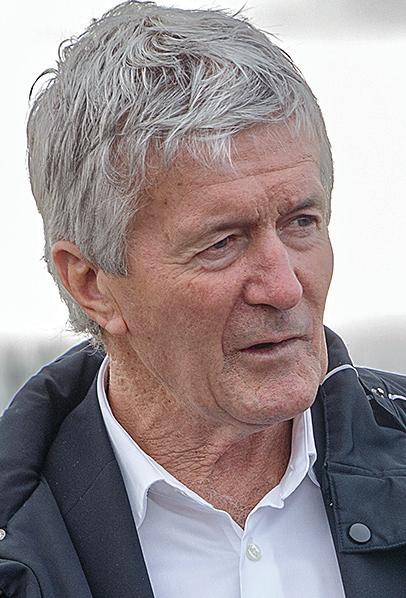
O’Connor said an extensive economic, scientific and social impact analysis was commissioned from expert agencies, and peer-reviewed.

The requirement for freshwater farm plans is being gradually

introduced, starting with Southland, Gisborne and Waikato. Full implementation is expected to take up to five years.
O’Connor said the government worked closely with farmers, especially in Southland, on intensive winter grazing to get workable and effective rules.
Implementation was delayed from May 2021 to November 2022 following a commitment from the farming sector to make immediate improvements to practices for the 2021 season.

Similarly, O’Connor said, there was comprehensive consultation between October and late November 2021 over the greenhouse gas emissions reduction plan.
The document attracted 10,050 submissions and the Ministry for the Environment (MFE) also held 19 webinars on the plan, in which 1876 people participated.
“Unfortunately, due to our legislative time frames, even with an extension, we were consulting during a period of covid restrictions and were unable to take the consultation physically ‘on the road’,” O’Connor said in a statement.
Sixteen webinars and workshops were also held by MFE.

On indigenous biodiversity, O’Connor said a Biodiversity Collaborative Group (BCG) was

formed to prepare a draft National Policy Statement on Indigenous Biodiversity (NPSIB).
Its members were Royal Forest and Bird, Federated Farmers, the Pou Taiao Iwi Advisors Group, the Environmental Defence Society, NZ Forest Owners, Mercury NZ and Meridian Energy.
He said MFE and the Department of Conservation then developed
a draft with public consultation between 2019 and 2020, yielding more than 7000 submissions. A final exposure draft consultation was completed in mid-2022, which led to changes requested by the agricultural sector.
MORE: See www.farmersweekly.co.nz
THE implementation of several farreaching environmental policies may seem rushed to farmers, but they have been gestating for many years, says the head of an environmental group.
Environmental Defence Society chief executive Gary Taylor said if the final details of freshwater and indigenous biodiversity policies were news to farmers, they should raise concerns with their sector leaders about poor communication. The basis of the freshwater reforms began in 2008, which had input from primary sector leaders.

Iterations of the policy were introduced in 2014 and 2017, before the final policy was passed.
Similarly, the indigenous biodiversity policy began when Forest and Bird and Federated Farmers went to then Environment Minister Nick Smith seeking national guidelines to avoid constant litigation, Taylor said. He does not consider either policy process rushed.
“That is a fallacy.”
The National Policy Statement on Indigenous Biodiversity followed nearly two years of debate through the Biodiversity Collaboration Group, which included farming groups. The government is still to pass this legislation.
MORE:
See www.farmersweekly.co.nz

We’ve been named as Canstar Bank of the Year for Agribusiness 2022 for providing an outstanding combination of products and excellent service to our agribusiness customers. Looks like hard work does pay off. If you’re in the agri sector, come to the bank that’ll do the tough mahi with you.ALL EARS: Agriculture Minister Damien O’Connor says there are ‘numerous instances where the government has listened to farmers and adjusted’.
IN REFERENCE to worker safety and the labour shortage, “Farm deaths demand urgent attention”, “Migrants not the answer to labour squeeze” (April 3):
Stop calling them “workers” and call them “staff”, for a start.

Secondly, make formal training a required part of employment.
Third, the employer pays for the training.
And lastly, let them know they are employed in the “health food industry”.
The “neutraceutical” industry. It’s not the “milking, fencing and weed-spraying” industry with two days off a fortnight and living with your employer.
I tried to promote this when at Waikato Polytech 20 years ago but failed completely!

He told the meeting BLNZ is dealing in the real world, not the world they wish they operated in.
Out in the real world, Rabobank managing board member Berry Marttin told the Farm2Fork conference in Sydney last month that emissions pricing is just the first of many challenges for food producers.
THE Beef + Lamb NZ annual meeting was a feisty affair, with 10 remits voted on and a fair bit of terse rhetoric from attendees.
Many of those farmers say their trust in the organisation’s ability to act in farmers’ interests has gone following the negotiations on emissions pricing.
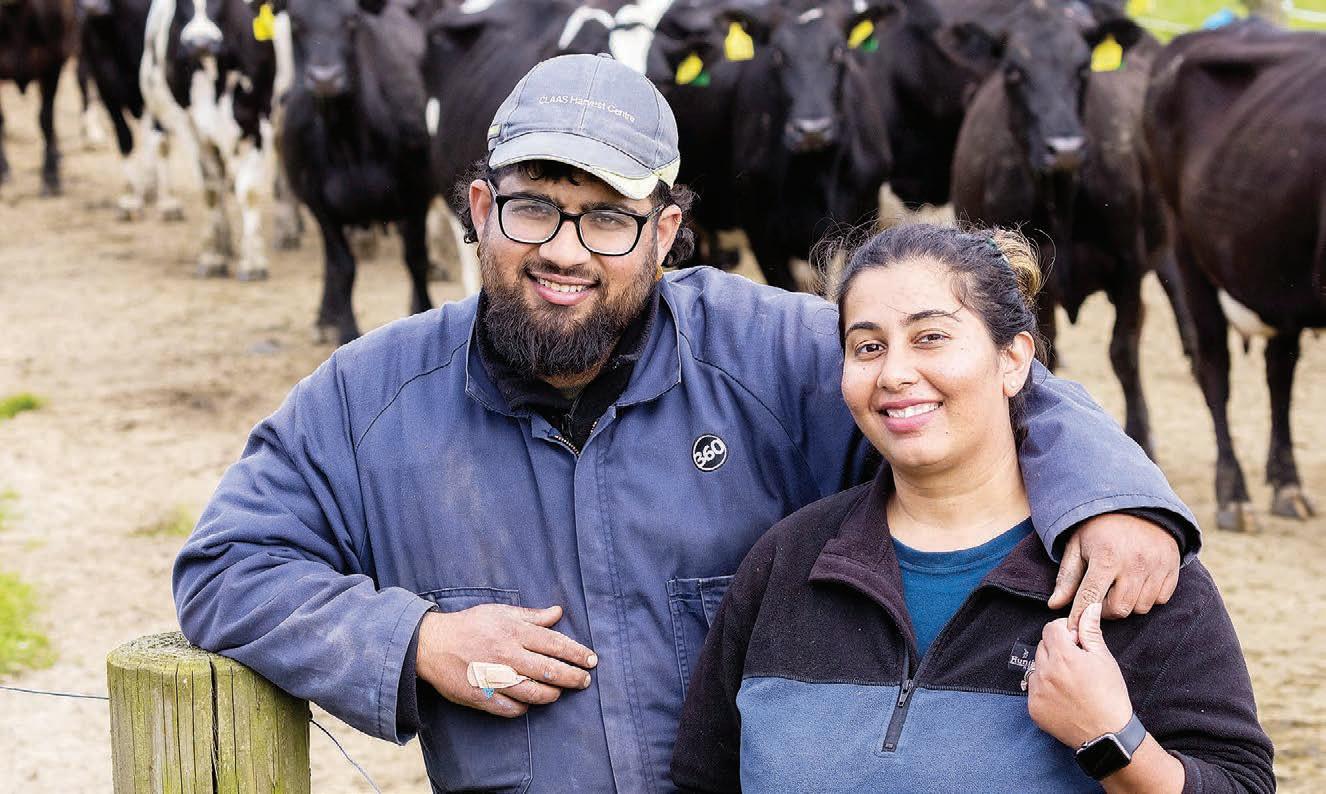
with levy payers and work out how best to advocate for them.
Hopefully, these conversations will move the focus from the rampant negativity we’ve seen of late to something more meaningful. It’s easy to oppose something and vote on what not to do.
ISSN 2463-6002 (Print) ISSN 2463-6010 (Online)
Some want the pace of change to slow, some want changes made to He Waka Eke Noa (HWEN) and some seem to want to farm in the way they choose, despite what’s happening outside the farm gate.
PUBLISHER
Dean Williamson 027 323 9407 dean.williamson@globalhq.co.nz
Outgoing chair Andrew Morrison, the fall guy in this conflict, defended BLNZ’s work quite succinctly.
ADVERTISING
Andy Whitson 027 626 2269 New Media & Business Development Lead andy.whitson@globalhq.co.nz

“We have used nature because it is very valuable but we also lose nature because it’s free,” Marttin said.
Debbie Brown 06 323 0765 Noticeboard/Word Only/Primary Pathways classifieds@globalhq.co.nz
Many of NZ’s big food processors have signed up to the Science-Based Targets initiative and that programme will unveil policies to protect and improve water quality, biodiversity and social issues as well.
Steve McLaren 027 205 1456 Auckland/Northland Partnership Manager steve.mclaren@globalhq.co.nz
Jody Anderson 027 474 6094 Waikato/Bay of Plenty Partnership Manager jody.anderson@globalhq.co.nz
Grant Marshall 027 887 5568 Real Estate Partnership Manager realestate@globalhq.co.nz
Hopefully, these conversations will move the focus from the rampant negativity we’ve seen of late to something more meaningful.
Andrea Mansfield 027 446 6002 Salesforce director andrea.mansfield@globalhq.co.nz
Marttin said it is inevitable as consumers ask more of their food producers.
Donna Hirst 027 474 6095 Lower North Island/international Partnership Manager donna.hirst@globalhq.co.nz
PRODUCTION
This message, coming from one of the globe’s biggest suppliers of finance to farmers, needs to be heard.
Lana Kieselbach 027 739 4295 production@globalhq.co.nz Advertising material adcopy@globalhq.co.nz
But the world isn’t going away and our industry needs to figure out how it is going to meet the moment.
Grant Marshall 027 887 5568 South Island and AgriHQ Partnership Manager grant.marshall@globalhq.co.nz
Back at BLNZ it seems there’s a bit of work to do on that front.
SUBSCRIPTIONS 0800 85 25 80 subs@globalhq.co.nz
Emissions must be priced – not because the government says so, but because it is the right thing to do and because it is the only way to ensure the global marketplace continues to shop with us.
Javier Roca 06 323 0761
Livestock Partnership Manager 027 602 4925 livestock@globalhq.co.nz
A majority of those who voted thought backing out of HWEN was the best way forward.
New BLNZ chair Kate Acland says the board now has a big job ahead as it tries to re-engage
We may be a long way from our export markets, but what we do from here will shape how close our relationship with them is in the future.
Send your letter to the Editor at Farmers Weekly P.0. Box 529, Feilding or email us at farmers.weekly@agrihq.co.nz
LK0107425©
We have to meet the moment
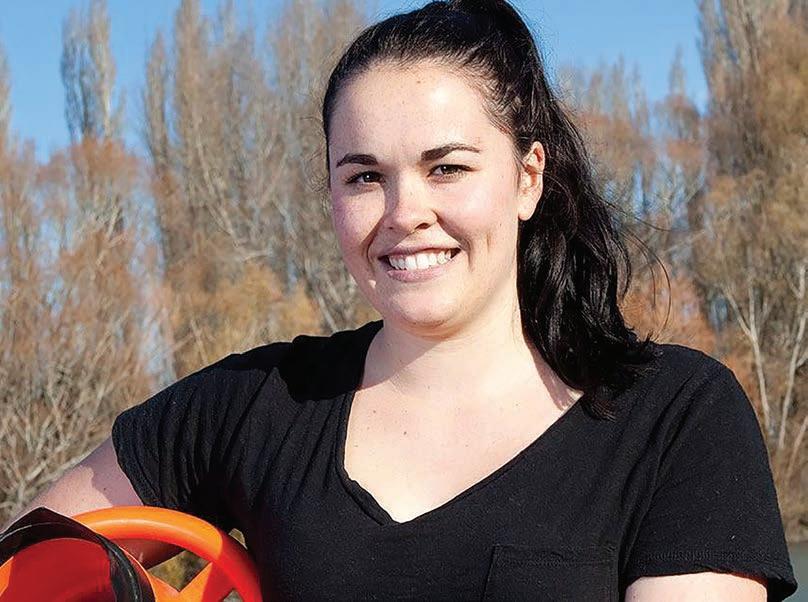 Cate Macinnis-Ng Associate Professor in Biological Sciences, University of Auckland
Dan C H Hikuroa
Senior Lecturer in Māori Studies, University of Auckland
Cate Macinnis-Ng Associate Professor in Biological Sciences, University of Auckland
Dan C H Hikuroa
Senior Lecturer in Māori Studies, University of Auckland
AS GLOBAL environmental challenges grow, people and societies are increasingly looking to indigenous knowledge for solutions.
Indigenous knowledge is particularly appealing for addressing climate change because it includes long histories and guidance on how to live with, and as part of, nature.
It is also based on a holistic understanding of interactions between living and non-living aspects of the environment.
However, without meaningful collaborations with indigenous communities, the use of Indigenous knowledge can be tokenistic, extractive and harmful.
Our newly published work explores the concept of kaitiakitanga. This is often translated as guardianship, stewardship or the “principle and practices of inter-generational sustainability”.
We want to encourage Western-trained scientists to work in partnership with Māori and meaningfully acknowledge Māori values and knowledge in their work in conservation and
resource management. Indigenous knowledge includes innovations, observations and oral and written histories that have been developed by indigenous peoples across the world for millennia.
This knowledge is living, dynamic and evolving. In Aotearoa New Zealand, mātauranga Māori is the distinct knowledge developed by Māori. It includes culture, values and world view.
The concept of kaitiakitanga is often (mis)used in the context of conservation and resource management in Aotearoa. In our work, we highlight how kaitiakitanga is inherently linked to other concepts.
It is difficult to translate these concepts directly but they include tikanga (Māori customs), whakapapa (genealogy), rangatiratanga (sovereignty) and much more.
One of the key conceptual differences between kaitiakitanga and conservation is that for kaitiakitanga, we consider being part of te taiao (the environment) and manage our relationships accordingly. Conservation is characterised by humans managing the environment as if they were separate from it.
Justice Joe Williams describes kaitiakitanga as “the obligation to care for one’s own”, indicating the intrinsic link between people and the environment.
We caution against simplistic definitions of kaitiakitanga. They often divorce it from its cultural context. Simplistic definitions
reduce the richness of the concept and also fail to recognise the differences in how kaitiakitanga is conceptualised and practised. Instead, we encourage Westerntrained researchers to gain a deeper understanding of concepts that underpin kaitiakitanga and work with mana whenua to further develop understanding.
There are a growing number of examples of successful collaborations between mana whenua and researchers. Exploring these projects will allow researchers to gain insights into how to contribute in an effective and respectful way.
For instance, a study of the traditional harvest and management of sooty shearwater in the Marlborough Sounds shows the importance of including cultural harvest in species conservation management. Similarly, putting indigenous knowledge at the centre of the translocation of rare species improves conservation outcomes.
Rāhui is a customary process that can be used by mana whenua to restrict access to a certain resource or area of land to allow recovery. It includes a holistic understanding of the environmental problem, and social and political control.
Rāhui has been used to reduce the spread of kauri dieback disease in the Waitakere Ranges. It has also been used to protect kaimoana (including scallops, mussels, crayfish and pāua) on Waiheke Island.
Other examples include rāhui covering forests, lakes, beaches and marine areas for durations from days to decades. Rāhui are widely used but highly specific to local conditions. For iwi to be able to implement rāhui, they need to have rangatiratanga, as kaitiakitanga is both an affirmation and manifestation of rangatiratanga. Empowering Māori researchers and communities is central to worthwhile collaborations. We encourage non-Māori researchers to approach partnership with an awareness of the limits of their training and knowledge. Embracing a mindset of intellectual humility will more likely create conditions for meaningful co-created work. While establishing and maintaining collaborations can be time-consuming, our collective experience is that taking time to develop trust and understanding is essential for successful outcomes.
We hope our work will provide
Empowering
Māori researchers and communities is central to worthwhile collaborations. We encourage non-Māori researchers to approach partnership with an awareness of the limits of their training.
some inspiration and guidance for established practitioners and students alike. There are a number of other examples of how mātauranga and ecology can work together. The New Zealand Journal of Marine and Freshwater Research has dedicated a special issue to mātauranga Māori and how it is shaping marine conservation. Others have explored how respectful collaborations can support better teaching of science and better research outcomes. This article first appeared in The Conversation.
IWOULD like to pick up on the recent letter “Trees on farms” from John Hill (March 13) and support the mantra “trees on farms”, not “farms into trees”. It was on the same page as Mark Bloomberg’s informative article on replacing pine forests, particularly on steep erosionprone land, “Replacing pine forests won’t be cheap or easy”.

I live in the Motueka valley where, years back, farmers sold their steep hillsides and exotic trees were planted. In the catchment, exotic plantations cover the largest area when considering “productive” land use. In parts, we have some highly erodible soils, wind-throw events that lead to clear-felled areas of radiata at 22+ years (with shorter rotation & erosion vulnerability), and serious sediment issues out in Tasman Bay, not to mention floodwater and slash issues in times of flood.
Future forestry practices, where forests are planted, need to change to mitigate these external costs, not adequately borne by forestry sector investors, if we are to
protect and restore the health of our whole catchment.
Farmers are under the pump for a host of reasons and more so with climate change and a higher
frequency of extreme weather events that catch us out. It’s not just us humans and our activities that are affected but also our domesticated stock, either in flood or drought conditions.
The predictions are that we will be going forward into an El Niño period with drier implications. If you travel round the rural areas on hot summer days, you will see the stock huddled under whatever shade they can access, illustrating their value of it. Isn’t it time that we were obliged, and concerned, to provide better shade and shelter for our livestock to improve their welfare?
Trees have so many benefits to us, viz housing, food, fuel, furniture, paper etcetera. They have a critical role in the landscape and our collective planetary environment and evolution. As windbreaks and shade, they do a lot to retain soil moisture – an aspect not included in the concept of “regenerative” farming, which owed its problem origin to the dust bowl prairies of
the United States where trees were no longer a feature.
With a hotter climate, shouldn’t we be growing more trees on our farms to provide stock and soil shade and shelter, and diversity?
Plus, there’s ways of working with Emissions Trading Scheme provisions that can also support such efforts.
Won’t we all benefit in the long term by doing this, even if it will cost us in the short term?
farmers.weekly@agrihq.co.nz
Phone 06 323 1519
Cows produce food, the smelter boosts the massive profits of a multinational in the form of Rio Tinto.
In addition, cows excrete methane that’s in the atmosphere for a relatively short time. Tiwai Point releases CO2 that will be in the atmosphere for over 1000 years or 50 generations.
With methane and its effects I remain genuinely confused. In New Zealand the media outlet BusinessDesk featured an analysis of our climate change status by former climate change negotiator Adrian Macey and highly respected climate scientist Dave Frame.

IWAS encouraged by the debate about He Waka Eke Noa at the Beef + Lamb New Zealand AGM. It needed to be had and BLNZ needed to be reminded it is there on behalf of farmers.
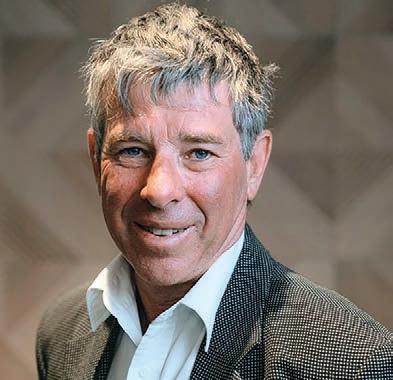
With respect to both levy organisations, they started discussions with a gun at their head. Climate Change Minister James Shaw had said if He Waka Eke Noa (HWEN) didn’t come up to government expectations he’d put agriculture into the Emissions Trading Scheme (ETS). That would be bad for farmers, the economy, the country and world food supply.
The climate is changing and we need to do something about it. My personal frustration is the lack of balanced scientifically based dialogue and honest debate about the options available to reduce greenhouse gases (GHG).
For example, after Cyclone Gabrielle hit, Greenpeace protested at Fonterra HQ about how cow numbers were the root cause of the problem. To my knowledge they’ve never protested at the Tiwai Point Aluminium Smelter that belches CO2 at a colossal level and pollutes.
Their position was that the United Nations-recommended measurement of the different GHGs known as GWP100 is inaccurate for short-term gases such as methane. There is a far more accurate methane measurement system known as GWP* but our bureaucrats are ignoring it.
The BusinessDesk article pointed out that the GWP100 measurement overstates the effect of constant methane emissions on global temperature by a factor of three to five and that’s considerable. It also begs the question as to why we aren’t using a reputable scientific measurement system for methane here.
Simply, the scientists believe we need to know methane’s true impact on global temperature and I agree. The answer isn’t with GWP100.
They’re not the only experts displaying doubts about the current methane measurement system.
New research from Oxford University and the University of California is also questioning animal agriculture’s real impact on the environment.
The research claims “the three main GHGs, carbon dioxide, methane and nitrous oxide, all impact the environment in critically different ways, especially
New research from Oxford University and the University of California is also questioning animal agriculture’s real impact on the environment.
as it relates to their source, life span in the atmosphere and global warming potential”.
It says that carbon dioxide and nitrous oxide are known as stock gases as they are long lived and once emitted will continue to build up in the atmosphere for an extremely long period of time. Methane is categorised as a flow gas because it is short lived and removed from the atmosphere at a rapid pace. It impacts the environment for a duration that is nearly 100 times shorter than the stock gas carbon dioxide.
What that means in practical terms is that methane levels don’t increase if the herd size remains
constant because methane is broken down at the same rate it is being produced.
Taking the year 1990, when Kyoto was signed, New Zealand had 100 million stock units. By 2018 that had dropped to 86 million. Since then it has reduced yet again. There has been a difference in the makeup of those stock units with sheep numbers decreasing and dairy numbers increasing. When the statistics consider a ewe as one stock unit and a dairy cow as seven we still have an overall reduction in methane production.
The Oxford-Californian study goes on to rubbish the GWP100 measurement system for methane. Their assessment of the GWP100 is that it had “really gotten animal agriculture into a lot of trouble”.
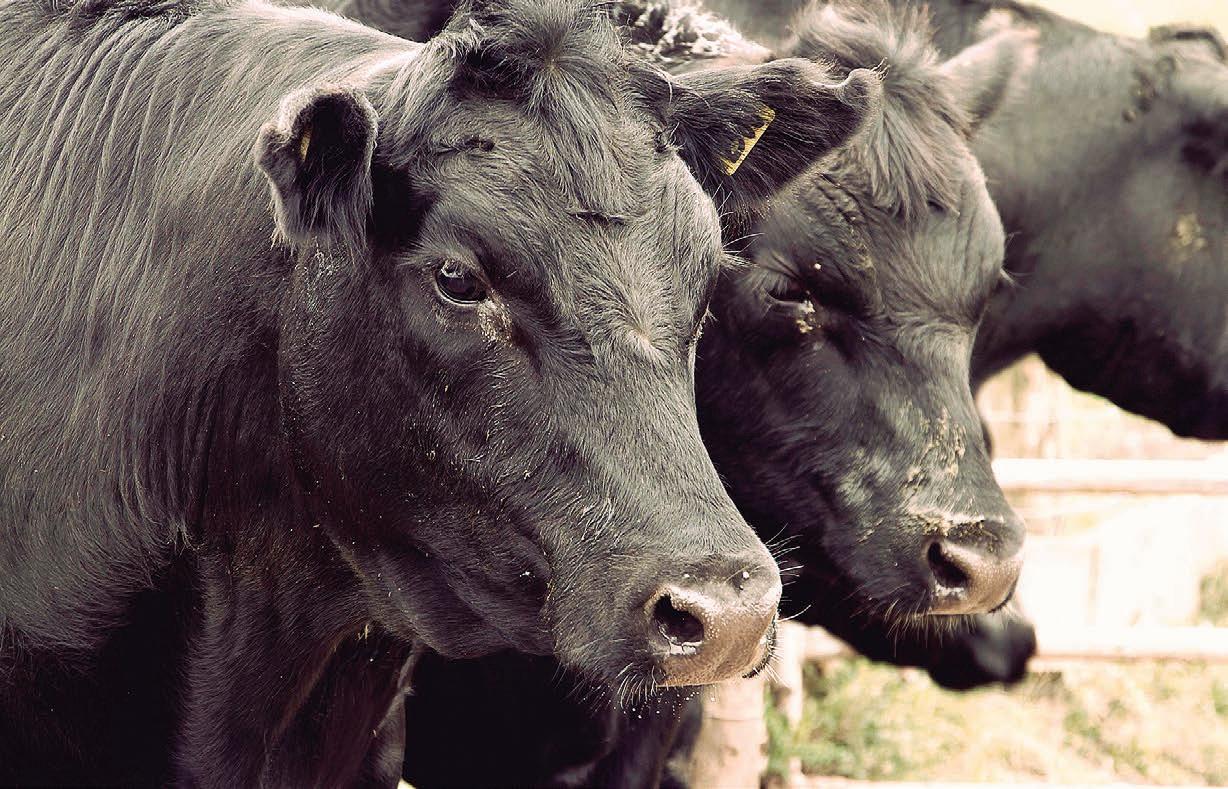
The study makes the point that the current GWP100 measurement has methane in the atmosphere for 100 years, not 10 as happens, which makes the correct measurement GWP*.
The study’s conclusion is that “animal agriculture, unlike any other sector, can not only reduce its GHG output but can also create a net cooling effect on the atmosphere (that is, actively reduce global warming).”
That’s on top of the Kyoto protocol saying don’t touch food production.
As you know I’m not a scientist, but I genuinely believe we need a far more balanced debate on the subject of methane and food production.
I don’t believe our current GWP100 system is remotely fit for purpose. We need a solid, unemotive and transparent scientific debate on the issue.
We also need our levy organisations to front up with a credible scientific and economic position that has grassroots farmer buy-in.
They also need to be prepared to stand up to the government, which I’d suggest hasn’t been happening.
significance or meaning in one’s life.
I’d like to be able to tell you that this is my rock band from the late 1970s and that we modelled ourselves upon The Eagles. I’d tell you that I was the drummer and we were pretty good, even though I say so myself.
I’d like to tell you all that and plenty more, but despite the fact that we do look like a rock band from the 1970s, I can’t tell you about the alcohol and drug-fuelled parties after gigs and the girls and fame and all that stuff because we weren’t anything of the sort.
THIS photo has been on my office wall for 40 years.
Like anyone’s favourite photo, it captures a moment in time that has some sort of
We were five mates from Central Hawke’s Bay College and this was 1978, the year after we had left the college and dispersed to different parts of the country.
We had met up in Taupō for a ski trip. I’d set my Canon camera

Damien O’Connor thinks the campaign could hinder progress towards the final implementation of He Waka Eke Noa (HWEN). He says he was assured a month ago of the sector’s commitment to progress towards the introduction of what the government had already agreed in principle, although he also accepts there remain challenging issues to resolve, such as fixing the emissions pricing and recognition of sequestration on farm.
complication, although on this issue I believe he would side with the former, having expressed his feelings of having been betrayed by Labour.
THE Beef + Lamb NZorganised campaign
Kiwis Backing Farmers suggests farmers are feeling stressed by the sheer quantity and pace of the regulatory change the government is attempting to introduce before the general election in October. It wants to persuade the government to push the pause button while it works out which bits of legislation are flawed or in need of more thought.
Specific areas to address include limiting carbon farm conversions, recognition of all on-farm sequestration, review of methane targets using the latest science, halting the Biodiversity National Policy Statement, providing a fair and practical definition of Significant Natural Areas (SNAs), correcting the inaccurate mapping of fenced areas for stock exclusion, changing the thresholds for freshwater farm plans, and amending the winter grazing slope rules.
The number of issues raised indicates there is a massive amount of work to be done in an impossibly short time, if farmers are to consider they have had sufficient input into the final solutions directly affecting them. BLNZ is very much of the opinion the present pace of regulatory change risks alienating and stressing farmers to the point where they cannot meet the required commitments.
Conversely, Agriculture Minister
up on a car bonnet, turned on the timer and scampered to get into the photo. I’m the rough one in the green jersey. Not a flash dresser then, and still not.
Fanny to my right and Quinny to his right and I had travelled to Ruapehu the previous winter while still at school for our first roadie and ski trip on our own.
I’d been lent the family station wagon with the promise to take care, which we did.
That first night in National Park, Fanny and I plucked up courage as two underage lads and went into the local pub, where I destroyed our credibility by ordering two
BLNZ CEO Sam McIvor takes a somewhat different view of the nature of the issues still to be resolved, stating it will not accept a deal that disadvantages its farmers. Ongoing involvement in HWEN is contingent on finding solutions to these issues.
O’Connor believes protest campaigns are usually counterproductive, often resulting in the opposite outcome to the one sought. He makes the point that water quality, biodiversity and climate change have been on the agenda for 40 years, while SNAs have been a matter for discussion since the 1990s.
He acknowledges the problems caused for the farming sector by covid, inflation and catastrophic weather events, but says further delay is not acceptable; and, to achieve certainty for farmers, it is preferable to resolve all outstanding issues as soon as possible, ideally before the election, which will result in changes to the negotiated agreement one way or the other.
He also makes the point that current legislation commits the government to bringing agriculture into the emissions scheme by January 1 2025.
At this point, seven months out from the election date, there appear to be two options: a National/ACT coalition, which would be more kindly disposed to working with agriculture on less stringent solutions, or a Labour/ Green government, which would be determined to introduce as tough a regime as necessary to meet New Zealand’s climate change commitments.
NZ First and Winston Peters potentially introduce another
beers as I didn’t know how to say draught, which was on the tap.
The publican laughed his head off but served us all the same.
When we got back to school, we were called out at assembly to go and see the deputy principal.
He told us that he was very
National’s agricultural spokesperson, Todd McClay, takes a diametrically opposite view of the value of the Kiwis Backing Farmers campaign, believing it to be an excellent idea, although he sees it as more likely to bridge the urban/rural disconnect than drive any change in the government’s plans.
He says Labour appears to believe farming is a problem, despite its enormous value to the economy, and has ignored the hard work farmers do in caring for the environment. In his opinion, the present government has lost farmers’ trust by concluding the European Union trade deal with minimal concessions for dairy and beef, as well as adopting an unduly tough stance on emissions measurement and other new legislation.

He agrees the amount of regulation and red tape introduced over the past five years is excessive and says a National government would commit to less, but smarter regulation, designed to come up with solutions that work for farmers and the country as a whole.
McClay guarantees National’s policy would include recognition of all on-farm sequestration, while ensuring efficient agricultural production and trade would not be driven offshore in the interests of reducing NZ’s emissions. He intends to work with climate change spokesperson Simon Watts to define National’s agricultural and climate change message, which he anticipates releasing in the next couple of weeks.
ACT’s agricultural spokesperson, Mark Cameron, farms at Ruawai in the Kaipara District and has experienced the impact of the recent cyclones and storms. He maintains farmers must be provided with commercially tenable solutions to help them reduce their emissions, rather than being hit with a sea of changes with which they will be compelled to comply.
disappointed that we had taken a couple of days off school to go skiing and even more disappointed that it would be his first time to have to cane seventh formers.
Quinny, who was head boy, pointed out that he was a haemophiliac so was given lines instead.
Fanny was a second year sixth so I remain the only seventh former to ever be caned right up until it was banned.
I didn’t get my name in gold letters on a board or distinguish myself in any way but they can’t take that modest achievement away from me.
In this year of the photograph we were joined by Butch in the red
BLNZ is very much of the opinion the present pace of regulatory change risks alienating and stressing farmers to the point where they cannot meet the required commitments.
One glaring area for mitigation is the need for NZ to adopt new technologies such as GMOs, where we lag behind our trade competitors such as the EU and Australia. He says farmers have had enough of being hit by regulations that defy common sense and prevent them from taking advantage of available science.
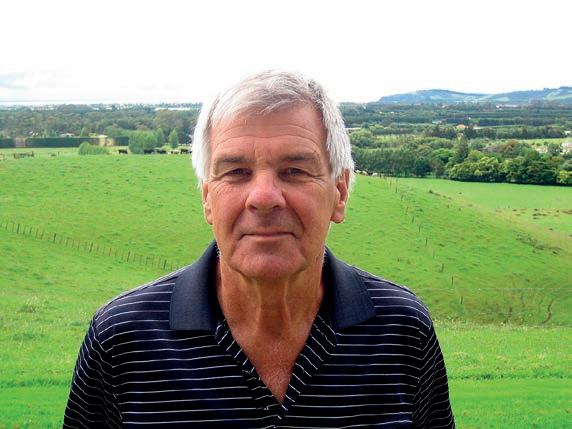
He sees much more water to flow under the bridge before HWEN is finally adopted, because there
pants and John who had come to the college from other schools for a “finishing” year at ours.
Butch had never been skiing and, not wanting to get cold, had thought wearing his wetsuit would be a great idea.
He never got cold and created a large amount of amusement on the slopes.
He was training to be a teacher at Palmerston North and became a great educator.
He loved his rugby and was a terrific hooker.
Tragically a few years after this photo his neck was broken in a scrum collapse and he has been a tetraplegic for more than 30 years.
He’s still alive but the quality of
will inevitably be much debate about some of the targets that are currently not fit for purpose like methane, based on GWP100 instead of GWP* as a shorter lived gas in the atmosphere. The government has grudgingly agreed to look at this, although James Shaw’s comments in his capacity as Minister for Climate Change suggest he is not in favour of cutting farmers any slack. Cameron believes NZ’s emissions pricing should be set to match that of our main trading partners, thereby avoiding unfairly and unnecessarily penalising farmers.
While the campaign to slow the pace of regulatory change will undoubtedly meet resistance from ministers O’Connor and Shaw, the reality of the upcoming election will apply pressure to government attempts to pass too much more unwelcome regulation. Timing may be farmers’ biggest ally.
his life is now not great.
John and I went to Lincoln and flatted together for this year of the photo.
He has been a good farmer and for a time a farm consultant and recently leased his farm out. He is our independent trustee and my sounding board.
Fanny, who was brilliant at any sport he turned his hand to, became an electrician and lives in Tauranga.
Quinny studied medicine at Otago and ended up specialising in optometry and lives in Exeter in England.
These fellows have been loyal lifetime friends and I’ve been blessed to be called their mate.
“drought”Continued from previous page
I destroyed our credibility by ordering two “drought” beers as I didn’t know how to say draught. The publican laughed his head off but served us all the same.
For three generations the Gibbs family of Te Horo have changed with the times, so it’s no surprise they have found success in their latest venture, agritourism.
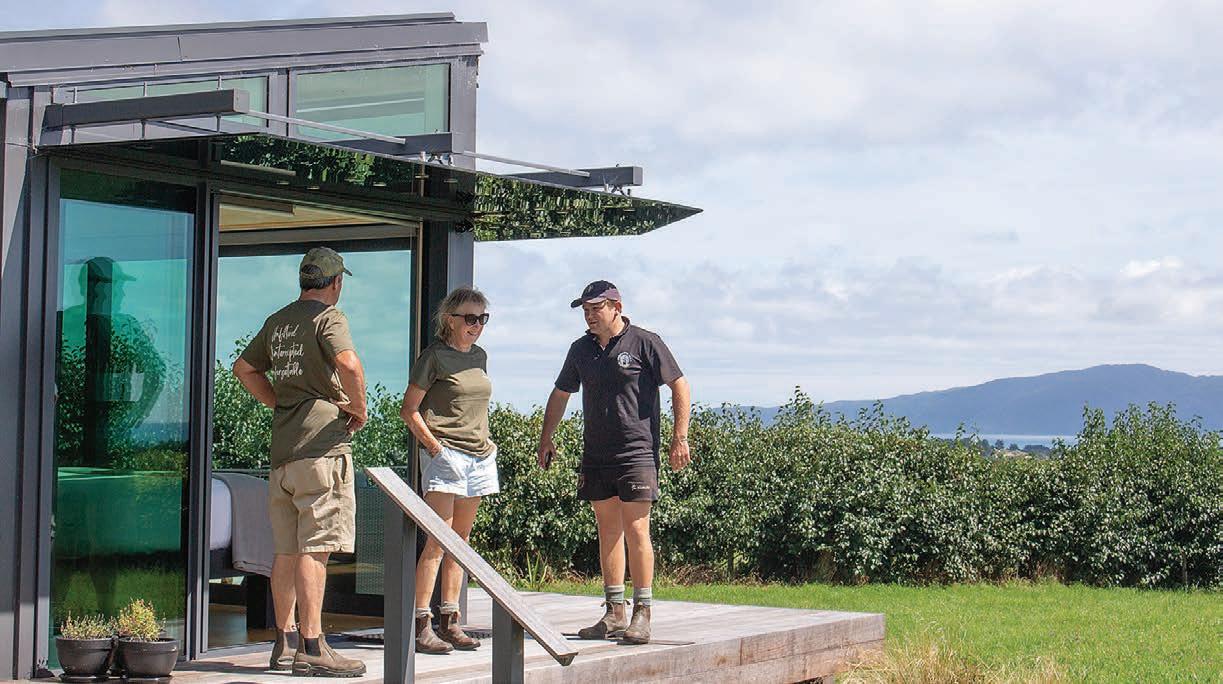 Charlie Williamson PEOPLE
Charlie Williamson PEOPLE
TUCKED away in the hills of Te Horo, a small rural community on the Kāpiti Coast, is one of the more enterprising family farming and horticultural operations around. And although you could be forgiven for being overwhelmed by the diversity of the operation at Stanmore Farm, Kate and Tim Gibbs and their son Harry have ensured everything works together in harmony on the 48ha block.
The family are growing grafted grapevines for New Zealand’s best vineyards, supplying fresh and frozen berries to local and domestic markets, farming a small herd of Hereford cattle and lambs to assist with fallow cropping, and more recently, have begun providing five-star ecoaccommodation overlooking the stunning Kāpiti Coast.
The premium grafted grapevines, however, come first, and it’s been that way since the 1980s on Stanmore Farm.
“My dad started this all as a farm back in the early ’70s, during which there was kiwifruit, raspberries and a Hereford stud – which was run during the weekends as he was working as a doctor in Wellington during the week,” Kate says.
“But then during the horticultural boom of the ’80s in this area it intensified, and I was a viticulturist in the wine industry and I came home and didn’t want to see it become a vineyard because the soils are too good.”
Grafted grapevines were the right fit as Te Horo sits in a mainly maritime climate, tucked beneath the Tararua ranges. In addition to
having some of the best soils in the North Island, the farm is frost free.
Around 85% of the grapevines produced at Stanmore Farm are sauvignon blanc, with the majority sent to the wine-growing region of Marlborough
“Even though we’re not near our customers, we quite like that we’re growing on this fertile soil with this great climate. So we produce big, chunky, healthy plants, which then go out to quite stony, bony areas sometimes,” Kate says.
“And we’re now having clients order our grapevines up to two years in advance because we’re selling out.”
A grafted grape vine, Kate explains, is simply a one-year-old, dormant grapevine.
“So the grapevines are growing all summer, and then when it drops its leaves we bring it into the shed, put them across our tables, clean them up, chop them back at the top and bottom, ensuring they meet the stringent quality standards.
“From there they are grouped into bundles of 25, put in boxes and sent away for planting on vineyards.
“Around 85% of the grafted grapevines we produce are sauvignon blanc, and the vast majority are being sent to the Marlborough region, although we do also send a large number to all the other main grape-growing regions, like Hawke’s Bay.”
The Gibbses don’t call themselves regenerative farmers, but they say they’ve been using regenerative farming practices right back from when Kate’s father had the reins.
They do this by having the nurseries on rotation, and when land is not being used it is planted
in a variety of crops and stood down for 2-3 years – which is when the livestock come into the equation.
“Because we have such highquality soils in Te Horo, one of the big things here is we fallow our land to keep soils healthy for the nursery,” Kate says.
The small herd of cattle and sheep are used to keep down the cover crops that keep the high quality Te Horo soils healthy and thriving while being stood down between rotations
Because of the seasonal nature of growing grapevines, and the significant downtime between harvests, there have been issues in the past with keeping nonseasonal workers employed all year round.
Harry, who is heavily involved in the day-to-day running of the operation – including the employment of its permanent and seasonal staff – says this was a significant reason for the decision to grow blackberries.
“The main thing with the berries is it gives us an opportunity to keep those good staff employed all year round. That is definitely the main driver,” he says.
Blackberries have now become a definitive part of the business with the berries used for an array of different things. The berries are exported fresh and frozen to local
and Auckland markets, are picked fresh on weekends by locals and visitors, and are used as one of the main ingredients for a local craft brewery’s berry beer and the traditional Polish liqueur distillery on the property.
“So there’s a Polish liquor company out the back called Barlovska, making three liqueurs, and one of them, which uses our blackberries, won the top trophy in the New Zealand Spirit Awards last year,” Harry says.
We quite like that we’re growing on this fertile soil with this great climate. So we produce big, chunky, healthy plants, which then go out to quite stony, bony areas sometimes.
The brewery that uses the berries takes other fruit from Stanmore as well, making a “fresh, seasonal pear beer using pears from a little orchard we have on the farm”.
“It’s convenient, but we also think it’s really important because it’s like that whole thing about being local, which more and more people care about at the moment.”
In recent years the Gibbses were looking at options to diversify their operation into tourism, given their proximity to Wellington and the stunning views out to Kāpiti Island and the Tasman Sea.
After evaluating several possibilities, Tim says, they decided on the PurePod option – a five-star ecoaccommodation model in terms of which the company installs the accommodation pods in 50/50 partnerships with farmers and landholders.
The PurePod system has allowed the Gibbses to pursue their aspirations of incorporating tourism into the operation without the headaches involved with marketing, filling and cleaning the accommodation
“If you do the glamping sort of thing, you have to market it

yourself, fill it yourself,” Tim says.
“If you’re running it as a business it can become a huge headache. And the thing is because this is high end, you’re probably getting the same return from doing half the work.”
The farm’s PurePod runs on solar energy, with a back-up diesel generator, and has a built-in aerated wastewater treatment system that mimics the way nature breaks down waste, making for a complete off-the-grid experience.
It’s built almost entirely of glass, allowing for sweeping views of the coast, and is loaded with state-of-the-art technology used to monitor everything from gas levels to the internal temperature – another reason Tim says it was a no-brainer.
“There are three levels of thermometers in the building here to monitor the different levels. If something goes wrong they always have their finger on the pulse.”
The PurePods company “has a local plumber, electrician, these sort of things all set up and on call who know the system”.
Tim says there were some concerns around signing the contract for the PurePod in the middle of covid, but the pod attracted fair numbers of locals and now it’s full most of the year.
“We’re now booked out for something like 75-80% of the year, with people coming out of places like New York City from a winter, so they just love it,” Tim says.
As well as allowing the Gibbses to diversify their income streams, the PurePod is helping with succession planning for the farm, providing an off-site income stream for Kate and Tim when Harry, as he notes, eventually buys them out.
“We’re also locked into a 30-year plan, so 100% I’m going to be running it [the PurePod] at some point. But the main thing that comes into it at the moment is that it gives Mum and Dad options.”
But for now, the grapevines will still be growing, and the berries will still need to be picked as the third generation gears up to continue the family tradition on Stanmore Farm.
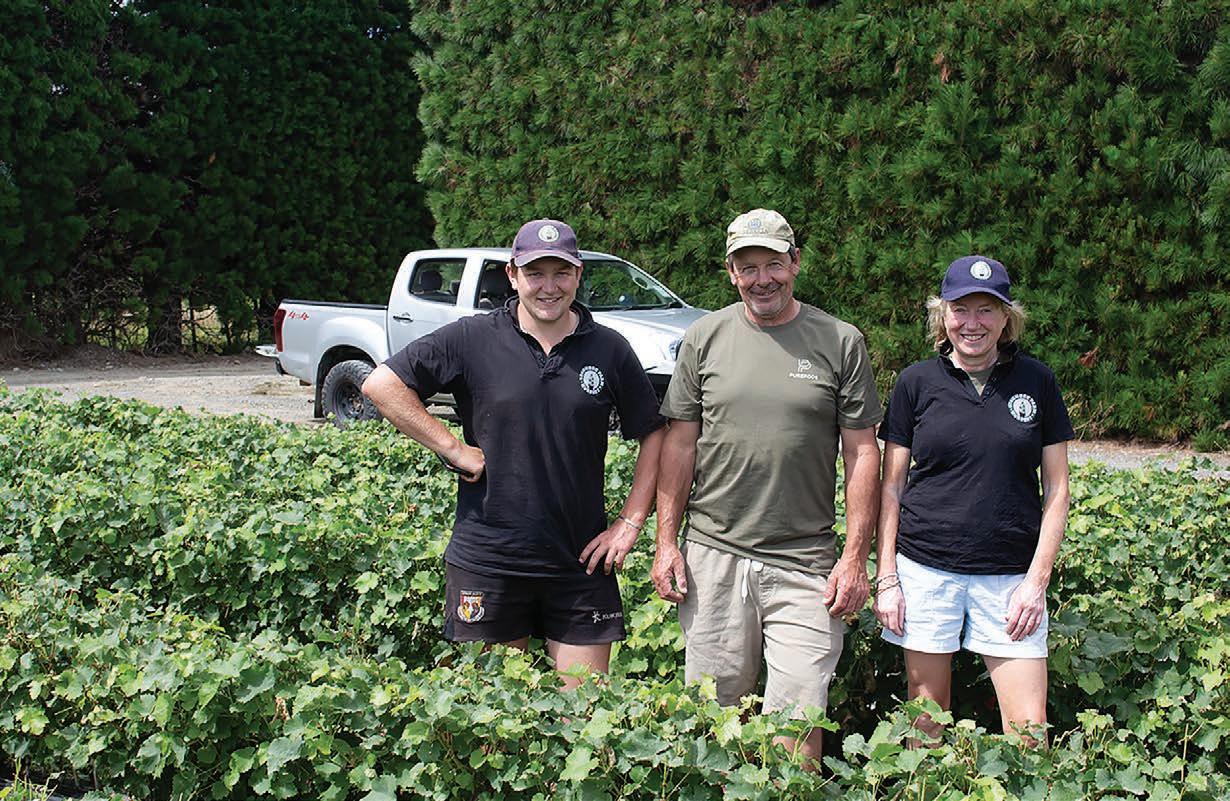
benefits via AI to wider biosecurity programmes in future, including monitoring pest trends over time.
“In biosecurity, things have been done the same way for a long time and now we have this amazing technology that is becoming available and we are looking to the future.
“It’s a big part of how we can protect the region going into the future.
“We’re embracing new technologies for biosecurity, especially when they can increase productivity both for our work programmes and for affected landowners,” Smith says.
Lythe says geospatial data, technology and analytics are core competencies in the business that provides a wide range of farm paddock and environmental services including monitoring riparian plant survival, measuring carbon sequestration and monitoring deforestation and replanting.
Geospatial analytics is the discovery, interpretation and communication of patterns within geospatial data in order to promote better business decision making.
ASUCCESSFUL pilot programme in South Canterbury has shown that AI may provide a more efficient way to inspect large swathes of land for biosecurity threats such as Nassella tussock.
The tussock is an invasive grass that is rapidly spreading in Canterbury. It displaces productive pastures and is unpalatable to stock.
Only 70 years ago, Nassella drove some farmers off the land after it ran rampant, taking over entire farms, leaving no room for crops or stock.
Each year, ECan’s biosecurity team spend months inspecting properties and ensuring landowners identify and control this pest plant and control its spread – a requirement of the Canterbury Regional Pest Management Plan.
New technologies now have the potential to streamline pest plant control while increasing
productivity both for the regional council’s work programmes and for affected landowners.
ECan recently partnered with Wellington-based Lynker Analytics to develop and train an AI programme to identify the pest plant from aerial imagery.
Lynker Analytics has specialist expertise in data science, data infrastructure and geospatial analytics.





High-resolution imagery, collected by a small plane, was captured with the support of the landowner.
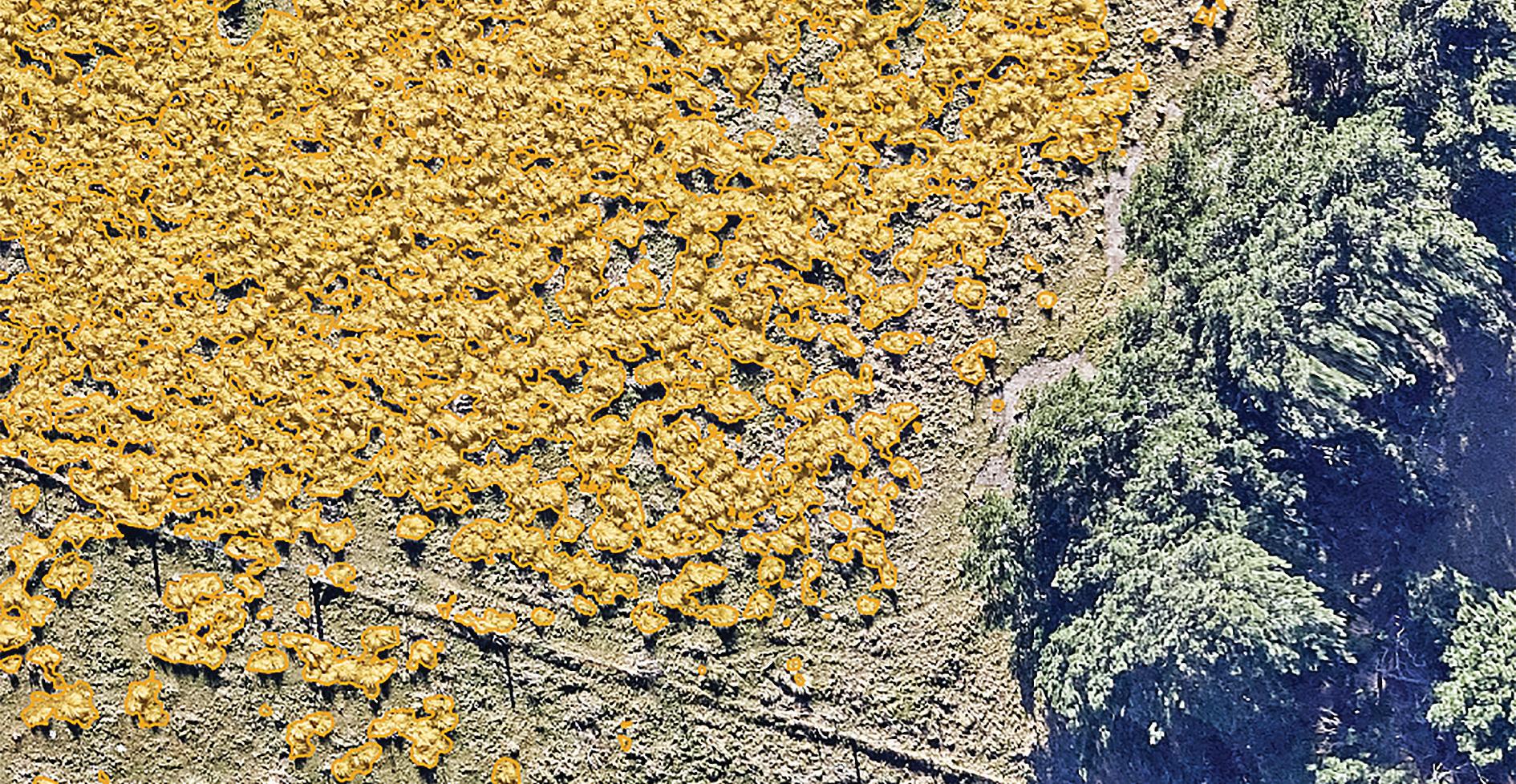

Lynker Analytics managing director Matt Lythe says the test image relies on high-quality images.
The photo used in the trial was 13GB in size and contained 3.6 billion pixels.
The machine learning model was trained by splitting up the large image into non-overlapping 512x512 pieces, called train, validation and holdout sets.
“This allowed the programme to learn over time to identify a pixel or group of pixels as either Nassella or not-Nassella,” Lythe says.
in future be able to use the AI to ascertain infestation levels on their own properties and plan control programmes accordingly, Lythe says.
ECan biosecurity team leader Matt Smith says the initial results show that the AI has a 90% success rate in identifying large, mature Nassella tussock.
More refining of the model is required to improve that identification rate.



“A geospatial system of record is essential to good organisation outcomes along with a robust data management plan and data architecture to help solve complex problems through the power of geography.
The benefits for the regional council in having AI identify pests through imagery are greater efficiencies in identifying previously unknown infestations, and in monitoring. It could potentially be used for initial inspections too, reducing the need for biosecurity staff to physically inspect the land as often. There is still a while to go before it can be implemented across the region, but landowners may
“An AgResearch study found that hand-control operations remove about 30-35% of Nassella tussock, mostly very small plants, which means about 65-70% is left behind,” Smith says.
A mature Nassella tussock can produce up to 100,000 seeds, so it is important to remove all infestations prior to viable seed being produced each year.
Currently ECan’s Nassella tussock programme is mostly carried out on foot.
Smith says there could be many








“Data visualisation is really the modern equivalent of visual communication, building engagement systems through data visualisation to explain the significance of information by placing it in a visual context.
“It can be used to equally monitor farmland for good plantings as well as the unwanted pest plants.”
Lynker Analytics is currently working with Silver Fern Farms undertaking sequestration mapping for its net zero carbon project.
“Nassella is only a model and it is quite effective to train to be a very dedicated model for other work such as this net zero carbon project,” Lythe says.
It’s a big part of how we can protect the region going into the future.
Matt Smith ECan biosecurity
After paying his dues on other farms, as young farmers around the world do, a Danish farmer was able to buy his own land and set about improving the dairy. Chris McCullough reports.
HAVING worked on and managed a number of dairy farms after completing his education, it was always Danish farmer Jesper Toft Bitsch’s dream to one day own his own unit and milk his own cows.
However, the road to that goal is never easy for young farmers like Toft Bitsch, trying to get into the dairy industry with hurdles such as finance and farm availability to overcome.
Toft Bitsch trained as a farmer at Denmark’s Agroskolen and Bygholm Agricultural School in 2012 and then took a job as the feeding manager on a farm with 500 cows.

In 2014, he then moved to another farm as feeding manager, before becoming qualified as an agricultural economist.
By 2018, his aspirations of running his own farm fell into place, as a 150ha unit at Aulum, central Denmark, came up for sale, and he was able to buy it.
Toft Bitsch, now 31, says: “That was the start of my journey to being my own boss as a dairy farmer. Armed with a detailed business plan I was able to secure enough funding to purchase the farm and start to change things around on the original dairy system.”
One of the biggest changes Toft Bitsch made was converting the farm to organic status in the hope of achieving higher milk prices. The price he receives currently is 66 euro cents per litre ($1.14).
Toft Bitsch started off with 160 cows and, in 2020, built a new barn to accommodate more stock.
Since then he has increased cow
numbers to 220 and achieves an annual average yield of 12,200kg.
The new barn, which also has space for dry cows and calving pens, was built almost perpendicular to the original barn, which today houses younger cows.
There are three Lely Astronaut A5 milking robots installed, two in the old barn and one in the new one, each milking 65 cows.
Toft Bitsch says: “I am budgeting for 60 milking cows per robot, but they can easily handle 65, so we have slightly increased the number of cows.
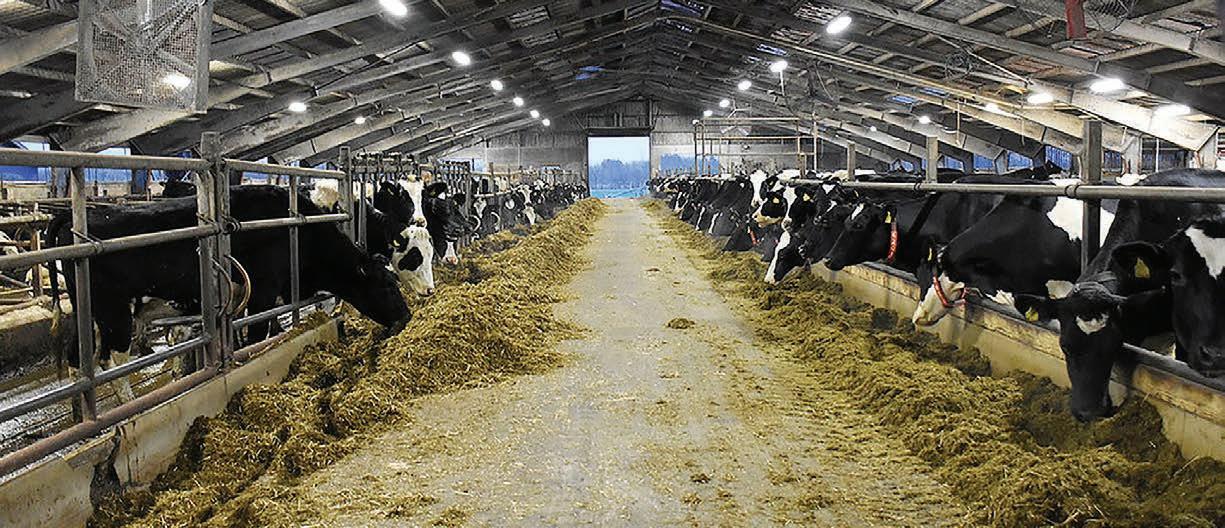
“The new barn cost 3.2 million
Danish Krone [$745,000] to build and contains 112 cubicles plus a section for calving pens and sick bays.
“All the cubicles are bedded with sand, as we find it keeps the beds much drier. I was very familiar with using sand on the other farms I worked on, therefore it was an easy decision to use it on my farm as well.”
Toft Bitsch is aiming to use only locally grown protein in the cow diet.
He says: “We do not use soyabeans as they are usually imported from overseas and it is not always clear if they are grown in a sustainable way.
“Our milk is supplied to dairy company Thiese, which some years ago decided its producers should stop using soyabeans in the feed.
“Instead, we use locally grown grass, field beans, canola and lupins in our rations. They do not fit in very well in a crop rotation for milk producers who grow a lot of clover grass and maize, but it is easily grown by neighbours and is therefore not transported over long distances.
“For some time our organic milk producers have been phasing out the use of soyabeans and now our conventional producers are beginning to do the same.
We do not use soyabeans as they are usually imported from overseas and it is not always clear if they are grown in a sustainable way.
Jesper
Denmark
“Danish dairy companies no longer accept GMO soyabeans and non-GMO soyabeans are very expensive.
Therefore, the advice is to replace soyabeans with other protein crops.”
Toft Bitsch is aiming to keep protein levels in the total mixed ration (TMR) under 17%, which is in line with a voluntary agreement made by Danish milk producers three years ago. At that time, about 50% of producers used more than that level.
Toft Bitsch says: “The agreement was put in place to prevent public regulation. By reducing the protein percentage in TMR, we as livestock farmers can help contribute to the overall goal of reducing ammonia emissions.”
Farmers Guardian
THE four leading United Kingdom farming unions have issued a joint statement demanding the government address their concerns over food security and the end of the Energy and Trade Intensive Industry scheme.
The latest call comes as union presidents Minette Batters of the National Farmers’ Union, Martin Kennedy, president of NFU Scotland and NFU Cymru president Aled Jones joined Ulster Farmers’ Union president David Brown and Irish Farmers’ Association president Tim Cullinan for a meeting in Northern Ireland.
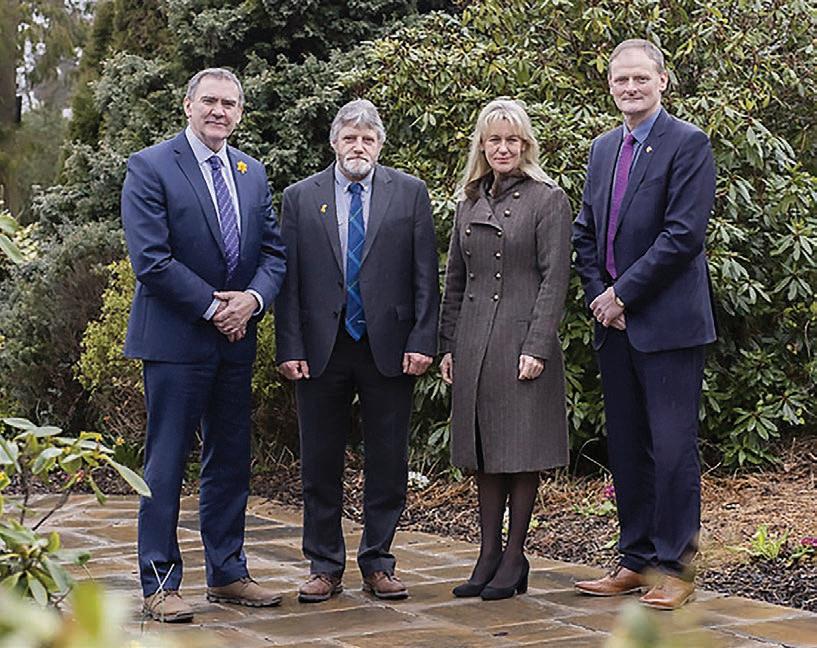
The leaders chose the final day of the scheme (March 31) to reissue their demand, which follows on from a joint letter written to Secretary of State Grant Shapps MP at the beginning of the month; it has gone unaddressed.
Issuing their latest statement, the unions said: “For the UK Government not to extend the highest level of energy relief to sectors highly dependent on energy to rear, grow and store food is a failure of the government to recognise the deteriorating position on food security.
“We have been crystal clear in pointing out to the government and ministers that unless the Energy and Trade Intensive Industry scheme [ETII] scheme is amended to provide support for primary agricultural production, there could be a reduction in domestic food production, which may prolong the ongoing food price inflation for consumers.
“There is a cast iron case that, from April 2023, the ETII scheme should be providing the highest level energy relief to a number of sectors within primary agricultural
production alongside the relief that is being offered to food processing and manufacturing.
“To offer relief to one without the other is self-defeating if we are to genuinely address consumer concerns over food shortages and empty shelves.
“Many of our farm businesses are reliant on gas and electricity to produce fresh food and they will struggle to absorb the huge hikes in energy prices that they will face from April 2023.
“It is within the gift of the government to address genuine food security concerns and to review the classification for higher level support. Energy prices are already seriously damaging our ability to produce food and from this weekend, many of our members’ businesses will face an energy cost cliff edge.” Farmers Guardian
Rewarewa Ridge is a remarkable property that has been transformed from unspoilt countryside into a productive grazing operation. Located just a short distance from Tauranga and Mount Maunganui, the property offers a breathtaking north facing views of the Bay of Plenty, including the ports of Tauranga and Mount Maunganui, as well as the coastal playground stretching from Mayor Island to the Alderman Islands, Slipper Island and further. The property features a geo tech approved building platform, which provides an opportunity to build your dream residence now or in the future. The farm is fenced into 42 paddocks with reticulated trough water to all paddocks. Good all weather internal access roads make for easy stock management. The property supports approximately 240 dairy grazers and produces around 250-300 bales of wrapped silage. In terms of buildings, the property includes a four bay lock up half-round shed, cattle yards, and a loadout area.
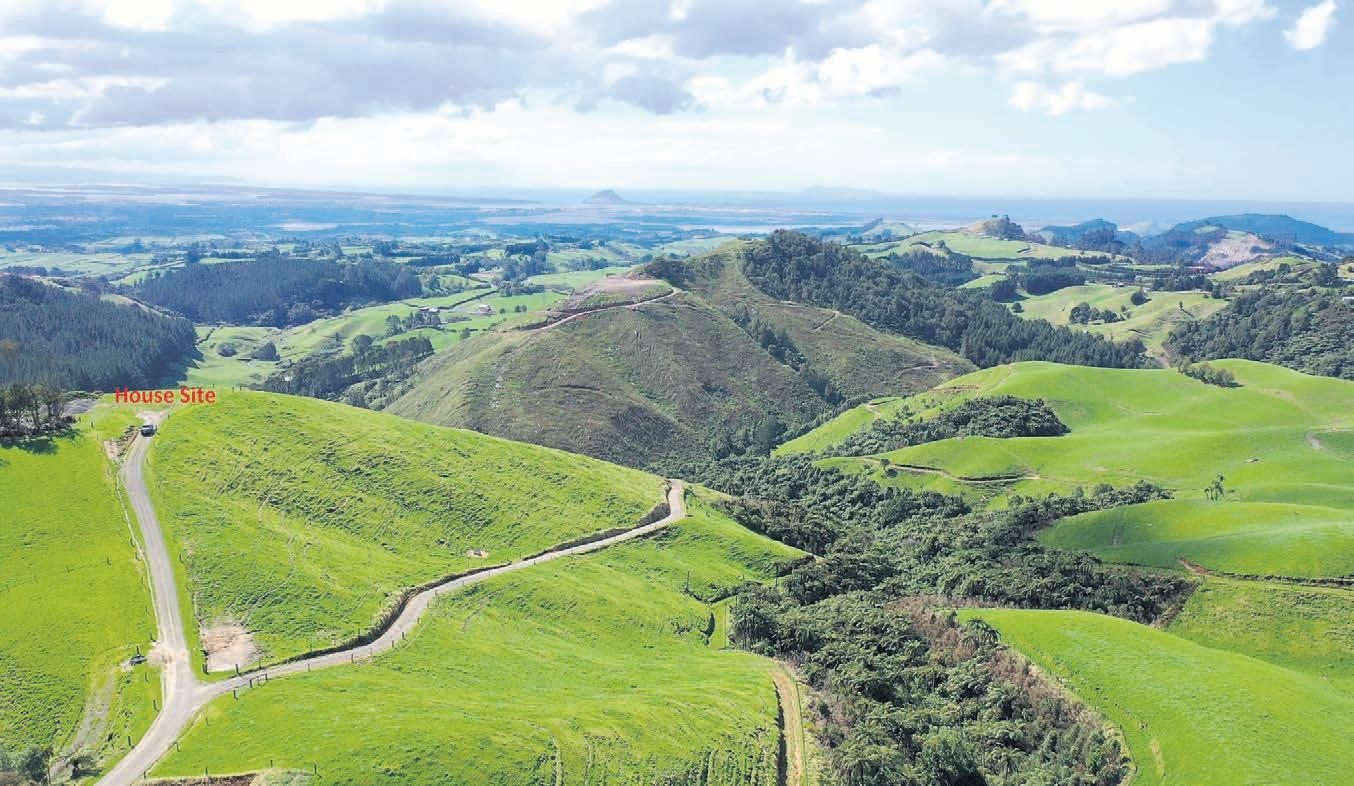
Open Day
Tender closes 1.00pm, Thu 27th Apr, 2023 (unless sold prior), Property Brokers, 63 Jellicoe Street, Te Puke View By appointment Web pb.co.nz/TZR117179

Brett Ashworth
M 021 0261 7488 E bretta@pb.co.nz
Ian Morgan
M 027 492 5878 E ian.morgan@pb.co.nz

Dairy units of this size are rarely offered for sale in this locality. Approximately 348 ha (more or less) is being offered for sale encompassing six titles. Up until this last season the farm has been milking 850-900 cows for a three year production average of 317,600 kgMS (19/20 - 21/22 seasons from 441 ha) with all young stock grazed on the property and cows wintered at home. This season has seen a change in farm practice where cow numbers have dropped to 450 and 100 ha of maize is being grown on the property. Approximately 250 ha of the property is flat to gently rolling contour with the balance being made up of moderate hill country. 114 ha of the property is currently irrigated via two central pivot units. Application has been lodged to bring a further 26 ha in under a third pivot.

16 2 6
Tender closes 12.00pm, Thu 20th Apr, 2023 (unless sold prior), 38 Landing Road, Whakatane View Wed 12 Apr 10.30 - 12.00pm Web pb.co.nz/WTR117036

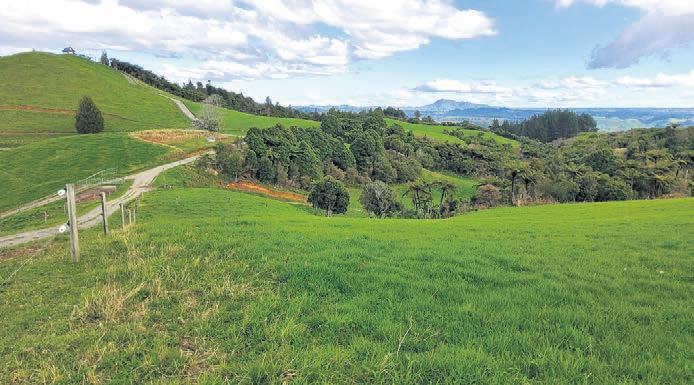
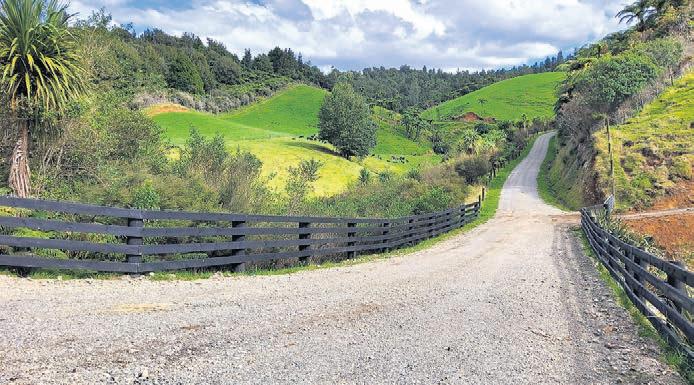
Phillip Berry
M 027 478 8892 E phillip.berry@pb.co.nz


Peter Lissington
M 027 430 8770 E peterl@pb.co.nz


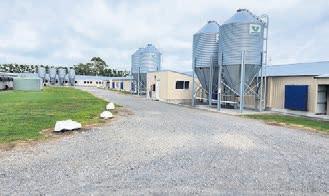
For sale is this large and very well presented and maintained poultry production farm which is contracted to Tegel. Ideally located in the desirable Lepperton district in North Taranaki, the property comprises of eight modernised sheds of varying sizes with a combined total net shed area of 11,290 m2. 5.5 - 6 runs annually with 190,000 birds per run. Substantial investment into fully upgrading and automation to ensure sheds are at the highest standard for their ages. Other improvements include natural energy (solar) and water storage facilities. All supporting plant and equipment is included. Approximately 1.5 ha of grazing land subdivided into five grazing paddocks.


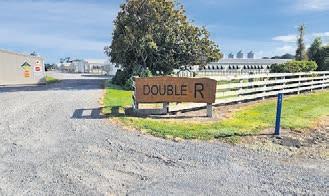

Blairlogie

This very productive 296 ha farm, with a good balance of soil types, enables stock to be moved to the lighter soil when it is very wet. Considered 'summer safe', the property has an average rainfall of 1,000 mm. The property has very good infrastructure, with good cattle yards, sheep yards and covered yards/woolshed complex, as well as other buildings. The home is a 180 m2, four bedroom, two living area, dwelling, in good condition, with a separate garage. Subdivided into 44 main paddocks, pastures are very good with many new tetraploid pastures. Excellent trimmed shelter belts and some native plantings are a feature of this property.

Our combined strengths complement each other, creating more opportunity for our customers and Farmlands shareholders across provincial New Zealand.

• A nationwide network from Northland to Southland





• Sound, trustworthy advice from market-leading experts
• Shareholder benefits and preferential commission rates means more money in your pocket
Bigger networks, more buyers, better results


For more information call 0800 367 5263 or visit pb.co.nz/together
158.6 ha - Arable treasure at Methven



'Cloverlea' is a quality, non-irrigated, arable / livestock farm located in the highly regarded Mid Canterbury area of Methven. Held in family ownership for four generations, this is a 'once in a lifetime' opportunity to secure this extremely well presented family farm which has been conscientiously managed for over 70 years. Farm management is based on the quality Mayfield soil, reliable climatic conditions and rainfall plus a low cost arable system focused on attaining consistent yields and productivity. Excellent improvements and infrastructure including two quality homes and a wide range of sheds plus seed dressing/drying operations add value, versatility and reliability.
Deadline Sale closes Thursday 4th May, 2023 at 12.00pm, (unless sold prior), Property Brokers, 217 West Street, Ashburton

 Lepperton 687 Manutahi Road
Lepperton 687 Manutahi Road

Deadline Sale
15.88
This unique apple orchard sits on 15.88 ha of fertile soils, close to Ashburton and presents a rare opportunity for the Mid Canterbury plains with 13.2 ha steady state orchard planted in 2014. The orchard produces 'Honeycrisp' apples for the North American market under a BioGro (organic) certificate. The orchard has a Manager's dwelling on site and plenty of staff accommodation. The apple orchard is ready to carry on the good work already completed and watch the apples head out the gate.

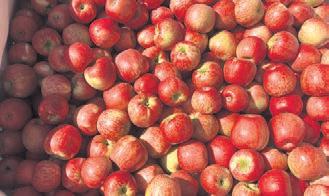


For Sale Buyers $2,250,000+
'Rosedale' is a productive irrigated unit that has benefitted from consistent inputs and management over many years. It produces reliable yields of high quality crops that include brassica seeds, vegetable seeds, cereals, grass seed, fescue seed and clovers alongside lamb finishing and dairy grazing opportunities. The variety of crops grown reflecting the versatility of the farm alongside the management practices enjoying the trust of mercantile firms to reproduce high value seeds such as evening primrose, parsnips, carrots, red beet and mustard.
The farm boasts an immaculately presented four bedroom homestead in a broad garden setting with hard tennis court and inground swimming pool.

4 2 2

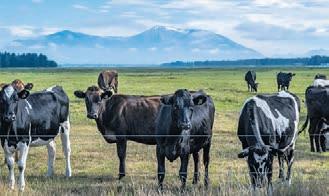
Irrigated dairy support / finishing property with a BCI Authorised Land Use of 2,500 R1's and R2's and wintering 700 dairy cows annually - this farm is ready to go for the coming winter. Total available RSU's 5,804. This farm also features a modern four bedroom home with views to Mt Hutt and surrounding mountains. A good set of cattle yards completes the picture. Ready to takeover and winter your stock.
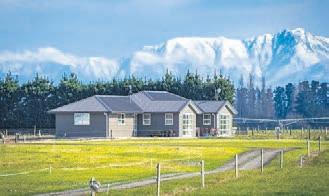

4 2 2
For Sale Buyers $6,675,000+


View By appointment Web pb.co.nz/AR117700



We bring to the market this 408.19 ha dairy farm, supplying Synlait under an A2 contract. With a modern 80 bail rotary, fully automated shed and adjoining feed pad. This allows the current vendors to supply a winter milk contract as well as seasonal supply. Current Vendors run a flexible system depending on potential payment. Lower payment years may see a lower stocking rate and cows wintered on farm whilst higher payout levels see stocking rate lifted and cows wintered off.

Paul Cunneen M 027 432 3382
Jason Rickard M 027 245 8495

For Sale By Negotiation + GST (if any)
View By appointment Web pb.co.nz/AR117101 Jason Rickard M 027 245 8495
Paul Cunneen M 027 432 3382











 Paul Cunneen & Jason Rickard
Paul Cunneen & Jason Rickard
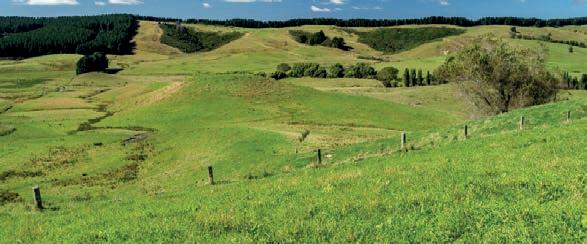
Located in a tightly held district only 27 kilometres south of Ohakune, a rare opportunity to purchase either one or both of these two attractive properties, each offering easy contour with exciting production potential.

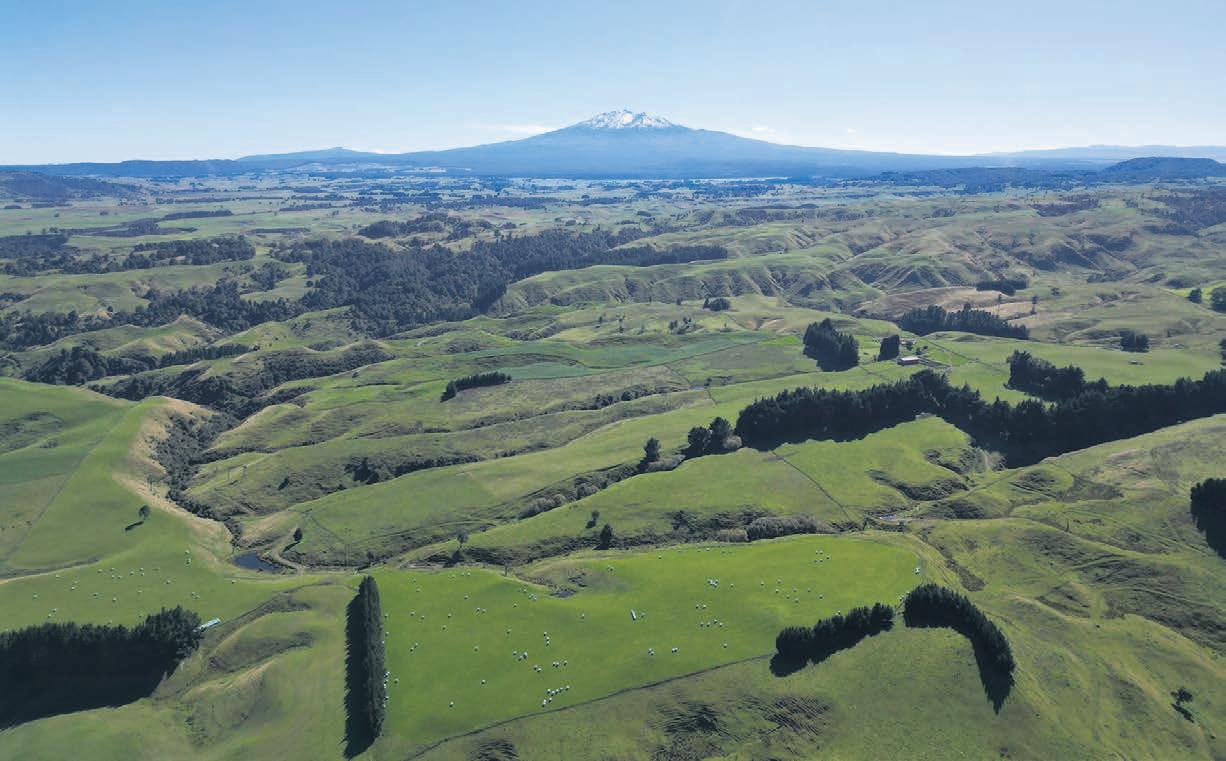
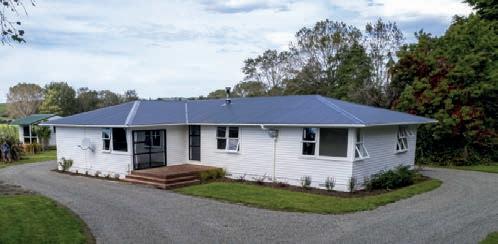
The 139ha Whangaehu Valley Road block has a homestead with three bedrooms plus an office, and boasts 30ha of flat to easy contour and the Maketu Stream. The larger 367ha block on Owhakura Road is dominated by easy country featuring Ohakune silt loams and includes a five-stand woolshed, large cattle yards, airstrip and older accommodation, all easily accessed in the centre of the farm. This reliable rainfall district is renowned for producing healthy livestock, with both farms having been conservatively farmed by our retiring vendors. bayleys.co.nz/2900585


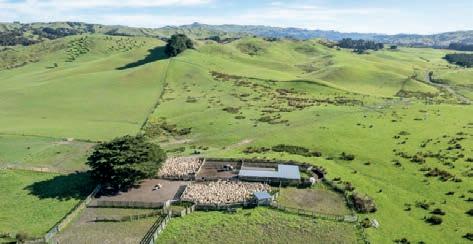


507ha
Tender (unless sold prior)
Closing 2pm, Thu 11 May 2023
Bayleys, 16 Goldfinch Street, Ohakune View by appointment
Pete Stratton 027 484 7078 peter.stratton@bayleys.co.nz
MATATA 697 Matata & 172 Sutherland Roads
Scale on the Plains - Eight Titles - 177ha
1618 Waituna Tapuae
• 2,600 - 2,700 stock units
• High quality Kiwitea series soils on the hills and silt loam flats, with good fertilizer history
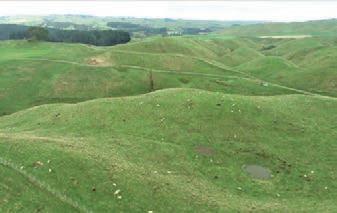



• Fenced into 22 main paddocks
• Well tracked and double fenced central laneway
• Airstrip, metal quarry and 7Ha mature pine plantation
• Good water supply reticulated to troughs
• 4 stand woolshed and yards
• 5 bedroom home with stunning views in need of renovating
Tenders Close: 4.00pm 11th May 2023 at 56 Stafford St, Feilding.
View: Wednesday 12th & 19th April
1.30 - 3.30pm
Call for more information or to arrange a time to view.
Richard Anderson 027 543 1610 richard@rals.co.nz



Robert Dabb 027 255 3992 robert@rals.co.nz
Best production 205,602kg MS, rearing 100 calves on whole milk
• Milking 500 mixed age cows, Dairy NZ 3 production system

• 28 ASHB dairy shed with ACR's, two herd homes, full complement of support buildings
Fonterra whey scheme supply and infrastructure in place - Two, three bedroom homes
This is a highly productive dairy farm on the renowned Rangitaiki Plains, a recognised region known for its great climate, highly productive soils and exceptional lifestyle.
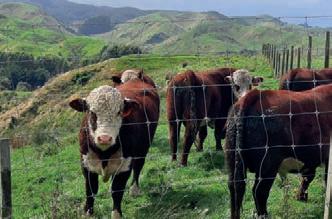
6 2 2
TENDER
Plus GST (if any)
(Unless Sold By Private Treaty)
Closes 4.00pm, Thursday 20 April
VIEW
Reach every farmer in New Zealand every week
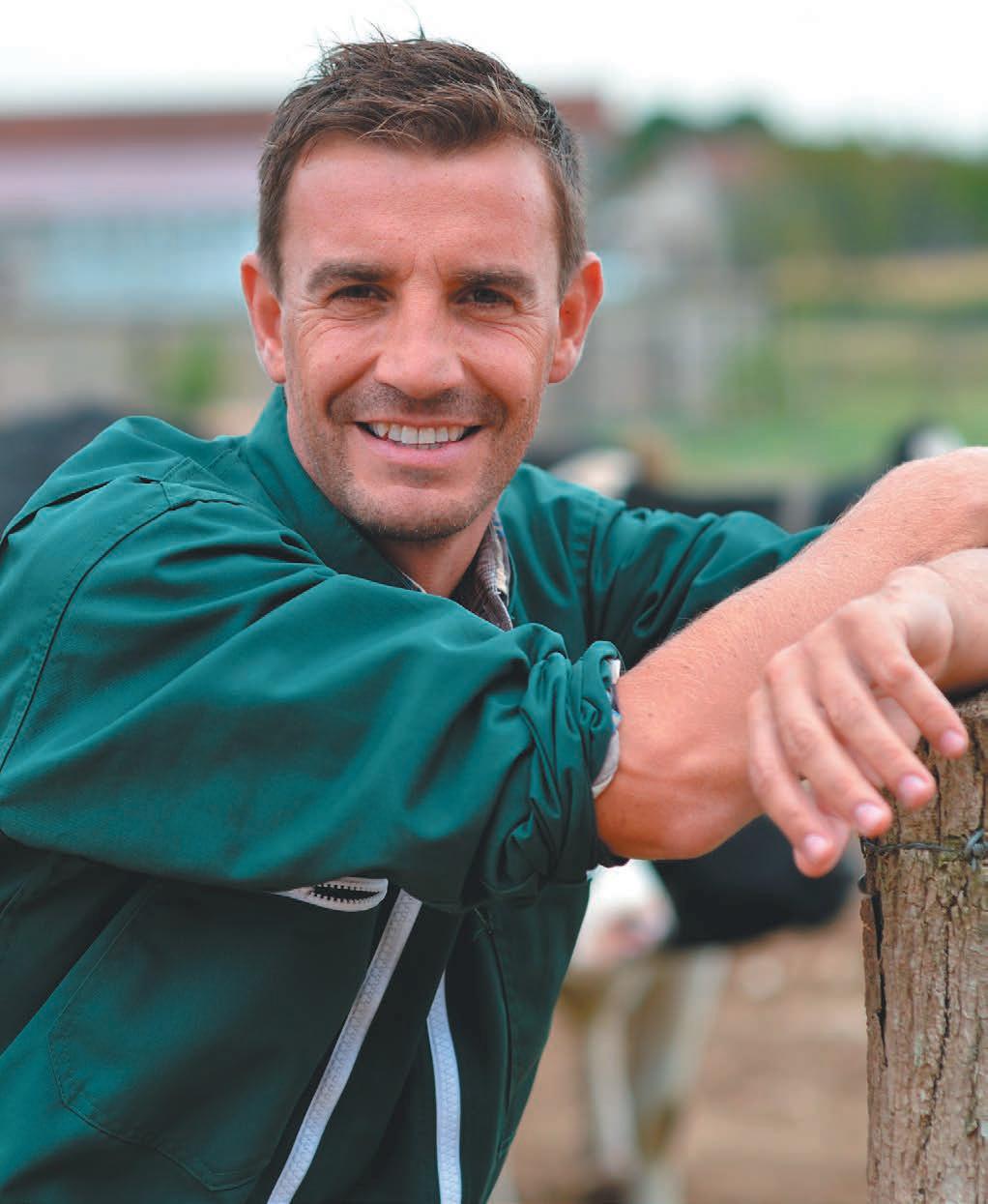
Call Grant 027 887 568
Estimated 262ha effective pasture. Contour around 40ha flat to easy, balance medium hill. Soils predominantly Waiotira clay loam. Well fenced and tracked to around 32 paddocks. Good array of sheds including three stand woolshed and two bay implement shed.

Shepherd 0274 410 436 c.shepherd@barfoot.co.nz
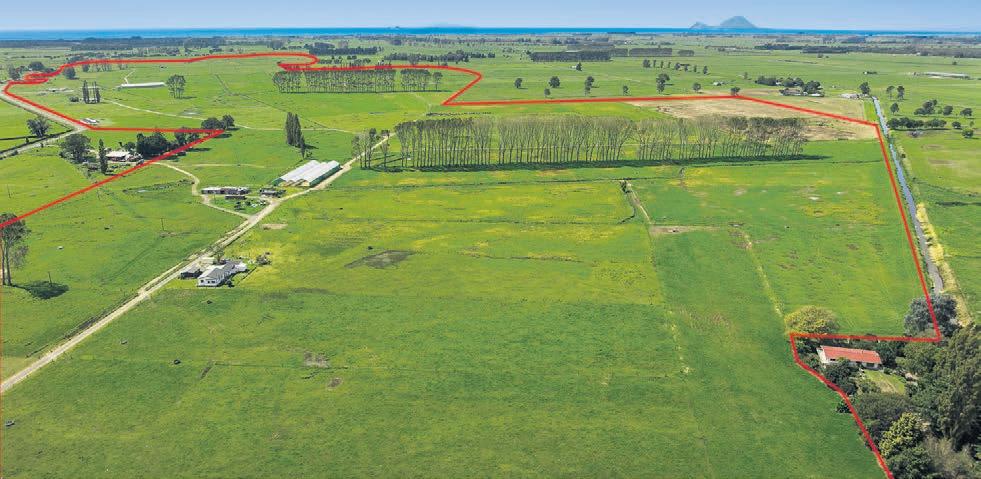
Lone Star Farms, Middlemarch, South Island

After 8 years our current Stock Manager is moving to a Farm Manager’s position, opening up this exciting opportunity for a new Stock Manager to join the team. This position would suit either an experienced Stock Manager who is keen to broaden their skillset by trying a new farming system, or an experienced shepherd who is ready to step up to a new challenge.
This role will involve the day to day responsibility of the livestock enterprises. This requires the ability to think dynamically and be adaptable, as well as effectively utilising the resources available to you – your team, feed, and infrastructure. You will also have input into the strategic running of the whole property and be involved with goal setting and planning.

The ideal applicant will have:


n Energetic, positive attitude, excellent attention to detail
n Forward thinking and well organised
n Motivated to initiate and drive your own development
n Experienced feed manager, with an understanding of how to promote stock performance




n Good communication skills, ability to both understand and deliver

n A leader in Health and Safety best practice and promoting team culture
n Interested in monitoring livestock performance, using results and data to inform decision making
Further information is available at www.lonestarfarms.co.nz
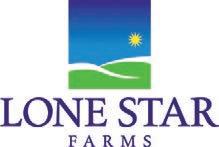
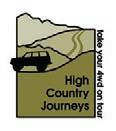
Interested applicants should phone Gus Barr on 027 509 4000 or apply by emailing your CV and cover letter to thewandle@lsf.co.nz
raymond.d@ slingshot.co.nz
DOGS FOR SALE
3-YEAR-OLD b&t Huntaway. Well bred for hill country. Needs work. Reluctant sale. Feilding. Geo White. Phone 027 274 1478. BUYING / SELLING. Huntaways. Heading dogs. Deliver NZ wide. https:// www.youtube.com/@ mikehughesworkingdog 07 315 5553. TOP BLOODLINES. Heading pups guaranteed. Phone Dave Andrews 027 450 6095.
PROMOTES QUICK PASTURE growth. Only $6.50+gst per hectare delivered. 0508-GIBBGRO [0508 442 247] www. gibbgro.co.nz. “The Proven One.”
FERAL GOATS WANTED. Pick-up within 24 hours. Prices based on works schedule. Phone Bill and Vicky Le Feuvre 07 893 8916 / 027 363 2932.
GOATS WANTED. All weights. All breeds. Prompt service. Payment on pick up. My on farm prices will not be beaten. Phone David Hutchings 07 895 8845 or 0274 519 249. Feral goats mustered on a 50/50 share basis.

FARM WANTED TO BUY SHEEP AND BEEF farm wanted to buy. 200-500 ha, Manawatu/Wanganui, Tararua or Wairarapa areas.
WANTED
NATIVE FOREST FOR MILLING also Macrocarpa and Red Gum, New Zealand wide. We can arrange permits and plans. Also after milled timber to purchase. NEW ZEALAND NATIVE TIMBER SUPPLIERS (WGTN) LIMITED 027 688 2954 Richard.

NZ KELP. FRESH, wild ocean harvested giant kelp. The world’s richest source of natural iodine. Dried and milled for use in agriculture and horticulture. Growth promotant / stock health food. As seen on Country Calendar. Orders to: 03 322 6115 or info@nzkelp.co.nz
LAND FOR LEASE MOTU, MATAWAI, Whitikau areas. 687 hectares. Phone 021 236 0457 or 07 322 8497.
PUMPS
DAIRY OR GRAZING. Rangitīkei / Manawatū through to HB. Regenerative farming practiced. Open to developing land in partnership. Phone Michael 027 223 6156. HIGH PRESSURE WATER PUMPS, suitable on high headlifts. Low energy usage for single/3-phase motors, waterwheel and turbine drives. Low maintenance costs and easy to service. Enquiries phone 04 526 4415, email sales@hydra-cell.co.nz
RAMS FOR SALE
WILTSHIRES-ARVIDSON. Self shearing sheep. No1 for Facial Eczema. David 027 2771 556.

RURAL MASSAGE
RELAXING FULL BODY massage in rural Ohaupo. Unwind. De-stress. www. ruralmassage.co.nz or call 027 529 5540.


SERVICING SOUTH WAIKATO, King Country, Ruapehu, Taihape areas. Eleven years experience, NZ & UK. Fully Pneumatic, 3 Way drafting, EID available. No mob too big or small. Wet/dry to Triplet and foetal ageing. Phone for prices and availability 027 479 4918.

STOCK FEED
MOISTURE METERS Hay, Silage dry matter, grain. www.moisturemeters.co.nz 0800 213 343.


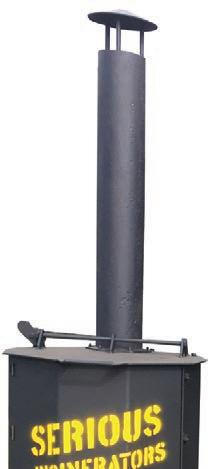
P o r t a b l e , m o d e r n a n d i n n o v a t i v e , o u r e x p a n d a b l e t w o - b e d r o o m u n i t i s t h e i d e a l s o l u t i o n f o r f a r m w o r k e r ' s a c c o m m o d a t i o n C l e v e r l y e n g i n e e r e d a n d b u i l t f o r m a x i m u m c o m f o r t a n d e n e r g y e f f i c i e n c y , t h e u n i t c o m e s c o m p l e t e w i t h a g e n e r o u s l i v i n g s p a c e , k i t c h e n , a n d f u l l y - e q u i p p e d b a t h r o o m

2000 MA ROMNEY FE Tol EWES
Going to Trees
1250 MA KELSON COMP EWES
Storm Damage Sale
STOCK REQUIRED
2nd -4th CALVING ANGUS COWS
Due Aug/Sept
FRSN BEEF BULLS 150-240kg
2YR HEREFORD BULLS 400-450kg
2.5YR ANG & ANG X STEERS 500-600kg
www.dyerlivestock.co.nz

Ross Dyer 0274 333 381
A Financing Solution For Your Farm
E info@rdlfinance.co.nz

There was an old man who lived by a forest. As he grew older, he started losing his hair until, on his deathbed, he was completely bald. That day, he called his children to a meeting…
He said, “Look at my hair. It used to be so magnificent, but it’s completely gone now. My hair can’t be saved. But look outside at the forest. It’s such a lovely forest with so many trees, but sooner or later they’ll all be cut down and this forest will look as bald as my hair.” “What I want you to do…” the man continued. “Is, every time a tree is cut down or dies, plant a new one in my memory. Tell your descendants to do the same. It shall be our family’s duty to keep this forest strong.” So they did.
Each time the forest lost a tree, the children replanted one, and so did their children, and their children after them.
And for centuries, the forest remained as lush and pretty as it once was, all because of one man and his re-seeding heirline.
LONG EST, HIGH PRODUCING CAPACITY Frsn/FrsnX In-Milk
COWS & YOUNG STOCK NEVER BEEN OFFERED FOR SALE IN PADDOCK A/c GG Ring
Date: Thursday 13th April 2023
Address: 298 Rangitanuku Road Matamata – Te Poi – D/N 77744
Start Time: 11.30am, luncheon provided will be available for online bidding
COMPRISING:
230 x I/C Frsn/FrsnX I/M Cows – BW198 PW254 RA99%
50 x I/C Frsn/FrsnX hfrs – BW270 PW293
50 x Frsn/FrsnX R1 hfrs – BW277 PW292
DETAILS:
Cows: DTC 10/07/23, Capacity herd
530M/S/C, milked in a rotary shed, Nominated
LIC Crossbred & Jersey, Ab 6 weeks, tailed with Jersey, bull removed 12/12/22.
Salmonella Vaccinated and BVD BM Tested.
Heifers: DTC 10/07/23 to Jersey bulls, removed 12/12/22.
Farmed on a system 4. SCC 99,000 TB C10.
AUCTIONEERS NOTE:
‘END OF AN ERA’
This high capacity well uddered herd has been on this farm for the last 32 years. Well managed herd in every aspect. These cows are very quiet and come forward in excellent condition. A great opportunity to purchase high producing cows that won’t let you down.
DELIVERY/PAYMENT TERMS:
Deferred Payments till 1.6.23. Cows can stay on farm for those with no genuine access to existing farms.
CARRFIELDS LIVESTOCK AGENT: Pat Sheely 027 496 0153 pat.sheely@carrfields.co.nz
OUR VENDOR: Guy Ring 027 577 7440 guyring@xtra.co.nz
"MAXIMISING YOUR RETURN THROUGH PERSONAL LIVESTOCK MANAGEMENT"

Thursday 20th April
Viewing from 9am
260kg+ & 350kg+ Friesian Bulls
1st & 2nd Calving Angus Cows in-calf to Ang
Capital line of Ewes scanned in-lamb
Richard Seavill, Ph: 021 169 8276
Wnr/R1 Jersey Bulls, any weights, good type
Chris Kyle, Ph: 027 496 7412
STOCK WANTED STOCK FOR SALE
Contracts available for 80-100kg Friesian & WF Bulls
Chris Kyle, Ph: 027 496 7412 or Bryce Young, Ph: 027 496 7411
Ph: 0800 827 455 Email: admin@byl.co.nz Website: www.byllivestock.co.nz

SPECIAL ENTRIES
A/C Bexley Hereford Stud
THURSDAY 13TH APRIL START 12pm
45 Hereford Weaner Bulls 275kg av
12 Angus Weaner Bulls
FRIDAY 14TH APRIL START 12pm
75 Hereford Weaner Heifers 250kg av
15 Angus Weaner Heifers
7 Speckle Park Weaner Heifers
CONTACT:
Grant Ross 021 174 8403
EARLY CALVING, I/C FRSN/FRSNX I/M HERD & HEIFERS + MACHINERY
A/c Edward Lee Ltd
Date: Wednesday 12th April 2023
Address: 730 Matuku Road RD 5 Morrinsville – Synlait 5375
Start Time: Machinery 11.00am, Cows 11.30am – Lunch provided will be available for online bidding
COMPRISING/DETAILS:
220 x I/C Frsn/FrsnX I/M Cows BW165
PW165 RA85% DTC 7/7/23, PSS LIC
Frsn, AB 5.5 weeks, tailed Angus bull removed 7/12/22. SCC 200,000, TB C9
62 x I/C Frsn/FrsnX Hfrs BW211 PW224 DTC 7/7/23 to Jersey bull removed 7/12/22.
MACHINERY LIST:
Mobile 60 teat calf feeder, Milk bar 50 teat mobile feeder, 7 x portable teat calf feeders, 8 x tipper drums, CF MOTO 500 Quad bike 4X4, Refrigeration unit + More to come plus assortment of she sundries. Sam spreader
2.75 ton, Kuhn GMD802 3.2mtr mower, Krone swadro rake 800/26 2009, Duels 15.5r 38, Duels 16.9r 38, John Deere 6200 new loader, John Deere 6800, 12 ton home madetip trailer, 400L trailer diesel tank with electricpump, Aitchison roller drill with second roller.
AUCTIONEERS NOTE:
These cows are very quiet, owner milked for 13yrs. A great opportunity to purchase early calving cows on system 2 producing 420 M/S per cow that won’t let you down.
Cows & Heifers are pregnancy tested prior to auction and can carry a 3 week in-calf guarantee from sale. Retiring vendor as the farm has sold.
DELIVERY/PAYMENT TERMS:
Deferred payments till 1st June 2023. Cows can stay on farm for those with no genuine access to existing farms.
CARRFIELDS LIVESTOCK AGENT: Matt Hancock 027 601 3787 matthew.hancock@carrfields.co.nz
A/c Fantastic Farms Ltd
Date: Monday 17th April
Address: 625 Tauhei Road, Morrinsville, Tanker number OCD 252
Start Time: Machinery 10.30am, Cows 11.30am will be available for online bidding
COMPRISING:
78 x Pedigree Holstein Friesian Cows
21 x Pedigree Holstein Friesian In-Calf Hfrs
18 x Pedigree Holstein Friesian R1 Heifers
DETAILS:
• All cows in calf to AB due from the 22/07/23, tailed with Jersey bulls until 22/12/22.
• In-calf heifers run with Jersey bulls from 12/10/22 until 25/11/22.
MACHINERY LIST:
Fendt 415 with FEL 5,000 hrs, Deutz 165 with front linkage 10,000 hrs, Deutz 125 with FEL 10,000 hrs, Claas Mower 4.2m wide, Claas rake, 2 Hay tedders, Set of discs, Set of rippers, Combi baler, 2 Feedout wagons, Bale feeder, 5m power harrow, Effluent tanker, and other general sundries.
AUCTIONEERS NOTE:
Along the way he has bred cows for conformation and production using mainly north American genetics. This is a great opportunity to buy genuine animals with potential to do big production.
PAYMENT TERMS:
Due 14 days after the sale
CARRFIELDS LIVESTOCK AGENTS:
Luke Gilbert 027 849 2112 luke.gilbert@carrfields.co.nz
Matt Hancock 027 601 3787 matt.hancock@carrfields.co.nz
DNA A2/A2, EARLY CALVING NOMINATED BRED FRIESIAN & FRIESIAN CROSS IN-MILK HERD AUCTION
A/c Delta Brooke Dairies Ltd
Date: Friday 14th April 2023
Address: 250 Earle Road RD1 Reporoa Start Time: 11.30am, Lunch provided will be available for online bidding
COMPRISING:
300 Friesian & Friesian Cross Mixed Aged In-Milk Cows Few Jersey & Montbéliarde Cows
DETAILS:
• BW179 PW290 RA98%
• DTC 5th July, AB Nominated Friesian (some sex semen) + Jersey, all companies, 7 weeks AB tailed with Hereford Bull removed 10/01/2023
• 5x Herd Tests, Low SCC, 500 M/S per cow
• BVD Milk tested, TB Status C10
AUCTIONEERS NOTE:
Vendor particular and fussy in breeding and conformation. Owned for 13 years, owner milked on a system 3. Herd is DNA and A2/ A2 tested. Cows are vetted to dates with early calving. Tidy quiet cows that will be presented in great condition. Cows to suit everyone.
DELIVERY/PAYMENT TERMS:
Deferred Payments: 1st June 2023
Immediate delivery or those without farm access cows can stay to end of May and dried off.
CARRFIELDS LIVESTOCK AGENT: Pat Sheely 027 496 0153 pat.sheely@carrfields.co.nz







OUR VENDOR: Marcel Aasen 027 470 5282
Auction Starting at 11am 219 John Talbot Road, Temuka
AuctionsPlus available for online bidding
COMPRISING:
• 2012 John Deere T670i Combine Harvester
• 2009 John Deere T670i Combine Harvester
• 2009 John Deere 7530P Tractor with Duals
• 2008 John Deere 7530P Tractor with Duals
• 2003 John Deere 6520 Tractor with Duals
• 2003 John Deere 6520 Tractor with Duals
• 1986 John Deere 4240S Tractor with Duals
• 1985 John Deere 2140 Tractor with Duals
• 1991 John Deere 2850 Tractor
• 2002 Macdon Windrower
• 1993 Manitou 626T Telehandler
• 1995 Scania 8X4 – Tipper Steel Bin
• 1991 Volvo F10 – Tipper Alloy Bin
• 1989 Mitsubishi Fuso
• 2010 Isuzu D-Max LX Ute
• 1985 Land Rover Defender 110 V8 - Original
• 2009 SAM 4000 Sprayer
• 2019 Farm King Grain Auger 1370
• 2011 60ft Wheat Chief Grain Auger
• 2015 Agrimaster 3.2m Mulcher
• 2008 Vaderstad 6m roller x 2
• 2007 Farm Force Disc Leader 4m with Press
• 2014 Bogballe Fertilizer Spreader
• 2003 Krone CP1800 Baler
• 2020 CF Moto C Force 520 Quad Bike
• Prattley Portable Cattle Yards
• Prattley Portable Sheep Yards
• Silage Wagons, Trailers, Mowers, Hedge Trimmer, Claas Rake, Moisture Meters, Tru Test Hardware, Bale Feeders, Posts, Netting, Gates, Tyres, Post Driver, Tractor Parts
DETAILS:
• Full farm clearing sale with over 200 lots for livestock and arable farming.
• Full listing on Carrfields website. FURTHER
A/c Wells Partnership S & A Wells
Date: Thursday 20th April
Location: 349 Rotokare Road, RD 18 Eltham D/N 40512
Start: Farm Machinery 10am, Livestock 10.45am, BBQ Lunch Provided
DETAILS:
250 x high production (480+ m/s) in-milk Fr/ FrX M/A dairy cows with a BW191 and PW224. Vetted to date calving from 1st August, 4 weeks AB using LIC Friesian A2 team then tailed with PB Angus removed 31/12/22. Herringbone Cowshed, 3 herd tests, TB C10, BVD tested and Leptod.
AUCTIONEERS NOTE:
A privilege to bring to auction this outstanding Dairy Herd that has never been offered to market. Steve & Astrid have put 35yrs worth of time/breeding into establishing this exceptional herd full of production. Cows you can purchase with confidence that perform.
MACHINERY LIST:
John Deere 6430 with Stoll front end loader, bucket & forks 3220hrs, Lely centre pivot 2.8m mower, Fell 5204 tedder, Suzuki 750 quad, Suzuki DR200, Topper mower, Grantway 9m3 feedout wagon, Burkhart bale buggy 3ptl, Vogal 3ptl top dresser, Farm tip trailer, Hustler soft arms, PZ haybob, Midi scoop, Cambridge roller, Car trailer 1200x2400, Colostrum drums 1000L & 1500L, 2 x PKE trailers, 2 x Calf trailers, 2 x 32 Teat cafeterias, AB Bank & equipment, and Farm Sundries.
DELIVERY/PAYMENT TERMS:
Deferred payment to 1st June 2023
Sold for immediate delivery however grazing is available by prior arrangement with the vendors or agent till 1st June for those that do not have access to property.
CONTACT: Agent:
A/C Milldale Farm Limited Graham & Glenys Bell
Featuring Progeny and Cow Families of their numerous Industry Proven Sires.
Comprises approximately 280 Cows, 72 In-calf Heifers and 57 Heifer Calves. 20 Contract females, Jerseys and Xbreds. Herd BW 270, PW 306, 100% ancestry.
Bred for Udders, Fertility and Temperament. System 2 averaging 1300-1400kgs/hectare
110- 120 calves fed on whole milk.
Fonterra’s lowest cell count herd last 10 years.
Sale days:
17th, 18th & 19th April at 11:00am on AN OPEN DAY WILL BE HELD
Chudleigh Road, RD 3, Te Aroha
Friday 14th April, 10:30am – 2pm
Payment Terms: 31st May 2023
Online catalogue available now, hard copies available at the open day or by request.
CONTACT FOR MORE INFORMATION:
Vendor: Graham & Glenys Bell 021 620 024
Agent: Tania White 027 220 1799
Agent: Ross Riddell 027 2111 112
www.linklivestock.co.nz


Thursday 20th April 2023
Start time 10.30am
A/C EJ & HJ DICKSON
227 Ballard Road, Gordonton
Comprising of 127 MA Cows
13 MA Empty In-milk Cows, 4 IC Heifers, 10 Weaner Heifers
Full details of Machinery For Sale will be on our Website
This is an outstanding herd been in the family 80 years
Herd is A2A2 with a few A1A2 Has been G3 many years with Low C/C Herd BW 235/53 & PW 278/79 Will be sold in-milk.
IF YOU WANT QUALITY
THIS IS THE HERD Auction Day, Cows can be taken day after sale but new & shifting farmers can leave to the 1st June 2023
Please Contact
Garry Johns 027 739 3881 garry.johns@progressivelivestock.co.nz
Wednesday 26th April Commencing 11am
On Farm At Kaiwera, Southland
In-milk High Production Cows
2014 Winners South Island Dairy Heifer Competition
150 Holstein Friesian 2-8yr Dairy Cows
50 Crossbred 2-8yr Dairy Cows Robotic Milking System
650 Milk Solids Average Semex and ST Genetics
Young Stock:
67 In-calf R2 Heifers – Available at Auction
88 R1 Heifers – Available by Private Sale
For general enquiries or to receive a catalogue please contact: Hamish Martin – 0272 425 589
Wednesday 19 April
Feilding Saleyard Complex, 11.30am
We will be offering on:
A/C Sue Brothers, Ohakune
Approx:
400 Wnr Steers TBD
400 Wnr Heifers TBD
Enquiries: Gareth Williams 0275 264 613
(Day one)
11.30am 2nd Stage Autumn Calving Cow Dispersal-A/C Fantastic Farms Ltd ( Morrinsville)

LTD
www.progressivelivestock.co.nz
A/C Footehills Farms (Peter & Trixie Foote)
Due to the sale of their dairy platform, our vendors Peter & Trixie Foote have entrusted Link Livestock with the dispersal auction of their outstanding 360 cow herd & CRL of 130 I/C Heifers.
Herd Auction Friday 21st April 2023
947 Kokopu Road, Kokopu, Whangarei Dairy # 13038
On Farm & Online with Starting 10.30am
In-Calf Heifer/Carryover Auction Friday 12th May 2023
70 Worsnop Road, Ruatangata West, Whangarei
On Farm & Online with Starting 11.30 am
DETAILS:
HERD 360 XBred mixed age cows, including 21x High BW Empties and 7 x contract mated cows
All cows G3 profiled & A2/A2 tested, (60% confirmed A2/A2), R/A 100% Calving from 8th July 2023
Production 21/22 1330ms/Ha, 420ms/cow, System 3 SCC 125,000
I/C HEIFERS CRL of 130 in-calf heifers, BW 362, PW 361 (includes 8 contract mated heifers)
All heifers G3 parentage verified & A2/A2 tested, (75% confirmed A2/A2)
Calving to AB, tailed with Jersey bull from 29th June 2023
10 x owner bred carryover cows, BW 308, PW 394, Calving to AB from 1st July 2023
8 x R3 owner bred carryover heifers, BW 259, PW 280, Calving from 6th July 2023 to Hereford Bulls
OPEN DAYS FOR VIEWING
Cows: Thursday, 13th April 10am – 12pm
CHANGE OF DATE: Heifers: Monday, 1st May 10am – 12pm
DELIVERY: Herd to be auctioned in-milk, immed delivery. Purchased cows can be left on farm by arrangement & at purchasers risk for purchasers without access to farms until 1st June 2023. Heifers immed delivery or later by arrangement & at purchasers risk for purchasers without access to farms until a later date.
PAYMENT TERMS: Deferred until 1 June 2023, payment to Link Livestock
AUCTIONEERS NOTE: An outstanding opportunity to purchase from one of the Norths best herds. Peter & Trixie have devoted their farming career to breeding cows with type, production, fertility & work ethic, & this herd, their end result is a huge credit to their efforts. These are must attend auctions for anyone requiring cows or heifers that tick all the boxes
CONTACT FOR MORE INFORMATION:
Link Livestock Agents
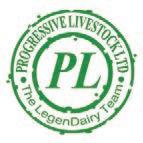
Vendor Agent Grant Aiken Ph 027 245 8821
• Northland Agent Cory Bellamy Ph 021 113 1968
Head Agent Stewart Cruickshank Ph 027 270 5288
Sabarr Trust
C/- Andrew & Sarah Barr 2129 Egmont Road OCC 26187
Monday 17th April 2023 10:30am Under cover
Comprising: 240 F14+ G3 Dairy Cattle
190 G3 x Elite Friesian Cows 2yr -8yr BW 118 PW 128
50 G3 x Outstanding Friesian in calf Heifers BW 170 PW 183 Vetted in calf 12/4/23 and D.T.C 20/07/23 to LIC Friesian - tailed with Hereford & Angus bulls until 31/12/22.
Rec 97%, SCC 93000 over the season, C10 TB status, Lepto vaccinated and BVD vat tested & all clear also all cattle have protrack EID tags.
Auctioneers Note
NZ Farmers Livestock are privileged to bring to the market the Barr families complete F14+ Friesian content of their herd due to changing farming policy. This is a 4th generation family herd, CRV breed for over 25 years with nominated sires, cows have been sire matched at mating avoiding inbreeding and maximising mating progress. These are milked at 1500 feet bordering the reserve under the northern side of the mountain, cows are breed for longevity & production. Cows will come forward in milk and in top condition, these are cattle that will shift and perform anywhere in New Zealand.
This sale will be livestreamed on mylivestock so get registered early to purchase online.
Free credit until 22/5/23, further finance available if required
Trucking from 18/4/23, new farm purchasers and shifting sharemilkers delivery 31/5/23 at purchasers’ risk, DCT to be given to cattle staying on farm.
Luncheon available
Catalogues available at NZFL office 06 765 6197 or mylivestock.co.nz.
Agent Simon Payne 027 241 4585 simon.payne@nzfll.co.nz
Vendors Andrew & Sarah Barr 027 454 8444
TE KUITI WEANER STEER & BULL SALE
Thursday 13 April, 12 noon start
We will be offering approx: 955 Cattle Comprising of

• 420 Wnr Angus strs
• 300 Wnr Exotic x Strs
50 Wnr Hereford Strs
• 100 Wnr Hereford Bulls
• 45 Wnr Angus Bulls
40 Wnr Exotic x Bulls
TE KUITI WEANER HEIFER SALE
Friday 14 April, 12 noon start
790 Cattle Comprising of
• 300 Wnr Angus Hfrs
• 150 Wnr Hereford Hfrs

290 Wnr Exotic x Hfrs
50 Wnr Hereford x Hfrs
Enquiries:
Kevin Mortensen (PGW) 027 473 5858
Brett Wallbank (NZ Farmers) 027 488 1299
Andrew Jardine (Carrfields) 027 397 7005
Helping grow the country
Wednesday 26 April 1.00pm
1524 Tauwhare Road, RD7, Hamilton 3287
Bidr Online Sale | A/C Dick & Faye Post Comprising 85 Head BW Ave 310:
The sale starts at Mt Aspiring Station and progresses on farm to the various properties concluding at JIT Hillend where the remaining vendors will offer their calves.
Approx.:
• 486 Angus & Angus X Steer Calves
• 108 Hereford Steer Calves
• 60 Simmental/Hereford X Steer Calves
35 Charolais X Steer Calves
300 Angus & Angus X Heifer Calves
• 123 Hereford Heifer Calves
• 40 Simmental/Hereford Heifer Calves
35 Charolais X Heifer Calves
Gerard Shea (PGW) 027 442 5379
Callum Stalker (RLL) 027 473 0846
Watch and bid from anywhere. For more info go to www.bidr.co.nz
NZ’s Virtual Saleyard bidr.co.nz
• 82 Jersey In-Calf Heifers, Ave BW 308 (BWs up to 436)
• 3 Jersey Carryover Cows, Ave BW 343 PW 379
Average liveweight of In-Calf Heifers 396kgs as at 15/03/23.
Complete offering had mating to AB then ran with DNA profiled Jersey bulls. Calving due to commence 15/7/23. Bulls out 22/12/23. Majority of sale animals are A2/ A2 profiled. Several females from the family of NZ record priced cow at $55,000 are being offered. Prior to its sale the herd averaged in excess of 400kg MS and 1900kg MS/HA. Closed herd since the 1960s the herd was fed silage, hay, maize and chicory all grown at home. TB C10, Lepto vaccinated annually but will not be vaccinated this year prior to the sale. Payment due 14 days from sale day.
Catalogues are available www.agonline.co.nz or contact the below selling agents.
Open day viewing for interested people: Thursday 20 April from 1.00pm.
Enquiries:
Andrew Reyland 027 223 7092 | Ben Gordon 027 270 7729
Brian Robinson 027 241 0051
Thursday 13 April, 7pm
Bidr Online Sale Only | A/C MJ &J Dickson
Herd comprising:
59 In calf Friesian & Xbred Heifers, Line BW 335 PW 333 (Top BW 435)
• 13 In calf Friesian & Xbred Cows, BW 306 PW 435
Animal Details
47 Heifers & Cows contract mated 2022
38 Heifers & Cows contract mated 2023
All animals are well grown and in very good condition. 3-Digit herd code. Mated from the 6/10/22 for 2 rounds of AI then tailed with DNA profiled high BW bulls. Only 9/72 head deemed not in calf to AI and have been identified as accurate as possible. A2A2 tested. Closed herd with heifers grazing on run-off.
Herd Facts
The herd was sold last season to a local farming family where they are preforming above expectations. Previously the herd had been in the Dickson family for over 60 years where they endeavoured to breed a medium sized capacious cow that was extremely quiet with very good dairy conformation. The AI companies have liked the strong maternal lines/families within their herd resulting in numerous bulls been selected. Last year the Dicksons in-calf heifers were sold on Bidr around the country with many good performance reports from purchasers. This is a unique opportunity to buy top genetics from genuine farmers that will give your breeding program a boost.
Payment
50% payment in 14 days | 50% payment 20 October, 2023
Open Day to view animals: Thursday 13 April.
110 Mangati Road, Puketotara. 12.00pm - Barbecue lunch.
Catalogues available on AgOnline or phone the auctioneers for a hard copy.
Enquiries:
Murray & Julie Dickson (Vendors) 021 790 840
Andrew Reyland (PGW) 027 223 7092
NZ’s Virtual Saleyard bidr.co.nz
Friday 14 April , 10.30am
245 Kakepuku Road - Te Awamutu
On Farm and Bidr sale | A/C David & Wendy Harker
Herd comprising:
• 140 In calf Friesian Cows (In milk)
28 In milk Friesian Cows (Empty)
48 In calf Friesian Heifers
• 47 Rising One Friesian Heifers
David & Wendy have made the hard decision to employ a 50% sharemilker next season and disperse the Westell herd across 2 sales on breeds. Mixed breeds sale will be held on 27 April. Goal has been to breed moderate size production cows with good udders and temperament. A range of both NZ and overseas bulls that tick the right boxes have been used. Farm is a system 2 with some in shed feeding and maize grown on farm. The cows have only been mated to AI this season for 11 weeks and carry an exciting array of valuable pregnancies including a selection of sexed semen. Most In calf heifers had the opportunity for AI for 3 weeks then run with G3 profiled jersey bulls until 22/12/22.
David and Wendy are passionate about their stock which will be presented on sale day in top condition. PGGW would advise farmers who enjoy milking quality open framed cows sired by the best bulls available combining both index and type should attend this sale and not miss this rare opportunity to buy top quality genetics that will boost your breeding program.
Catalogues available on AgOnline or phone the auctioneers for a hard copy.
Enquiries:
Wendy Harker (Vendor) 021 177 5289
Andrew Reyland (PGW) 027 223 7092 | Jamie Cunningham (PGW) 027 583 3533
NZ’s Virtual Saleyard bidr.co.nz
Tuesday 18 April ,11.30am
To be held at Morrinsville Saleyards
A/C Estate of DL Burgess – Te Aroha
Herd comprising:
470 Friesian, Ayrshire & Jersey In Milk & In Calf
Dairy Cows (Unrecorded)
This herd comes to auction due to our vendors selling the farm. They have been milked on a challenging farm beside Mount Te Aroha. Last season the herd produced 190,000 milk solids at the factory (372 m/s per cow). SCC 180,000, System 2-3, Rotary Shed. Over the years David always purchased top pedigree sires from wellknown studs throughout the North Island. Last 3 years Ambreed sires have been used. Calving commences 1st August with 300 Friesian/ Ayrshire cows mated to Ambreed 4 weeks (150 straws) (breed to breed) then tailed with Frsn bulls. 170 Jersey cows & 1st calving 2yr Heifers were run with Jersey bulls (bulls removed from both herds 16/01) scanned to dates. TB Status C10, EBL Free, BVD Milk tested clear. Cows will be sold in lots of 2 or 3 cows. If you are requiring extra cows these girls will shift.
Enquiries:
Allan Jones 027 224 0768
Regan Craig 027 502 8585

Along with calmer weather, the store market has reset to the point where it can be usefully assessed for pointers to the season ahead.
to assess how strong prices are and what we should expect going forward.


IT’S BEEN a game of two halves when it comes to this year’s store stock markets. In one corner you’ve had the North Island, where lots of rain has translated into lots of grass grown, sending the market into a buying frenzy over what’s been available. In the other is the South Island where it’s been the exact opposite, especially down south, with another dry season placing all the power with the buyers.

But all weather patterns come to an end eventually. La Niña, which was driving these trends, has slowly disappeared going into autumn and put the country in a more neutral state. Which is another way of saying the sun and the rain have been more evenly dispersed across the country and should stay that way for a little while longer yet.
The above, and a few cold mornings, have somewhat reset the store market in the past few weeks, which makes it a good time
When it comes to lamb, the store market in both Islands is paying 47-48% of schedule. For the North Island, that’s about typical for this point in the season, bar April 2020 when covid and drought made for a tough time for sellers.
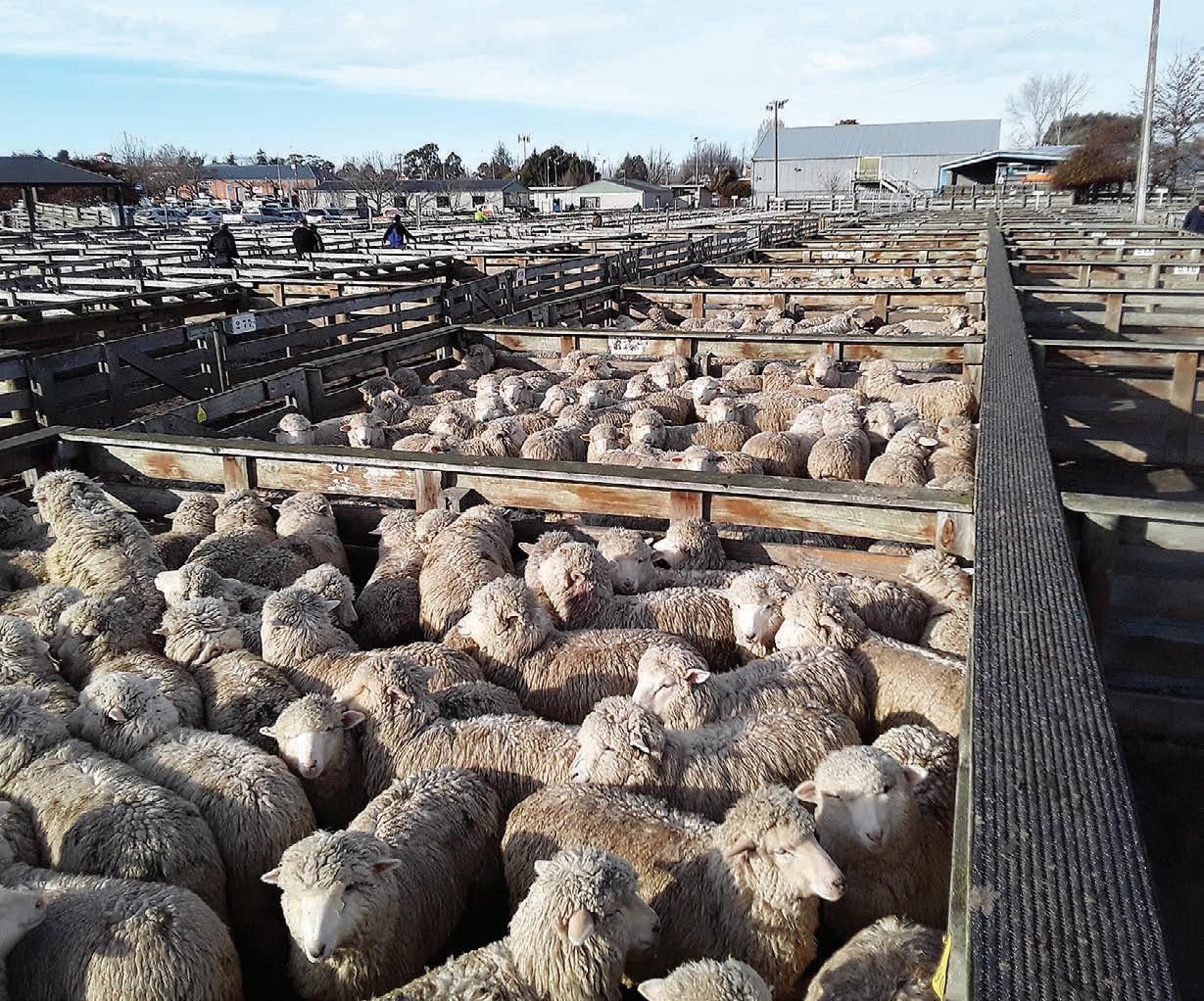

The main difference is this usually comes after a summer where lambs are relatively affordable, which was nowhere near the case this time around.
Summer lamb buyers are often choosing to do fewer trades and are instead taking lambs to heavier weights to reclaim a margin. This may have flow-on effects further into autumn if they’re out of the market.
This probably won’t warp prices to a massive extent, though, since lamb liveweights are above average, which will push a larger portion of lambs directly into the slaughter system rather than being routed through the store market first.
The short-term outlook for the South Island is stronger. Current
With a lot of South Island vendors selling early due to the dry summer, winter croppers have little choice but to compete over the few lambs that are yet to come up for sale.
pricing is a little higher than would usually be expected. But with a lot of vendors selling early due to the dry summer, winter croppers have little choice but to compete over the few lambs
that are yet to come up for sale. At least one slaughter contract for late-autumn/early-winter has been released, too, which is injecting a bit of confidence into the market.

When it comes to R2 straightbeef steers, the money for sellers is looking tidy when married up next to schedules. Even with the recent weakening in the North Island market, R2 steers are the strongest they’ve been at this point in the year for five years at 56% of schedule. Again, this comes after an extended spell where R2 cattle have been much less affordable than usual. So
while there may not necessarily be a big change in prices going forward, this makes it even more likely that prices will settle down further as we approach winter, something which is fairly standard through autumn.

It’s all quite similar in the South Island, where prices have been solid versus returns at slaughter, which will likely translate into a relatively normal run into winter for the store market – especially as good-quality straight-beef cattle have been hard to find for a while now, at least outside of calf sales where the market’s been strong as well.

The week may have been a short one, but it was extremely busy at saleyards. Along with extra weaner fairs and calf sales, the onset of colder temperatures has meant a flurry of older cattle and lambs to market in preparation for winter.
Weaned calves continued to sell at record levels on both islands and annual draft lines in particular are being well sought after as repeat buyers return. Feeder calf sales are also very positive and top Friesian bulls have sold in the $200-$300 bracket, while top exotic-dairy and beef-dairy bulls have made $390-$420.
Weaner Angus, Angus-Hereford steers, good
Weaner Angus, Angus-Hereford steers, medium
Weaner Angus, Angus-Hereford heifers, good
Weaner Angus, Angus-Hereford heifers, medium
Feilding | April 4 | 1620 cattle
Angus steers, 277-320kg
Angus steers, 190-246kg
Angus & Angus-Hereford steers, 256-263kg
Hereford steers, 224-267kg
Charolais-cross steers, 279-316kg
Charolais-cross steers, 219-256kg
Simmental steers, 309-326kg
Simmental steers, 235-283kg
Hereford bulls, 192-228kg
Charolais-cross, Simmental bulls, 312-319kg
Masterton & Martinborough | April 3 | 2650 cattle $/kg or $/hd
Weaner traditional steers, tops
Weaner traditional steers, medium to good
Weaner traditional steers, small to medium
Weaner traditional heifers, tops
Weaner traditional heifers, medium to good
Weaner traditional heifers, small to medium
Blenheim | March 29 | 982 cattle $/kg or $/hd
Weaner Angus steers, 308-340kg
Weaner traditional steers, 237-285kg














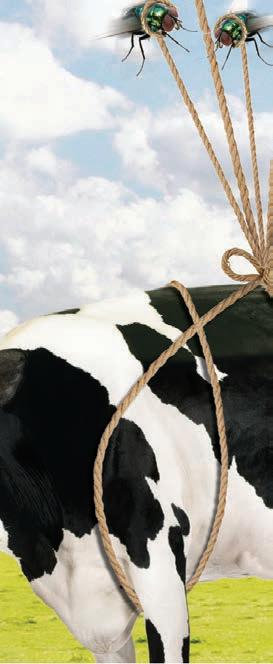














Insecticide


Don’t let flies take away all your hard work

Rip into nuisance flies, lice and ticks with the proven power of Ripcord®. Just one easy application provides long lasting protection from nasties around the herd and in the milking shed. And because Ripcord is MPI approved for use in dairy sheds, there is no milk withholding period. Ripcord is the perfect product to use.



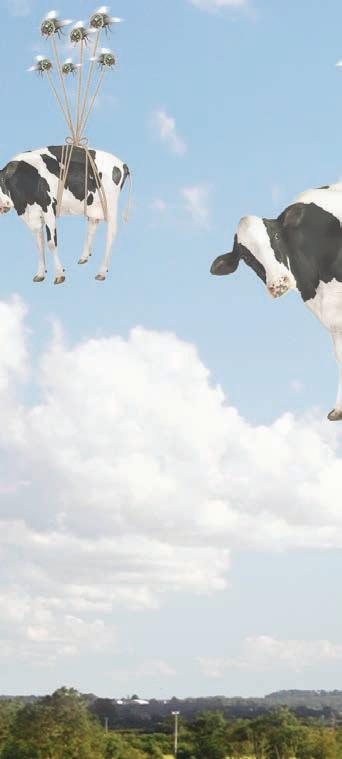



Don’t settle for fly-by-night treatments. Insist on Ripcord. Visit pest-control.basf.co.nz for more details or visit your local distributor.

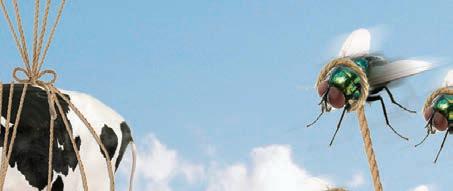
Data provided by
($/kgMS) Canterbury feed barley ($/tonne)
feed wheat ($/tonne)
Waikato palm kernel ($/tonne)



SOME people don’t like the term “Mother Nature”, but when you’re trying to explain the mood of the weather pattern sometimes it’s a great term to use – and at the moment Mother Nature is being reasonable, producing a mixture of high- and low-pressure systems around New Zealand and Australia, and that brings something most farmers enjoy: variety.
As we said last week, the “neutral” weather pattern we’re now in (since La Niña officially ended in March) means we are in a classic autumnal weather pattern. The variety is why we’re seeing some wet weather in dry regions and some dry weather in wet regions.
Another way to gauge the variety in our weather is to look at the public soil moisture map. This map – which showed most of the North Island in dark blue a month ago (indicating the soil was saturated),
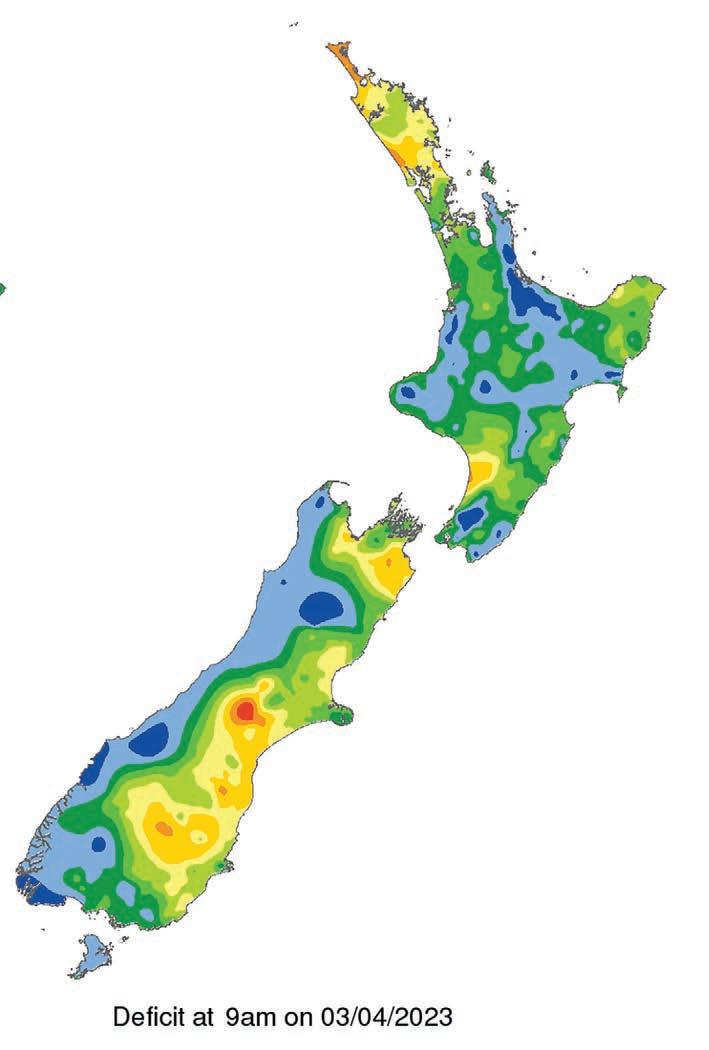
while Southland and the West Coast had red (indicating drier than usual) – now shows more of a rainbow effect across New Zealand, indicating that Mother Nature has applied a bit of a balancing act, and our April outlooks sees more of the same.

We also have a marine heatwave continuing along. This is unrelated to La Niña but the placement of highpressure zones over the start of 2023 may well have contributed to this marine heatwave (which is especially around the South Island).
A lack of big stormy sou’westers out of the Southern Ocean and an uptick in settled high pressure zones south of NZ and south of Australia have all played a role in this. Think of the sea as the bath and the warm tap has been running after the cold tap was on last year – a layer of warm on top of the cold.
What has been missing is the arm and hand in the bath to mix it all up. From a weather point of view this would be strong Southern Ocean storms sending up big sou’west swells into the South Island. Coupled with
colder air, this would all help be that “arm and hand” to mix it all up. This will likely happen in the months ahead but, for now, many coastal areas will be a little bit warmer than average at night thanks to this marine heatwave. In April it looks as though the South Island will be about 0.6degC to 07degC above normal, while the North Island is 0.4degC to 0.5degC above normal. It’s not huge – but it’s just enough to be noticed by some, maybe during nighttime.
Highlights this week


• This week kicks off with a large area of low pressure engulfing much of the Tasman Sea
• Milder northerlies for a time with some rain this week

• Another southerly arrives mid to late week

• Chance of another brief dusting of snow on the Southern Alps late week
• Warm for the eastern North Island (lows in the mid teens, highs in the low 20s)
• Rainfall normal or slightly above normal in many places

EVENING OUT: The rainbow effect across New Zealand shows that Mother Nature has applied a bit of a balancing act, says Phil Duncan.
